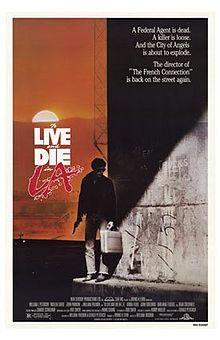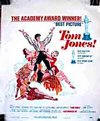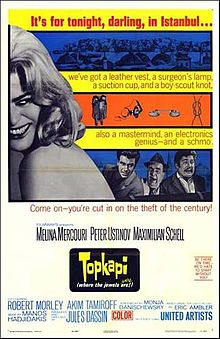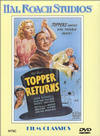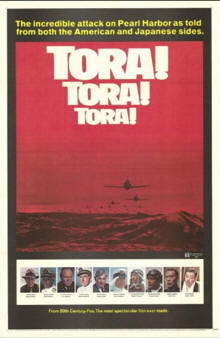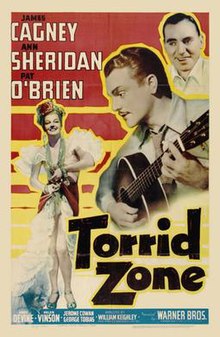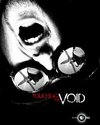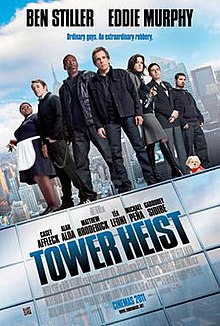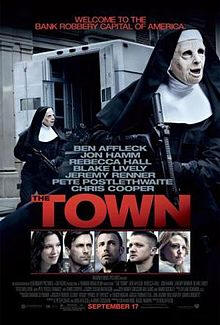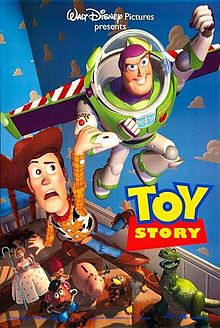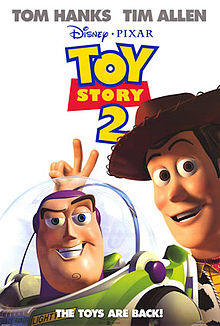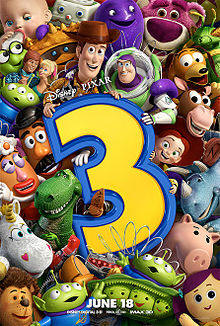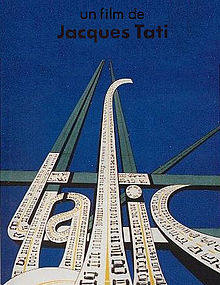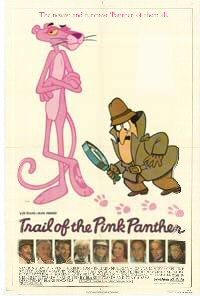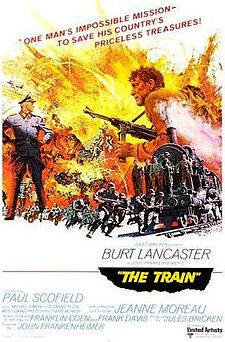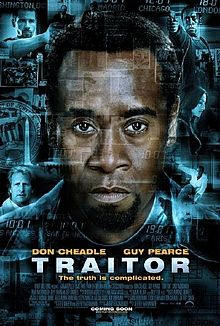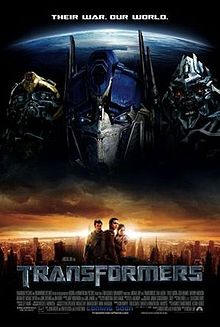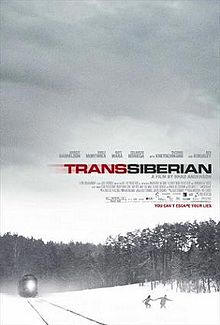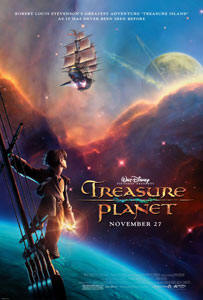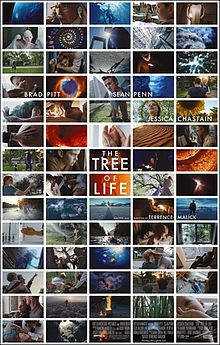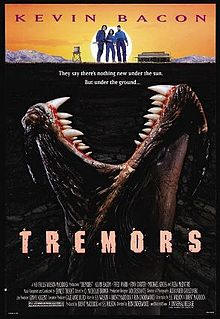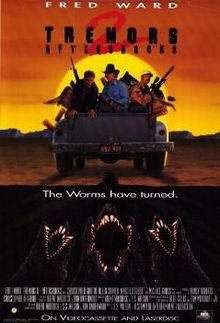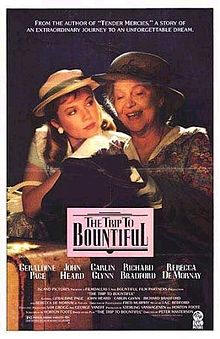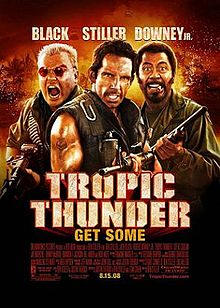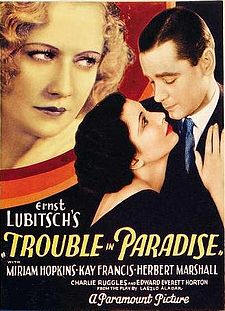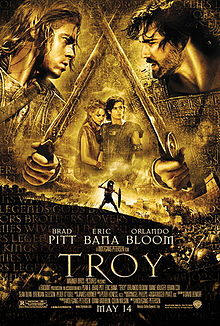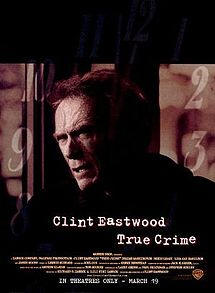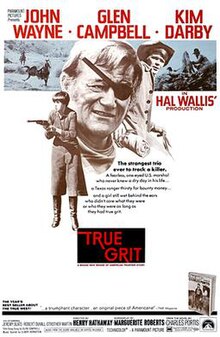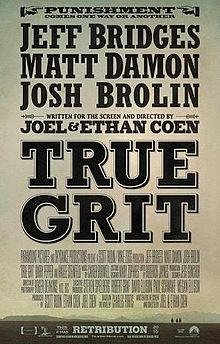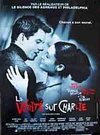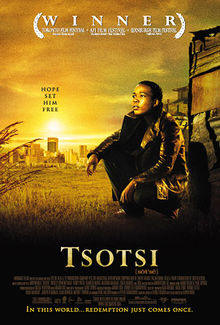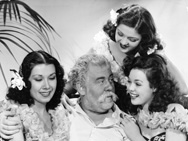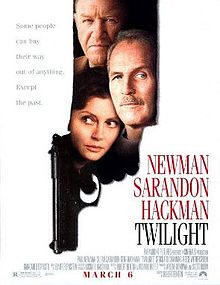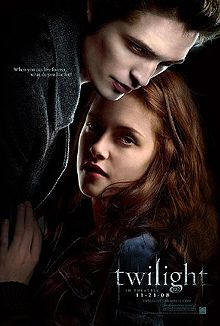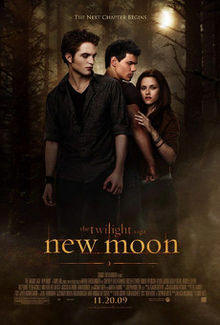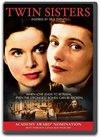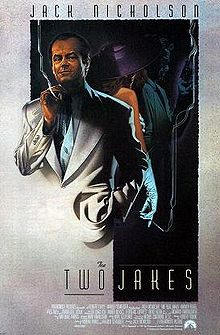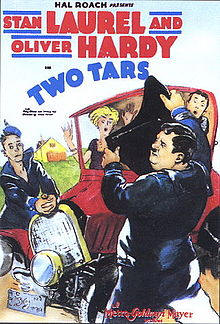|
Movies we've seen © 2004-2013 by John Varley; all rights reserved |
T
|
Tabu: A Story of the South Seas (1931) Our friend David Crosby’s father, Floyd, was a cinematographer. The IMDb lists 112 credits for him, from 1931 to 1967. Many if not most of them were for B movies, westerns and horror, and some of my personal favorites from my teenage years, like Beach Blanket Bingo, Bikini Beach, and How to Stuff a Wild Bikini. (Yeah, I know they were awful, and Annette was the teenage Doris Day and Frankie was a stiff, but I liked Eric von Zipper, and anything set in California with a lot of skimpily-clad babes looked okay to me, desperate to get out of small town Texas.) He shot some major films, like Oklahoma!, From Here to Eternity (uncredited, so he must have been the assistant), and High Noon. But the picture he’s remembered for is this one, that was shot in the South Pacific using only people native to the islands. It was co-directed by the great Robert Flaherty, who pretty much invented the documentary all by himself with Nanook of the North, followed later by Man of Aran (both are masterpieces), and F.W. Murnau, a crazy man responsible for Nosferatu. The story is that they couldn’t work well together, and Murnau edged Flaherty out. Whatever. What came out of it is some of the best B&W cinematography ever. (The story is fairly lame, but who care?) Floyd Crosby won the Oscar for Best Cinematography of 1931, only the fourth Academy Award ceremony. We’ve seen it at Croz’s house. They were smaller back then. Some critics are down on Flaherty these days because he violated the cardinal rule of documentaries: He staged scenes. Well … hell, there weren’t no rules back then, man! He was making it up as he went along. I’d like to see those critics go out on the ice with Nanook when it’s twenty below, carrying a huge camera and tripod and your precious film, and shoot the walrus hunt. Or go out on a flimsy boat with the men of Aran, and pull in a gigantic basking shark. Yeah, they hadn’t done it for 50 years, and the people of Tabu didn’t live like that, either, but these are all great films. IMDb.com Tae Guk Gi: The Brotherhood of War (Taegukgi hwinalrimyeo) (Korea, 2004) I learn that this movie is both the most expensive and the most popular Korean film of all time. $12,000,000 is hardly enough to shoot a one-minute commercial in Hollywood, but apparently Korean won go farther. Actually, that’s about 12 billion won. And they certainly got every won of it up on the screen. Literally a cast of thousands, huge numbers of explosions, lots of blood and dismemberment. And I can see why it would appeal to a Korean audience, as it is about the most honest and thorough account of the entire Korean War that’s ever been made. It is actually even-handed, in that it honestly shows that horrible atrocities were committed by both sides. The South was as fanatical about anti-communism as the North was about their insane version of Stalinism. And another thing: all the movies I’ve seen about the “Korean conflict,” as we call it, focus on Americans. Here, we never see an American. We know the marines have landed at Inchon, and we know they are retreating before the hordes of Red Chinese swarming over the Yalu River, but we never see them. So I wish I could say it’s a good movie. It’s not. It’s 2 1/2 hours long, and at least 2 of those hours are taken up with horrific combat scenes that always degenerate into prolonged fights with fists and bayonets, like a Kung Fu movie. Emotional scenes are stretched out 5 times as long as they need to be, and usually in an improbable zone of silence while battle rages but the people in the scene are immune to bullets. The story is puerile, and every cliché in the book is used, including the long, long, long run of the family at the train station as two brothers are shanghaied into the army, and a Mexican standoff with about a dozen guns. What it reminds me most of is Pearl Harbor, that bloated raft of movie clichés, with subtitles. IMDb.com Take Care of My Cat (Goyangileul butaghae) (South Korea, 2001) Five girls get out of high school and face life in the real world. The movie is mostly a character study, not a lot happens plot-wise, but I enjoyed it quite a bit. This is the 3rd Korean movie I’ve seen recently, and all are totally different. You may realize, intellectually, that places like Korea and Japan are very, very hi-tech, but it still comes as a surprise to me how plugged in these kids are. There is very little shown in the way of remnants of old Korean culture; you get the impression that in another generation it will be completely gone, totally westernized. But maybe not. See Spring, Summer, Fall, Winter ... and Spring. IMDb.com Take Me Out to the Ball Game (1949) The thinnest possible plot holds together a series of song and dance numbers by Gene Kelly, Frank Sinatra, Jules Munshin, Betty Garrett, and Esther Williams. (Right after this one the first four co-starred in the vastly superior On the Town.) Kelly and Sinatra are ballplayers who spend their winters as a vaudeville act. Yeah, right. Sinatra prefers baseball, Kelly prefers the stage. Esther Williams inherits their ball club. She and Kelly hate each other at first; naturally, they are in love by the third act. Sinatra finally falls for an aggressive Betty Garrett. That’s all you really need to know about the plot. I’m a big fan of musicals, but this one is very lame. I don’t care that much about the plot, I come for the song and dance, and neither really measure up. Kelly had a propensity at this stage in his career to … what’s the terpsichorean equivalent of over-acting? Over-dancing? That’s what he does here. And there was this rather cringe-worthy thing they had in the ‘40s of guys acting like children, making infantile rubber faces and “gay” (in both senses of the term), fey, feminine gestures. Makes you wonder what was being repressed that found its outlet in this embarrassing stuff. Sinatra (who, for a non-dancer, manages not to disgrace himself alongside Kelly) wouldn’t lower himself to this sort of antics, but Munshin’s entire career was based on silly crap like this which doesn’t hold up. Really, really dumb stuff. There is one long signature Kelly solo which is worth looking at; the rest is pretty bad. It was directed by Busby Berkeley, who did a lot better with the gigantic black-and-white extravaganzas featuring 100 babes in white gowns playing 100 white grand pianos. Some trivia: Most people today don’t know it, but Esther Williams was a monster star in the late ‘40s and early ‘50s. She was MGM’s top box office earner for several years. Then her numbers dropped and she was dumped, with no warning to her. When I was working at MGM a long-time employee told me a story about that. I can’t vouch for its authenticity, but I hope it’s true. He said the studio had laid out a big going-away party on the sound stage that contained her biggest indoor pool. All the brass was there, and the press, and stars. And she told her limo driver to go right past it all. At the studio gate she got out and thanked the security guard there, who had greeted her every morning when she arrived for work. And then she drove away, and never came back. I love that. Quote: “All they ever did for me at MGM was change my leading man and the water in my pool.” Also: Betty Garrett was a perpetual second female lead in big musicals of the era, until shortly after this film was made. Then the panel of traitors to this country known as the House Un-American Activities Committee (HUAC) called her and her husband, Larry Parks, an admitted communist, to testify. She never did, but he refused to name names, and that was enough to get her on the blacklist. She couldn’t work for a long time. The good news is she’s still alive, still making films with cult director Larry Blamire (The Lost Skeleton of Cadavra), while every member of HUAC is currently residing in Hell, where they are forced to watch the full 10-hour version of Erich von Stroheim’s Greed four times a day (days are longer in Hell) while being force-fed gallons of Pepsi, with no bathroom breaks. IMDb.com Take Shelter (2011) Michael Shannon is a blue-collar worker in Ohio who begins having very vivid, apocalyptic nightmares. They are so real that when a dog bites him in a dream, his arm hurts for days. His mother was diagnosed with paranoid schizophrenia in 1986 and has spent the rest of her life in an institution. Naturally, he fears he is going crazy, but he is so obsessed with his visions that thoughts of survival take over his life. He isn’t good at telling his fears to his lovely wife, Jessica Chastain, but he begins spending money they can’t afford to add to the tornado shelter in their back yard. He has a hearing-impaired daughter who needs a cochlear implant so they desperately need their excellent health care benefits, but his erratic behavior leads to him being fired. And then the huge storm hits … or does it? We have assumed he’s going nuts, but there’s that element of doubt. And I can’t reveal the ending, except to say that I found it puzzling, to say the least. Anyway, it’s not about that, but rather an excellent portrait of a family trying to cope with many things, mental illness being the rotten cherry on top. The writing and directing and acting are all excellent, as you would expect with those two headliners. The film is a great example of how the judicious use of quality special effects can enhance a smallish movie like this, and be much more effective than the blockbusters where every shot is SFX. The storms and the flights of starlings are awesome. IMDb.com Taken (2008) Second feature at the drive in with Knowing. IMDb.com Taken 2 (France, 2012) I was surprised to learn that this film is a French production. But don’t worry, it’s in English. I was in the mood for an action picture. I knew the reviews had not been kind, saying it was basically a remake of Taken, same plot line and everything. But I liked Taken, like Liam Neeson as an action hero. So I figured how bad could it be? Not bad at all, in my opinion. It’s all true there is the same basic story, but this time it’s his ex-wife and himself who are taken, and his daughter must help him get themselves free. She performs like a trooper, though she is terrified, probably reliving her ordeal of kidnapping, multiple rapes and brutality. He is incredibly on the ball, thinking fast in all situations, never hesitating, hard-nosed. You get in his way, you die. Simple as that. And in a way, what’s the problem with him having to deal with the same situation? This one grew out of the first, unlike all the Die Hard movies, where poor Bruce “just happens” to run up against a whole new set of villains in every one. It’s all preposterous, as any action movie of this size is, but I had fun, and there is at least a leavening of humor. Before the action begins, in Istanbul, Liam is obsessively spying on his daughter back home in Los Angeles, tracking with GPS, running background checks on her new boyfriend. He can’t help himself, he’s compulsive. At the same time he’s trying to help her pass her driving test, which she’s failed twice. He’s totally on edge when she’s behind the wheel, just the sort of parent who makes you more nervous than you ever were. So what happens when they get to Istanbul? Why, she ends up in the driver’s seat and suddenly she’s Danica Patrick, smoking the tires, doing bootlegger turns, streaking down the narrow streets, hitting everything in sight but still going. “I can’t do it!” she screams. “Do it,” he says. And she does it, whimpering but getting the job done in a hail of bullets. At the end there is a trail of wrecked SUVs and cop cars and the traditional fruit stands a mile long and she can finally stop. I turned to Lee and said, “She’s in a world of hurt now. She doesn’t have a valid driver’s license!” I have to give credit to the thinking he uses to tell his daughter how to find them. It all has to do with circles in a map, calculated by him while blindfolded by counting seconds and turns and listening to sounds. Then when they have stopped, a very ingenious thing. He’s talking to her on his hidden spy cell phone which the abductors haven’t found. He’s basically helpless, handcuffed to a pipe. But he has his daughter get out on the roofs and start setting off hand grenades. From the time they go off to the time he hears them is a certain number of seconds, which can be turned into a distance. Then you draw circles on a map, and soon two circles will intersect, in two places. He and the wife are at one of those places. Has to be. That’s pretty damn smart. He escapes, but can’t take his badly injured wife. He’s got too much killing to do. And he loses her, then uses another method to find her, one I didn’t believe in so easily. But it could work, I guess, and he finds her and resumes the slaughter. Because that’s what these revenge fantasies are all about. Slaughter. You set up some really, really bad men (usually extremely stupid bad men), they do something awful, and an avenging angel descends on them like the wrath of Charles Bronson. In this case, it ties into the first movie, where Liam's daughter was kidnapped and used in the white slavery trade. In the course of rescuing her, he kills at least ten men. Those men had relatives, of course, in Albania, and as they are being buried the father of the chief abductor/rapist/pimp vows revenge on Liam and his family. That his son was a total piece of shit doesn’t enter into it. I find these movies viscerally exciting, if they’re done reasonably well, and I think both of these were. Yeah, they’re straw men, easy for our man to knock down like ninepins. By my actual count, he kills 23 men (I don’t know just how many were in the two SUVs that crashed and burned, but I counted those as just two dead, a driver and a gunner). At last Liam finds the “mastermind,” the last man left of his small army, has him with a gun to his head. I wanted him to say “So, how’s the revenge thing working out for you, you Albanian fuckhead?” Liam isn’t that bad, of course, he kills only when he has to to save his family. But it’s what I would have said. I’m meaner. But he stays smart right up to the end, giving the idiot a chance to walk away if it can all end here. Like everything else he has done, the mastermind fucks it up. Which is interesting, because one of the reasons Liam wanted to end it is that the mastermind has two sons back in Goat Turd, Albania, and they will probably come looking for revenge. Taken 3? I’d advise against it, but we’ll probably see it. IMDb.com Taking Chance (2009) An HBO movie. If you have a sentimental bone in your body, this short movie will make you cry. Like most humans, I have 206 bones, and at least 205 of them are sentimental slobs who will weep at the drop of a hat. (One bone is hard-hearted enough that it didn’t even cry when Old Yeller died.) Naturally, I was tearing up before the first five minutes were done, and the hardest parts were yet to come. On the other hand, if you have a brain, this movie will make you so angry you will want to string certain people up from the nearest tree. Sad: I don’t know what the Army and Navy do, but if you are a Marine and are killed in action, your body will be escorted by another Marine from the moment of your death until you are laid in the ground. This movie follows one Lance Corporal, Chance Phelps of Wyoming, from his death (which we do not see, but only hear the sounds of combat) to his home. Along the way we see the humane and tender attentions paid to the body at Dover Air Force Base (where until recently our government has shamefully hidden it all away behind a “no photographs” policy). It will break your heart to see the body being prepared, cleaned of blood and dirt, dressed in the finest uniform with brasswork meticulously polished. (We never see Chance’s face, only his uniform and hands.) Then Lieutenant Colonel Michael Strobl (Kevin Bacon) takes over, shepherding the cardboard box with the coffin inside through airports and onto and off of hearses, at each stage rendering military honors. It is not usual for a colonel to take on this duty. Strobl did it because the boy (he was 19) was from his home state … and from guilt feelings because he was not over there in Iraq, but safe at home with his wife and children. All along the way he is amazed and moved by the solemn respect shown by ticket clerks, baggage handlers, cabin attendants, and passengers. (I’m tearing up as I write this.) Then he arrives at the small town in Wyoming … You can imagine it from there. I can’t write about it through the tears. It made me proud to be an American. Though opposition to this obscene Iraq war runs strong and deep—nowhere deeper than at our house—I have yet to hear of any war opponent attack the soldiers and marines who are fighting and dying. There have been no shouts of “baby-killer,” no uniforms spat upon. (If it did happen, the spitter would swiftly get the crap beat out of him, and I wouldn’t lift a finger to stop it.) I think everybody recognizes that those boys and girls were thrown into a situation not of their making, and have been mercilessly overworked and scandalously ill-equipped and poorly provided for by the profiteers for whose benefit the whole insane project was undertaken. These young people signed up to defend America and its ideals (many of them in the wake of 9/11, as my dad’s generation signed up after Pearl Harbor), only to be blown up in under-armored vehicles by angry men and women conducting guerrilla warfare, and to see those ideals undermined and subverted by cynical men back home. I recognize that not all those serving over there see it that way, that many if not most believe in the mission, but that’s okay. They need to believe that in order not to despair, as Vietnam soldiers often did, and so they can believe that their comrades who have died didn’t die in vain. I believe that the passage of time will teach them a bitter truth. And that may be the most evil legacy of all the evils left to us by the Bush misadministration. How will we ever raise a military as passionate and committed as the one we had in August, 2001, after they have been once more thrown into a fight that was sold under false pretenses, by lying politicians? Is there an inexhaustible supply of naïve young men and women who can be herded into line with a call to patriotism by those who don’t know the meaning of the word? … sadly, that may be the case. Anger: Well, you know who you are, you Masters of War. At one point Chance’s mother says that, though she tried to dissuade him, she is glad that he went. It’s hard to fathom for someone like me, but I think what she meant was that he wanted to be a Marine more than anything else in the world. I don’t understand that, either, but I know there are such men and women, and I’m glad there are, because the world is a dangerous, nasty place, and when the shit hits the fan, as in Pearl Harbor, we need people who are willing to go and put their bodies between us and the nasty people … because I sure don’t want to do it. So she meant that, if he hadn’t joined up, he would have spent the rest of his life feeling a shirker and a failure, and that’s no way to live. Being killed by a piece of shrapnel to the head so that your casket is closed at your funeral is no way to die, either, in my opinion … but he seems to have been happy up to that moment. Who am I to say he was wrong, that he shouldn’t have gone? Those that sent him, however, knowing full well that the reasons they had concocted to sell the war to people like Chance and his family were lies, lies, and more dirty fucking lies … well, it just makes me want to explode. The invitations to Chance’s memorial service asked that, instead of flowers, contributions should be made to a fund that was providing Kevlar vests to our troops in Iraq. Can you fucking believe that? That the families, the families of those who died, have to pay for their own armor? Donald Rumsfeld, you murdering fuck, you who said “You go to war with the army you have …” grinning, grinning, joking, you’re a lotta laughs, Donald … you didn’t put your pint-sized hide into an unarmored humvee, which is all we had, did you, Don? [The letters of condolence Secretary of Defense Donald Rumsfeld sent to the Phelps family were signed by a machine! How fucking disrespectful is that?!!!] George W. Bush, you murdering fuck, where were your hard-partying daughters while patriotic families like the Phelps’s paid the price? And most of all, Dick Cheney, you murdering fuck, you had “other priorities” when it came time to pick up a rifle in Southeast Asia, didn’t you? Better men than you died, and then when you were an old murdering fuck, you sent even more young people to die where you should have died, on the battlefield, in defense of your right to torture prisoners. That’s all. I can’t go on. Blood pressure soaring … IMDb.com Taking Lives (2004) I didn’t care for Angelina Jolie at first. I try very hard not to let my feelings about an actor as a person affect my feelings about the art. After all, what do I really know? Gossip, that’s all. That’s all you know, too. The impression we get that we know famous people is an illusion, always, unless you have met them in person, and even then you can get blindsided by hero-worship and what you think you know. But AJ seemed like a real flake, often in the news for the wrong reasons. Her stormy relationship with Billy-Bob, the rumors of incest. Go to the IMDb and check out the list of her tattoos. Weird. And what’s the deal with those lips, anyway? So I didn’t really pay much attention to her, dismissed her as a lightweight. She’s grown on me. I may even rent one of the Lara Croft movies. She was deliciously cool in Sky Captain, and she’s very good in this. The movie itself is a turkey, no question ... but it’s a well-cooked turkey, the stuffing is exquisite, the cranberry sauce piquant, even the yams and mashed potatoes are piping hot. So the ending sucks. Okay? So don’t say I recommended it to you. But Lee and I both observed something: a creepy scene is made twice as creepy with the music of Philip Glass behind it. That guy is worth the money. IMDb.com The Taking of Pelham 1 2 3 (2009) Second feature At the Drive In with The Ugly Truth. The Taking of Pelham One Two Three (1974) As I write this we are two days away from the release of the remake of this classic. I just had to see the original again, to refresh my memory about how good it was. Maybe the new one will be good, too (though I’m not optimistic, from the preview I saw), but I will guarantee you this: It won’t be as good as this one. More action packed? No question. In the original, a police car goes out of control, rolls over, and skids a ways on its roof. In the preview I saw a police car roll over at least 12 times before even touching the ground, and then fall off an overpass, if that wasn’t enough action for you. More in-your-face? Pretty much a certainty. Robert Shaw is controlled menace. He never so much as raises his voice, and yet he exudes danger. John Travolta, who takes Shaw’s part, looks like a loud-mouthed, psychopathic, show-off thug. Oh, well. We’ll see. What I hadn’t remembered is how funny it is. Not funny all the way through, of course; the scenes in the captured subway car are very intense. But everywhere else it’s an inspired cast of New York characters, wisecracking, mordant, never seeming to take anything too seriously, always ready to face a new disaster, knowing that a new one will always come in this crazy town. And for once, Walter Matthau doesn’t get all the best lines, as he did in movies like The Odd Couple and The Fortune Cookie. He is the calm center around which all these maniacs revolve, and he does a terrific job of it. I love Denzel Washington, but I seriously doubt he can top this performance. IMDb.com Taking Sides (France/UK/Germany/Austria, 2001) The story of the post-war questioning of Wilhelm Furtwangler, a famous German conductor who may or may not have been a Nazi collaborator. He’s not as well-known as Leni Riefenstahl, probably because he died in 1955. The theme is much like Vonnegut’s Mother Night: be careful what you pretend to be. But Vonnegut’s story was much better. I ended up more sympathetic to Furtwangler than to his interrogator, played by Harvey Keitel, who bullied and manipulated like the Gestapo. The whole movie seemed muddled, didn’t come down on one side or the other. That can be good, I don’t need a pat answer, but this seemed simply confused rather than thought-provoking. IMDb.com Taking Woodstock (2009) A little over 40 years ago 50 million people gathered in a cow pasture about 90 miles northwest of New York City for the Woodstock Music and Art Fair. Or at least that’s how it seems, when you consider all the people who claim to have been there. I was one of the 500,000 who actually was there, for the whole thing. There has been a lot of discussion about Woodstock during the 40th anniversary, and a new movie, Taking Woodstock, which we just saw. I find I’m not capable of writing a simple review of the film. There is just no way I could bring even a hint of objectivity to such an essay. To me, the film and the event—having been there, having seen it—are inextricable. So if you are much older or younger than me, you may see an entirely different movie than the one I saw. My opinion? A remarkable film. I was teary-eyed with Boomer nostalgia through much of it. They did such a good job of recreating the look and feel of the place, it’s almost as if they took cameras back in time. For what it’s worth (“Something’s happening here, what it is ain’t exactly clear”) I really think it was a good film from any perspective, recreating an era and telling a good story, one of 500,000 stories that could have been told, but definitely one of the more interesting ones. So what is my story? I’ll get to that. But there are a few other things first … ● ● ● Recently Bill Maher had a little schtick during the New Rules segment of his show, delivered in his patented snarky manner:
You’re a very funny man, Bill, and I’m a big fan. I laughed. And you know something? Though I’m not going to be the one who “admits” that Woodstock sucked, you have made some very valid points. All you have to do is look at the footage of the place to realize that it was a disaster in many ways. We were miserable some of the time; wet, hungry, in real danger of e. coli if people didn’t stop shitting in the lakes. (Most of us didn’t have any other place to shit.) One more day and it could have been really, really ugly. But when I say you made some points, I don’t think you realize that some of them were not the points you intended to make. For instance: So far as I know, nobody has yet stepped forward to say Woodstock sucked. Why is that? Out of 500,000 wet, muddy, hungry sufferers, don’t you think at least a small minority would have stepped forward by now, 40 years later, to say it sucked, if it in fact did suck? You say that Woodstock is the next-to-last place on Earth you’d want to be. And I say you are either a liar, just saying that for an easy sarcastic laugh, or you don’t know yourself very well. You were thirteen when Woodstock happened, in the seventh grade, too young to just pick up and go, even though it was only about 80 miles up the road from your home in New Jersey. (I’ve done some research on you, Bill.) If you had been even seventeen, my man, you would have gone. The moment you heard that chicks were bathing naked in the lake, you would have slogged through 80 miles of mud, e. coli, and Sha Na Na just to be there, and been happy for the privilege. Don’t deny it, dude, I know you hang out at the Playboy Mansion, and nobody goes there for Hef’s company. Aside from that, it was clear to everyone who was there and everyone of my generation who watched the coverage on TV that this was the place to be. This was the center of the counter-cultural universe. Anyone with an ounce of awareness, given the chance to go, would have gone. You just happened to have been born at the ass-end of the Boomer generation, you missed out by just a few years, and now you’re telling yourself you would have hated it because you are jealous. You may not even know it, but you are. We were young, okay? Privation and inconvenience, dampness, mud, and lack of toilet facilities aren’t such a big deal when you’re twenty, especially if there’s good music just down the road, and good dope everywhere. You’re 53 now, and I’m 62. Recreating the experience today would probably kill me, and would certainly be as unpleasant for you as you imagine it was for everyone. But if you had been twenty, my friend, if you had been twenty in 1969, if you are half the man I think you are, you would have found a way to be there, and you would have loved every fucking minute of it! Just like I did. I think that, on some level, you know that. So get over it, okay? It was your misfortune to be born on the cusp of the generational change, from us obnoxious Baby Boomers to the let-down generation, Gen X. (Actually, I just learned that you unfortunate in-betweeners, born from 1954 to 1965, are called Generation Jones. It seems to come from the term “jones,” meaning a yearning or craving.) What you were yearning for was to be born a few years earlier, to be a part of the most privileged and spoiled generation in the history of America. I will be the first to admit that we Boomers are gigantic pains in the ass. Time and again we have remade society in our image, for our convenience, and we will do it until we’re in the grave. This is not always a bad thing: We were a major force in the Civil Rights movement, and the females among us pretty much invented second wave feminism. But we also spawned the Me Generation by spoiling our kids even more rotten than we were spoiled. You poor Jones and X and Y-gen schmucks are now faced with the task of taking care of us in our old age, and the price is going to be enormous. I wouldn’t want to be in your generation for anything. No wonder you’re pissed off, no wonder you take it out in bitter tirades against something your generation never had, never could have had, something that will never be seen again. Another thing I recognize is that the Woodstock Nation, in its purest form, only lasted 111 days, from August 18th to December 6th, when Hell’s Angels beat a man to death in front of the stage at the Altamont Free Concert. That remarkable sense of community we had in that muddy field in New York couldn’t be sustained. Soon, the Haight-Ashbury—my home for several years—was awash in drugs, and our musical heroes were killing themselves as fast as they could shoot up. The war went on, the Weathermen started bombing things … it all went to Hell. So sad. But we did make some improvements in the world. We did leave a legacy. You say that the only place worse than Woodstock was Woodstock ’99, and that reveals something else. Your generation, and the ones that followed, are the ones responsible for that monumental clusterfuck. That was your nation. People didn’t bring enough food to Woodstock ’99? No problem, you could buy a warm Coke for $4, a slice of rubber pizza for $12. The whole terrible, commercialized, packaged, shit-music thing was pretty much a production of MTV (debuted in 1981, when you were 25, a clear Jones Generation invention), the single most important factor in the degeneration of Rock into the sad thing it is today. A band called Limp Bizkit sang a sweet little song called “Break Stuff,” and the 200,000 people responded by burning everything in sight, raping four women, vandalizing, pillaging, and … well … breaking stuff. Say what you will about Arlo Guthrie and Country Joe, they never urged a boozed-up audience to riot. There were ATMs at Woodstock ’99, and still the toilets overflowed. My generation invented rock and roll. What did your generation give the world? Punk. My generation included the Beatles, the Rolling Stones, Bob Dylan, Joni Mitchell, and Crosby, Stills, and Nash. What did your generation give us? The Sex Pistols, Dead Kennedys, and the Butthole Surfers. They say you are what you eat. You are also what you listen to, and those names say it all. We had our tragic deaths, no question. I won’t try to blame your generation for gangsta rock, but take a look at some of today’s musicians: 2Pac, Notorious B.I.G., Big L, Proof, Freaky Tah, Soulja Slim, Mac Dre, Yaki Kadafi, Scott La Rock, Jam-Master Jay, Stretch, Bugz, E-Moneybags, Charizma, VL Mike, Half a Mill, Fat Pat Dollah, Camoflauge, DJ Uncle Al, Big Hawk, Seagram. I have only heard of a couple of these people—most of whom sound like they should be characters in a parody Looney Tunes cartoon—but all of them were well-known to those who enjoy rap music, and you know what they all died of? Lead poisoning. Shot to death by rival “artists.” Say what you will about Sha Na Na, they never went gunning for the Jackson Five. Another thing, I won’t pretend to be is knowledgeable about today’s music. I gave up on pop songs a couple decades ago. But what I do overhear is usually either violent, monotonous to the point of psychosis, or over-engineered treacle. My generation wasn’t responsible for that. Enough of that, Bill. I doubt you would admit to jealousy, and who gives a shit, anyway? The fact is, Woodstock did not suck, not even a little bit. Eat your fucking heart out. * * * I’ve told my Woodstock story many times, to the point that some of those near and dear to me are probably tired of hearing it. There is an account of it in my book, The John Varley Reader. But I must make one more brief trip down the muddy Woodstock memory lane because of a resonance I felt in this new movie that I am ostensibly reviewing here, Taking Woodstock. The story centers around the experiences of Elliot Tiber, and in most ways our experiences couldn’t have been more different, but in one way … We ended up at Woodstock—my girlfriend, her infant son and I—because we were fleeing New York City in a 1955 Buick with only a little gas in the tank. We were fleeing because we were unable to find an apartment. It wasn’t a matter of finding one in our price range, it was finding one at all. The housing market was tight. People read the obits in the Village Voice and the other papers, and scrambled to be the first at the apartment of the deceased. We decided the Big Apple was too rich for our blood, and headed up the Thruway. We were aware there was some sort of festival happening, but we didn’t know where it was. Where it was was where we turned off the Thruway looking for gas. We burned up what little was in the tank idling on a road that was totally gridlocked. Finally, I had to turn off into a field where a lot of other cars were parked, and that was that. No gas anywhere, no cars moving. We were locked in for the duration. We were lucky to have some food in the car, and water, and cigarettes. My girlfriend was on crutches, unable to walk very far, and certainly not in the mud. Her son was about 18 months old, just getting toilet trained, thank heaven; no dirty diapers to worry about. But I couldn’t just leave them and hare off to the stage, which was about three or four miles away. Didn’t seem right. So my Woodstock Festival was spent in that muddy field, grooving with the other people around us. Except one day when I made a pilgrimage to a little store where there was a line about two hours long to get cans of tomato soup, beans, some powdered milk, things like that. They had sold out several times but managed to get fresh supplies in now and then. (They didn’t gouge, like some area residents. They sold the food for what they had sold it for before the invasion.) That expedition took me close to the stage, and I detoured to the top of the hill and spent a short time there, looking down at the vast sea of people and the tiny stage far in the distance. I could hear the music for the first time. I don’t even remember who was playing. Then I left. That was my Woodstock Concert. And you know what? I don’t regret it. The music was only part of the experience, and for me, the lesser part. I will use a trite word here and say it was the vibe! Everyone was so happy, so cool, so friendly, so sharing, so … well, stoned, many of them, and me too, a lot of the time. Elliot Tiber’s experience was vastly different from mine. He was there before the beginning, deeply involved in bringing the festival to the area when the original venue chickened out. He worked with all the people who organized the thing. He was in the center of things, and I was far, far out on the periphery. But he only got to the actual music once, and it was from the top of the hill. There, he listened to some music, dropped acid with some people in a VW van, and then never went there again. And the movie reflects that. There’s not much of the concert shown. So, in a strange way, I feel that the movie was showing my Woodstock. I know this might be a problem for people who went to the movie expecting to see a lot of recreations of the performances of the stars who played, but this lack of focus on the music endeared the movie to me. Like I said way back up there at the beginning, it is impossible for me to write an unbiased review of it. I flat-out loved this movie. I want to see it again, right now. I’ll buy the DVD. IMDb.com The Talented Mr. Ripley (1999) My first experience of the amoral and oddly sympathetic Ripley. I have the greatest respect for Patricia Highsmith, and intend to read the books very soon. Highly recommended. IMDb.com Tales From the Script (2009) Everybody knows the director. Thanks to the French, who came up with this crazy idea that the director is the author of the film, they are almost as big as the stars. But there are four other people who are responsible for how a movie looks and works: the editor, the cinematographer, the production designer, and the writer, and of these the most important is the writer. (I know, I’m prejudiced, but the fact is that until the writer puts words on paper, you have nothing. Just a lot of hot air blown back and forth by a lot of people who couldn’t create a picture if their lives depended on it.) This movie could form the third leg of an excellent trilogy with two other films we’ve seen: Visions of Light, about shooting the film, and The Cutting Edge: The Magic of Movie Editing. (I think someone has made a movie about production design, but I can’t recall the title.) This is not great film-making. It is the ultimate talking-head movie; aside from a few clips from movies about screenwriting, it is nothing but talking heads. But what heads! Front and center is the most successful writer working today, the great William Goldman (there is even a featurette about him in the DVD extras), but there are dozens of others, great and small. Many of them have written movies that I consider to be pretty awful, but no one is precisely ashamed of this—something that, as the author of a pretty awful movie, makes me feel pretty good. As Goldman says, “Nobody sets out to make a turd.” But there are so many ways a jewel can become a turd … IMDb.com Talk to Me (2007) I never really know how much is true in these biopics “based on” the life of a real person. I usually assume that the broad strokes are mostly accurate, though details may be omitted for dramatic reasons. This story of the career of Ralph “Petey” Green, a ground-breaking black disc jockey in Washington, DC, in the late ‘60s and into the ‘70s, for instance, never mentions his three children. And I am very dubious that he got his job when he and his sponsor, Dewey Hughes, locked themselves into the broadcast booth and did a show while station management pounded on the (partly glass) door in anger. True or not, it makes a good scene. But these pictures do give you a sense of déjà vu, don’t they? Start from nothing, get somewhere through brashness, have woman troubles because you can’t keep from fucking around, get in trouble with alcohol and/or drugs … you take it from there. If Petey was blind, it could be Ray Charles. In Petey’s case it was liver cancer that ended the story early, though it was probably a race to the finish with lung cancer, as he was a chain smoker. And just because a movie is formulaic doesn’t mean it can’t be enjoyable. This one is, mostly because of the great performances by Don Cheadle, who has impressed me again and again in very different roles, by Chiwetel Ejiofor, who I was amazed to learn is British, and by Taraji P Henson, very good as Petey’s wife. It was directed by a woman, Kasi Lemmons, which is still rare. Even rarer, she is a black woman. There is a good DVD extra with the production designer and the costume designer. Petey and his wife were snappy dressers, by the standards of the time … and lord, do you remember those insane outfits from the ‘70s? The costume lady had her work cut out for her, and so did the wigmaker. Taraji Henson’s hair kept getting bigger and bigger, until it threatened to engulf her! IMDb.com The Tall Guy (1989) I’m keeping a list of under-appreciated films and this one is going right on it. One day when I get around to it I will publish the list. It came and went with some good reviews, but it deserved better. It’s Emma Thompson’s first movie (she had worked seven years in television), and stars Jeff Goldblum as an American actor working in London. For five years he’s been second banana to a truly terrible (from what we see of it) stage comedy show, where he is the constant butt of slapstick jokes from the great Rowan Atkinson, who is one of the funniest men in the world but knows how to play bad, both as a comic and a human being. Jeff meets a nurse and falls in love. He’s so shy he endures six months of allergy shots before he dares to ask her to dinner. She says she prefers to spend the night first, then have dinner. What follows is on one of the most boisterous, funniest sex scenes ever made. They virtually destroy her apartment. Later he gets the starring role in the musical version of The Elephant Man, called simply Elephant. It’s the funniest stage production since The Producers. But “Springtime for Hitler” was lampooning a whole different era of Broadway. This one takes on the “serious” musical, like Miss Saigon, Les Misérables, and most of all, Sweeney Todd. Now, I love all three of those, but I can admit they walk a fine line between solemnity and preposterousness. This one is preposterous from beginning to end, made even funnier by the dead seriousness of the cast. The last sung line is, “Somewhere up in heaven there’s an angel with big ears!” Here, Joseph Merrick actually has a little elephant trunk, and there is a dance number with a dozen men in brown suits and elephant heads, tapping their toes and waving their trunks. Hilarious! I loved this movie. IMDb.com Talladega Nights: The Ballad of Ricky Bobby (2006) VarleyYarn. IMDb.com Tangled (2010) There’s a short list of movies that I will remember for their sheer visual beauty. Films like Barry Lyndon and Baraka and Days of Heaven and An American in Paris and Ran and Across the Universe. I can now add this one to the list. It is computer animated, but the color palette is outrageous and the textures are amazing. The animators wrote some new programs to attempt to capture the sort of lush detail in the works of rococo painters like Fragonard, particularly his best-known piece, “The Swing.” I think they succeeded marvelously. Some of it also reminds me of Maxfield Parrish’s dreamy visions. The story is good without being remarkable. It was rewritten and retitled a few times, bringing up the role of Flynn Rider, the sassy, irreverent rogue who narrates the picture, in an attempt to bring in the teenage male audience. They already figured they had a lock on the girls, particularly the younger ones who spend billions to become Disney Princesses, of whom Rapunzel will be the tenth (plus three unofficial princesses: Alice, Tinkerbell, and Esmeralda from The Hunchback of Notre Dame). I hate to see plots driven by merchandising considerations—and I frankly doubt the dude drew in all that many teen boys—but I have to agree that his street smarts provided a good contrast to the naïve princess who has spent all her life in a tower, with her most exciting activity being the growing of her magical, prehensile hair. She reminds me of Ariel, from The Little Mermaid, in that she is avid to see the world and endlessly fascinated by it. She’s spunky, when she isn’t suffering from manic-depressive bouts of anxiety from disobeying the evil woman she thinks is her mother. The music is okay, highlighted by “I’ve Got a Dream,” where a bunch of thugs in a lowlife tavern sing of some of the surprising things they’d really like to be, if they weren’t thugs. It reminded me a little of Gilbert and Sullivan, “When a Felon’s Not Engaged in His Employment.” While all the scenes are beautiful to look at, one stands out. Literally thousands of little hot air balloons are released with candles inside them, and swarm over a lake and castle. It’s a magical Disney moment. IMDb.com Targets (1968) We rented this because we had just seen Easy Riders, Raging Bulls on video, and it was mentioned as Peter Bogdanovich’s first movie. It has an odd history. Roger Corman told Bogdanovich he could make a film but he had to use Boris Karloff because Karloff owed him two days’ work, and he had to use some stock footage from The Terror, an awful grinder from 1963 that starred Karloff and, looking very callow, Jack Nicholson. (Did you know Roger Corman has 353 producer credits at the IMDb? I wonder if anyone has ever produced so many—mostly awful—movies?) They combined it with an inspiration from Charles Whitman, the Texas Tower Sniper, and came up with Targets. It’s maybe a B+ movie. That means, its low-rent roots certainly show, but it is also clear that Bogdanovich had more going on than most of Corman’s crew. The ending is actually quite well done. IMDb.com Tarnation (2003) This film goes directly onto my list of scariest films of all time ... and it’s all true, not a drop of blood or an act of violence in it. A gay man named Jonathan Caouette grew up in Texas in a family that you’d need to invent a new word for; dysfunctional just doesn’t cover it. His mother was subjected to years of shock treatment and a lithium overdose, and is now a giggling, bipolar, delusional horror show. His grandparents who raised him are pretty scary, too. By the age of 10 he is acting out amazing psychodramas for his movie camera, and making weekly suicide attempts not much later. Somehow he struggles through all this, and is managing to live an almost normal and very productive life. The technique here is almost as important as the ghastly story. It is a filmic collage of pictures, film clips, voice recordings, and music. Astonishingly, it was made entirely on a Mac, with free software, for what the director claims was a total of $218. (It took about a hundred grand more to clear the rights on all the music and clips, and make a theatrical release print.) It is a kaleidoscope of images, it employs ALL of the techniques that annoy the hell out of me and Lee when used in other contexts, just to show off, but here it all works. Most directors shake the camera just because they think it’s cool. Caouette does it to indicate disorganization, madness, chaos, which is what his story is about. But it is all under total control. IMDb.com Tarzan (1999) Saturday Night at the Toons! IMDb.com Taxi (2004) Going to double features, we end up watching a few movies we wouldn’t even have rented, the reviews were so bad (see White Chicks). Metacritic gave this one a 22, just about the lowest score I’ve ever seen. It wasn’t low enough. The premise of the movie seems to be that cars going very fast is funny. Ha. Ha. Jimmy Fallon is an utter stiff, no discernable talent at all, Queen Latifah has nothing but attitude, nothing is even faintly believable. See, Jimmy is a incompetent cop who can’t drive. He stumbles onto a bank robbery being pulled off by 4 Brazilian super-models, which gives us the chance for the second un-funny fast car chase in the first 30 minutes ... at which point we conducted a poll of the occupants of the car, found that neither of us had laughed, neither of us had even smiled, turned on the car and drove away, the sound of idiotic dialogue still playing over the FM radio like something you’ve stepped in and can’t get off the bottom of your shoe ... and I’m not talking about bubble gum. IMDb.com Taxi (2004) Double feature with Friday Night Lights. IMDb.com Team America: World Police (2004) Lee was extremely dubious, I wasn’t sure what to expect. In the end, it just didn’t quite work. There are basic problems, and the biggest is that the puppet stuff wears pretty thin after about 30 minutes. I got tired of looking at the blank faces. Sure, they’re more expressive than Howdy Doody, but not much, and they all walk exactly like Howdy. There are some very funny moments, and the production design is awesome. A lot of work went into the incredibly detailed sets. I’m happy a lot of puppeteers and model makers got a lot of work, but this is an experiment that’s not worth repeating. It wasn't THAT bad. Maybe it's opposing expectations: Varley expected to like it and didn't, while I expected to HATE it... Anyway, the huge liquidy eyes made up for the lack of expression. The puppet sex was a little stiff. IMDb.com Tears of the Sun (2003) Tears of the ticket-buyer. IMDb.com Ted (2012) Mark Wahlberg is like Peter Pan, he never grew up. But never growing up in James Barrie’s world and never growing up today are two completely different things. Today it involves drinking a lot of beer, farting a lot, sitting on the couch with your asshole buddies and acting gross. Mark’s asshole buddy is Ted, who is a teddy bear. When he was eight, he made a wish and his teddy bear came to life. This is all dealt with in the first five minutes in narration by Patrick Stewart; his parents are frightened and horrified for one brief scene, and after that it is accepted that this miracle has happened. Ted appears on Johnny Carson in an amazing bit of CGI trickery (Carson: I thought you’d be bigger. Ted: I thought you’d be funnier.) The world knows about him, so no one remarks about seeing a teddy bear walking down the street. He is not a freak show. But as Stewart notes, “In the end, whether you are Justin Bieber or a talking teddy bear, a time comes when nobody gives a shit.” So Mark is 35 now, and has been living with his girlfriend (Mila Kunis) and Ted for four years. And Mila is getting fed up. It’s like living in the dorm room of two pot-head slackers with no ambition whatsoever. They both smoke a lot of dope, and Ted brings home hookers four at a time. Mark keeps promising to reform, and then Ted tempts him with something and he goes back to his old ways. They made a solemn vow to be best buddies forever, and it’s hard to break a promise like that. To her credit, Mila understands this, but of course it will eventually have to come down to a him or me situation. I was surprised how much I liked this. It is funny, and gross (as even G and PG rated comedies are these days; I don’t have a problem with grossness, mostly, though some films these days test my limits), and surprisingly sweet without raising my blood sugar alarmingly. There are hilarious cameos by Tom Skerritt and the wonderful Norah Jones (daughter of Ravi Shankar) as themselves. Seems Norah had a red-hot sexual relationship with Ted in the past. There is a man, the ultimate collector of sports memorabilia, who has Lance Armstrong’s nut on display, which he had bronzed. (Remember his testicular cancer?) Mark looks at it and says, “Well, sometimes you feel like a nut.” And from some elephant’s boneyard of has-been talentless actors they have dug up Sam J. Jones, who starred in that horrible Flash Gordon movie back in 1980. Mark and Ted are huge Flash Gordon fans, and to them, Jones is God. I never recommend comedies because we all laugh at different things. I only report whether or not I laughed. I laughed. I guffawed. I even chortled. Many times. IMDb.com Teeth (2007) I browsed some reviews, and culled these opinions as to just what the hell kind of movie this is: Teenage horror-movie spoof, John Waters parody, No Nukes protest movie, twisted sex-education film, quasi-feminist fable, outrageous stunt, cheap gag, macabre coming-of-age story, Cronenbergian body horror story, some kind of token of female empowerment, the Incredible Hulk of sex satires, an anti-date movie, the most alarming cautionary tale for men with wandering libidos since Fatal Attraction, a smart and creepy fable, a black comedy, a drama about teen angst, a romance gone bad, a B-grade horror film, an allegory about female empowerment, a deranged version of Clueless, a slasher picture, a faith film, a social satire, a teen romp, a '50s atom bomb monster movie … So what the hell is it? It’s the story of a high school girl who gradually and painfully discovers she is not like other girls, in that she has teeth in her vagina. Sharp ones. This is apparently a very common theme in many mythologies, and even has a name, “vagina dentata,” for reasons of dark Freudian neurosis I will leave the reader to ponder. However … she gets over the horror when she realizes she is rape-proof. In fact, we could easily imagine her in a sequel, a sexual vigilante, leaving a trail of John Wayne Bobbitt stumps in her wake. The movie is very well made for a novice director (Mitchell Lichtenstein, son of the famous pop artist Roy Lichtenstein), though some might find the early pacing a trifle slow. I prefer to think of it as deliberate. The camera lingers here and there, but usually for a reason. I had no idea what to expect, going in, as all I knew was the basic premise and that someone had described it as a feminist horror movie (though the gore is moderate by today’s standards, and mostly near the end). That’s the empowerment part. The girl, Dawn, soon discovers that she can make the decision to bite or not to bite. If you’re gentle with her, she digs sex … but you don’t want to piss her off! As you might expect from all the descriptions above, the film also tries to morph from one sort of movie to another, sometimes two at a time, and it’s not always successful in that. The parts that work the best are the very black humor … and yet, because of a wonderful performance by Jess Weixler (who I predict will go places, and soon) it can also sometimes be emotionally affecting, to my considerable surprise. Just imagine how you’d feel the first time this happened to you. What kind of freak am I? The answer she comes to accept is, the kind of freak you don’t fuck with. Literally. I’m giving it a marginal thumbs-up, as E&R would say. I suspect some people will dig it more than I did, and some people will absolutely hate it. I came across a line in a Village Voice review that is so good I simply have to pass it on: “I love the thought of Lichtenstein at the pitch meeting: ‘It's Jaws meets The Vagina Monologues!’” IMDb.com Tell No One (Ne le dis à personne) (France, 2006) This is based on a novel by Harlan Coben, one of the very best thriller writers working today, and they got it right! Coben wisely sold it to French producers instead of feeding it into the Hollywood meat grinder and stupidity machine, and they have done a superb job. The plot is so convoluted that I’m not even going to get into it, but it is full of surprises, plot reversals, and at its core is that good old reliable favorite Hitchcock theme: the man wrongly accused. There is a very good chase scene, on foot, across a busy freeway. Every character is finely drawn and interesting in his or her own right. From time to time it may be a little hard to follow—Lee and I had to discuss a few plot points afterward—but it all seemed to work out, more or less. I recommend this one highly. Footnote: The man who plays the hero, François Cluzet, is almost a dead ringer for Dustin Hoffman, with a touch of Peter Sellers thrown in. IMDb.com The Tempest (2010) This has never been one of my favorite Shakespeare plays. I’ve probably only seen it twice, in competent but not outstanding performances. Partly I’m just not enchanted by all the sorcery stuff. I’m a lot happier with the other dramas, and some of the histories. So, although almost no critic I looked at loved it, I have to say I did. For the first time I felt really involved in the story, and cared about the people in it. It goes without saying that a Julie Taymor film is going to be visually stunning, and this one is, having been shot on Lanai, which has never really been in a film before, since it’s a private island. And there are very effective special effects. Ariel really is a sprite, a thing of the air and water, never really there completely. And all the actors in the smaller parts are quite good. But once again here’s a picture that belongs to Helen Mirren. (Did you know her real name is Ilyena Lydia Vasilievna Mironoff?) By changing Prospero (a nasty old gent, in my opinion) to Prospera, Taymor radically changed the whole slant of the play without in any way doing violence to the story or the language. Yes, it’s cut a lot, but it’s hard enough to make a Shakespeare film at all, and just about impossible to do it uncut. Three hours? No way. I thoroughly enjoyed it. IMDb.com Temple Grandin (2010) I first became aware of Temple Grandin from a friend, John, who had a teenage autistic son. That boy must be in his thirties by now. At that time the awful bullshit known as “facilitated communication” was all the rage. John didn’t believe in it, and it’s been conclusively proven to be just another false hope. (Autism seems plagued by shit like that. Currently, it’s the vaccination scare, such that even though the one completely bogus study of twelve children has been debunked, people still cling to the pseudo-science and refuse to have their children vaccinated. I only wish the whooping cough could be visited on those idiot parents instead of their hapless kids.) TG’s story is almost too incredible to believe. First, she had wonderful luck, because she was born into an age when autism was largely a mystery and her chances of institutionalization were virtually 100%. One of the most awful characteristics of autism is failure to bond. Autistic kids don’t want to be touched, much less hugged, and don’t like making eye contact. If they haven’t bonded, the culprit is obvious. The prevailing theory said that the mother hadn’t given them enough love. Of course, the mothers had done nothing of the sort and this was obvious to anyone who looked into it, but why let something like that spoil a good theory? Grandin’s luck was in having a mother who didn’t buckle down to this nonsense, and fought for her daughter’s freedom. It was hard; Temple didn’t speak until she was four. After that her behavior was often bizarre, as these people tend to be. They don’t have the software in their brains that enables most of us, without any effort at all, from the very cradle, to distinguish human emotions from facial expressions. The human face is fairly simple, but the variations are endless, and an eighth of an inch movement at the side of the mouth can be the difference between a smile and indifference. We speak of the Mona Lisa’s enigmatic smile; TG would not even be sure she was smiling. And she wouldn’t care. She is a terror at anything scientific, she is a bona fide genius, but she can’t really relate to other people, and has stated that she finds conversation and pretty much any human interaction (except about science) boring. Second, she had boundless determination. Try to imagine earning a bachelors, then a masters, and finally a PhD when you are subject to almost constant panic attacks. The world is too loud and too bright to autistics. She invented machines to help her through this horror. Today, she takes drugs that have evened her out quite a bit. She doesn’t act like what is portrayed in this movie. She describes it as a miracle. But in interviews she has said that Claire Danes absolutely nailed her behavior and speech as a young woman. I’m so happy to hear that because, even without TG’s endorsement, I felt sure this will be one of the most powerful performances of 2010. They could start engraving her name on the Emmy right now, as far as I’m concerned. The film is wonderful, and gives a good alternative to the Rain Man picture of autistic people. There are many, many good scenes, but the one that knocked me out was when she was attending a conference about autism around 1980. She stood up to speak, and at first these people (mostly mothers) didn’t realize she was autistic. Then, they were stunned when she told them she had a masters in animal husbandry. These were women who had probably been told there was no hope for their children, and that it was their fault, and who struggled every day to give their children some degree of socialization. Imagine the hope they must have felt to see this funny-talking, awkward, but obviously whip-smart young woman who was succeeding in the world. You must see this film. It is playing now (2/9/10) on HBO, but if you can’t see it there, rent the DVD. IMDb.com Ten Canoes (Australia, 2006) Here is a movie in the Ganalbingu aboriginal language, with an all-aboriginal cast. It is a simple tale, simply told, though fantastically photographed. Don’t expect great acting, these are all non-professionals. But there is a great deal of humor in it, and the fascination of seeing a way of life so different from ours it might as well be another planet. I was reminded a bit of Atanarjuat (The Fast Runner), set in a radically different place, with an all-Inuit cast speaking Inuktitut. What did they have in common? Well, for one thing, these Stone Age people were doing pretty well in an environment that would have killed me in 24 hours. Probably less, in the case of the Inuit, though the Australian bush held dangers we didn’t see much of. For instance while filming it they employed 11 people whose only job was to be on the lookout for crocodiles, which frequently eat humans in this part of Australia. IMDb.com Ten Days Wonder (La Décade prodigieuse) (France, 1971) Claude Chabrol is often called the French Hitchcock, though his themes are a lot deeper than sheer suspense. He’s made some really good films, but this isn’t one of them. It is stagy, almost operatic, but not in a good sense. Orson Welles mumbles his part, and Lee and I were both distracted by the spectacle of his nose, which seems to be made of gray putty. Tony Perkins gives his standard wacko performance. The story is by Ellery Queen, not my kind of writer. In the end it adds up to very little. But oddly, it is the photography I hated the most. All the colors are wrong, too bright, too saturated, I don’t know the exact term, but it all looks like one of those low-budget Hammer or American-International films of the ‘60s, maybe directed by Roger Corman. And almost every shot was done with a zoom lens! There was a brief period around there when good zoom lenses first became available for Panavision cameras, and some directors couldn’t resist them. Bob Fosse used them entirely too much in Sweet Charity. A zoom shot is not a dolly shot, but directors liked them because you didn’t have to lay a lot of camera track like you do with a dolly shot. Thank god they’re over that now. They make a professional production look exactly like a cheap 8mm home movie. IMDb.com Ten ‘til Noon (2006) Here’s a no-budget indie that succeeds for most of its 80 minutes by putting most of its creativity into an area so often neglected by its big-budget cousins: The script. It’s the same story told from different viewpoints, and with that sort of tale you always think first of Rashomon. If you’re not that much of a film student, you might be reminded of Pulp Fiction. But while Kurosawa’s masterpiece concerned the differing points of view of the characters and Tarantino’s story wound around a set of events, this one examines just ten minutes in time. Quite a challenge. Every ten minutes the clock is reset, and we learn a little more about what’s really going on. The tension builds wonderfully. We get six of these iterations … and then we go beyond noon, and I’m sorry to say the writer didn’t know how to get out of the box he had built in a satisfactory manner. But he sure had me going up to that point. The acting is very good, from a lot of people you’ve never heard of, but may, someday. I was most impressed by Jenya Lano, as the enigmatic Ms. Milch, of whom the IMDb has almost nothing to say except to list her credits (mostly TV and no-budget indies). I wouldn’t be surprised to see her make it big … or not. It’s a cruel business. IMDb.com The Tenant (Le Locataire) (1976) Most critics loved this, but there were a few dissenters. Ebert gave it one star. I don't know if I'd go that low, but this isn't one of Roman Polanski's best. It's not Pirates but it's a long way from Rosemary's Baby. One of the problems is that he made a total masterpiece on the same theme: somebody going crazy in a small apartment. That was Repulsion, one of the best psychological thrillers ever, right up with the best of Hitchcock but more modern. Another problem is that it's boring, and too long. And it has one of the lamest endings I've ever seen. Don't bother. IMDb.com Tender Mercies (1983) I’d forgotten how good this was. One of the better original screenplays ever written, by Horton Foote, who adapted To Kill a Mockingbird. Robert Duvall deserved his Oscar. He did his own singing—and he’s pretty good at it!—and wrote two of the songs. This is a Texas movie. Most of the people in it are not talkative, but they make every word count, and so does the writer and director, Bruce Beresford, an Aussie, if you can believe that. It’s only 85 minutes long, and so every scene counts, too. At one point Duvall and Tess Harper (who is also very good in an underrated performance) are considering marriage. Next thing you know, they’re married, and it’s okay, we didn’t need that scene. Much more effective is seeing Duvall baptized, full immersion, in a church just like the one my granddaddy attended. Duvall plays a musician whose success was ruined by his alcoholism. He kept on writing songs, and now he’s thinking about a comeback, but he’s frightened of it, too. At the end we should see him either fall off the wagon, or make it big … in a conventional movie. This movie doesn’t fall into that trap. We’re left to wonder, and to root for him. This was Ellen Barkin’s second major role, after Diner, and she’s good, though miscast as an 18-year-old. She was actually 29. IMDb.com Tension (1949) We open with Barry Sullivan looking right at the camera and talking about tension. He’s got that cynical, noir cop smirk that says he’s seen it all, and very little of it has fooled him. He’s stretching and releasing a thick rubber band, and talking about how, when looking at a suspect, he increases the tension. Slowly, slowly, until it becomes unbearable and the palooka or dame breaks down and spills his or her guts. It’s a pretty good scene, as we are getting a little tense ourselves, wondering when the damn thing is going to break. Then snap! So next we get Richard Basehart as the perfect schnook, a pharmacist who is married to a brassy slut he worships. Naturally, she is pretty much flaunting her whorish nature right in front of his bespectacled eyes. You wonder how she ever hooked up with him. It’s very much like poor old Elisha Cook, Jr., in Kubrick’s The Killing. He tries to please her, but she’s not having any of it. Then one day she leaves him. He follows her to the Malibu beach house where she’s shacked up with a muscled hunk. He confronts them, hunk beats the living shit out of him. He decides he has had enough, and vows to kill the hunk. He thinks he’s being oh-so-smart, planning it all, but he’s pathetic. He’s going to be about as hard to track as a three-legged cow. He gets contact lenses (and still looks exactly the same as he did), rents an apartment under an alias, moves in next door to Cyd Charisse (who doesn’t dance a step; what a waste), who instantly falls for him, and he for her. (He for her, and who for he? And tea for two … sorry.) He makes it to the beach house and is within an inch of making a huge kabob of the hunk with a barbecue skewer … and decides he can’t do it. Tells the hunk to forget about it, he can have the damn slut. So the next morning it turns out somebody did skewer the hunk, only with two slugs from a .38 … and now all the plans he made point directly to him as the slugger! Cute. No one will have any trouble guessing who actually plugged the hunk, but how the cops bring the suspect down is the nice part. It really is good police work, the cop really is as good as he brags he is. Audrey Totter, who specialized in “bad” girls (and is still alive at 95!) does good work here. If you weren’t sure she was bad, a jazzy alto sax theme comes pouring through the door every time she enters a room to remind you, courtesy of Andre Previn. Must mention an uncredited role that I spotted about halfway through. My old, dear, deceased friend, Peter Brocco, has about four lines as a police forensic scientist. I was proud of spotting him, because his face is mostly in shadow, I never saw him full on. I pegged him from his profile and his voice. Miss you, Peter. IMDb.com The Terminal (2004) A good, solid piece of what they used to call Capracorn. A decent man is trapped in a no-win situation, makes the best of it, is rescued by the friends he has made along the way. Tom Hanks is as good as he always is. I almost wish I hadn’t known that the vast terminal of the story was actually one of the larger movie sets ever built. That meant that, because I’m fascinated by the nuts and bolts of how movie magic gets made, the day-to-day hard work that is involved, I was continually looking around in the backgrounds, the ceilings, watching the set and the tides of extras necessary to bring this movie to life. I found myself thinking like a line producer, which is the guy who is actually there at the front lines making it all happen, as cheaply as possible, as opposed to the names on the screen who are really back in Hollywood writing checks and making more deals. It must have been a real bitch. So much of the set had to be “practical,” that is, actually working, and most of it had to be built in great detail, not just to look realistic from a distance. Many scenes were shot with the vast, teeming terminal in the background, and every time you see that you know there are assistant directors hidden just out of sight, stopwatches in hand, telling the extras when to enter so all the shots will match. Then the director yells “cut!” and “get ready for take seventeen!” and everybody goes back to their places and starts all over again. One bright spot: companies will gladly build a store for you and stock it, all for free, just to get their trademarks and logos and products in a major motion picture. There were many dozens of shops here, so many that Spielberg had to make the providers agree that they understood there was no guarantee their brand-name would appear in the movie at all, if it edited that way. They were still glad to oblige, and many of the restaurants had actual working kitchens, which must have come in handy when it came time to feed all those extras ... IMDb.com Terminator Salvation (2009) First feature At the Drive-In with Ghosts of Girlfriends Past. IMDb.com Terribly Happy (Frygtelig lykkelig) (2008, Danish) I always tend to think of Scandinavian countries as liberal, liberated, clean and orderly without being Germanic, full of happy and attractive fair-haired people. Stieg Larsson disabused me of that picture in Sweden, and now Henrik Ruben Genz has shattered my illusions about Denmark. Actually, I really knew better if I thought about it. The fact is that all countries apparently have their small-town, small-minded country people. Here, a cop from Copenhagen has been banished to the countryside in the south as punishment for some “terrible thing” he did. It’s a while before we learn what that was, and I won’t reveal it. The people of this small town reminded me a lot of the closed-off, rather mean people in the Cornish town in Straw Dogs. The cop becomes involved with a flirtatious and possibly extremely disturbed woman who is being beaten at home. That’s about all I can say about that, because the movie was not what I had expected, and has several surprising twists. It reminded me very much of Blood Simple. It’s not quite as good as that, but it is very good. IMDb.com The Terrorist (Theeviravaathi) (India, 1999) The “Cause” (unspecified; just a generic Cause) needs to assassinate an important politician in (some generic third-world country). The Fearless Leader can’t be bothered with sneaking up on the sonuvabitch and shooting him himself, so it is decided that a foot soldier should deliver a suicide bomb. Five young women are eager for the job. They are between 17 and 20, and each of them has already gone through 10 times more agony and seen 10 times more horror than I have endured or seen in my 61 years. Malli, the girl who is picked, saw her brother die. She is a fierce soldier; she kills two men in the first 4 minutes, with a pistol and a machine gun. Later, she hacks a soldier to death with a machete. She is taken to a farm house to be trained, and to wait for the right moment. Training is a breeze, anybody could do it, even the Fearless Leader. But they shouldn’t have given her all that time to think … You may think that someone willing to walk into a public market filled with women and children, wearing 20 or 30 pounds of plastic explosive mixed with nails and other goodies strapped to his or her waist, is the lowest form of human life, but you’d be wrong. There is a form of human life lower than that. Lower than actual suicide bombers, pedophiles, serial killers, lawyers, and congressmen. Lower than members of the New York and California legislatures. I’m speaking of the people who wind up these “bombs with brains” and point them at their targets. I can think of nothing lower … or more cowardly. You can wait for the day you hear that one of the “leaders” of one movement or another has blown himself up, and you will wait until the universe burns itself out. They are yellow-bellied cowards to a man. Given the opportunity to put a gun to the head of one of these monsters and blow his fucking brains out, I would not hesitate a tenth of a second. The director of this film was very wise in his choices. The country where this story takes place is never named. We don’t know if the insurgents we are seeing are of the left or of the right, and they are not fighting for any identified religious cause. It just isn’t necessary. It would have been easy to make the terrorists Muslims, because the vast majority of these atrocities are perpetrated by Muslims (though suicide bombing seems to have originated with the Tamil Tigers in Sri Lanka). But all these guerilla wars are the same, in the end. It is quite likely that the Cause these people are fighting for is a just one, that the people they are fighting are oppressive scum. Usually they are. (However, my reading of history tells me that, in the vast majority of cases, a revolution merely leads to the replacement of one set of scum with another set of scum, and the new scum is often worse than the old.) And yes, there is no real moral difference between a truck bomb or suicide bomber and a high-tech jet raining indiscriminate death on villages full of civilians. Revolutionaries are always underdogs, they don’t have air forces or standing armies, they are forced to use low-tech, down and dirty tactics. But I don’t want to debate all that, and neither does the director. It seems to me that there is a discernable difference between a general sending his troops into battle (and make no mistake, if there was a button on my desk here that would result in the instant death of all generals, everywhere, I’d break my finger pushing it) and a revolutionary convincing a young person to blow herself up. This film looks at what it might be like to be primed and aimed like a guided missile. It stars Ayesha Dharker, who we first saw in a nice little film called Outsourced. The two films and performances could hardly be more different. This one unfolds at a dreamy pace, and is gorgeously filmed. As for the end … does she, or doesn’t she? I won’t reveal it, and will only say that it ended pretty much as I had expected it to, but that isn’t a bad thing. IMDb.com The Testament of Dr. Mabuse (Das Testament des Dr. Mabuse) (German, 1933) What a history this movie has! Fritz Lang made it, and then had to submit it to Joseph Goebbels of the brand-new Ministry of Enlightenment and Propaganda. (Hitler had come into power only three months previous.) Goebbels told Lang that the film could not be shown in Germany because it showed how a single individual could rock the State to its foundations. (Something that was proven beyond doubt on September 11, 2001.) However … Hitler liked Lang’s style, and wanted him to go on making movies for the Third Reich. I can imagine Lang’s—a Jew—response: “Sure, Joe, that’s swell, Joe.” Whatever he said, he left the room and went pretty much directly to the train station, hied himself to France, and didn’t return until the war was over. Thereby certainly avoiding a bit of unpleasantness known as the Holocaust. (This story may be a lie, but I don’t care. Sometimes a lie is better than the truth.) This was the second of three films Lang made about the criminal mastermind, Dr. Mabuse. The first was silent, in 1922: Dr. Mabuse the Gambler. Later, in 1960, his last film was The 1000 Eyes of Dr. Mabuse. I’m betting that a lot of comic book writers saw these films, because Mabuse is the archetype (Moriarty notwithstanding) of the man who does evil just for the sake of evil. Any of Batman’s or Superman’s enemies probably studied at Mabuse’s feet. His schemes involve breaking into a bank and substituting counterfeit for genuine currency, to destabilize the economy, or blowing up a chemical factory just to kill a large number of people. He has access to lots of money, but he doesn’t do his crimes for profit, but simply to be a mean motor scooter and a bad go-getter. He is called a criminal, which he certainly is, but the word we would use today is terrorist. Unlike today’s mass murderers he has no cause other than nihilism, but that’s good enough for me. He just wants to fuck things up. He is slightly handicapped by being incarcerated in a mental hospital! But not to worry. He is such a master hypnotist that he can dominate his loyal henchmen by remote control. They are terrified of him, and though they may gripe about how much money they could be making, no one dares object. In his cell, he is frantically writing out his “testament,” a bible of how to pull off terrible crimes. His power is so great that he takes over the mind of the head headshrinker. Even when he dies, he is still in control. Now that’s a devotion to evil that would give Lex Luthor or The Joker pause! The film looks great, and the acting avoids the depths of manic gesticulating that dominated German film-making only a few years before. The character of Mabuse’s nemesis, Herr Inspector Lohmann, is very well written and played by Otto Wernecke. There are thrills and perils and shootouts, and it all climaxes in a terrific explosion and fire in a factory, which I at first thought was a model, but isn’t, and a really good, for its day, nighttime car chase. IMDb.com Texasville (1990) Considering that the book this was based on was not very interesting, I didn’t have high hopes, and I was right. It’s pretty bad. Which is a shame, as Peter Bogdanovich accomplished something that’s pretty rare by getting all the major cast members from The Last Picture Show back together, almost twenty years later. (Both Ben Johnson and the character he played were dead.) The problem is that all these people who were so interesting when they were just getting out of high school are now just middle-aged schlubs and I have no interest in them whatever. Duane has gotten rich in the oil business, but the price of crude has plummeted and he now owes twelve million dollars. He doesn’t seem to care, and neither do I. He’s married to the only interesting character in the movie, Annie Potts, and they have three children, all of whom should have been drowned at birth. They’re all bored, and what is worse, boring. They meander through life having affairs that are even more boring than they are, and there are so many characters who are not developed very well that I had little idea who was fucking whom, and didn’t care, anyway. They all gather every day at the Dairy Queen and the Kwik-Sak and get caught up on everyone else’s affairs. Poor Sonny is losing his mind, sitting in the ruins of the Royal picture show and watching movies only he can see. Filming this in black and white, like the original, might have helped; at least it might have given the movie some atmosphere, but nothing could really have saved it, as Larry McMurtry wrote a boring novel about silly, shallow people. The movie lumbers along for two hours, and at the end Duane’s kids break into an egg truck and there is a big egg fight that I guess was supposed to be comical, but is just dreary. The whole scene reeks of desperation. In my review of The Last Picture Show I said that Anarene was not actually Hell. Twenty years later, it is. IMDb.com Thank You for Smoking (2005) This is the smartest, funniest movie I've seen in a long time. I love satire, and I have always liked stories about amoral rogues. This guy isn't in the league of The Talented Mr. Ripley, but he's a lobbyist, flack, and spin doctor for the tobacco industry, and he likes his work. He could sell ice to Eskimos, or convince you that fire is cold or water is dry. It's the debate he loves. Ripley will kill you with guns and knives; Nick Naylor will destroy you with arguments. He'll have you thanking him for your little case of lung cancer. And he'll have fun doing it. The dialogue here is so sharp you can cut yourself listening to it, particularly between Nick and his only two friends: a lobbyist for guns and another for alcohol who call themselves the MOD (Merchants Of Death) Squad. I nearly died when I heard them arguing over just whose product was the deadliest. Nick takes considerable satisfaction that tobacco kills more than alcohol and guns combined. Of course, a story like this has to have a moral, and I was prepared to groan when Nick saw the light and reformed. And of course it was going to be because of his son, who he loves but tries to instill with his own methods of debating, which essentially boil down to never answering your opponent's arguments, but moving the question to something he can't win. (Therefore, if he didn't win, he lost, and if he lost, you won! QED! Even Karl Rove could learn a thing or two from Nick Naylor.) ... only it didn't happen that way. I was delighted when it didn't get all mushy at the end. Absolutely everybody in the PR game and in the Beltway game and the "journalism" games takes it up the ass here, and Nick walks away happy and unrepentant, still doing what he does best but for a different client. The book this was based on is by Christopher Buckley, William F.'s son, which is a delicious thing to think about. We all know where he got his debating skills. And throughout a movie which is all about smoking, not a single cigarette is lit. How's that for irony? A funny thing ... the only other movie I can remember that is about smoking is Cold Turkey, starring Dick Van Dyke and directed by Norman Lear. It was hilarious and satiric, too, but in an entirely different way. IMDb.com That Evening Sun (2009) Hal Holbrook has enriched a hundred films in supporting roles, but he seldom gets to carry a picture on his own. Here’s he an old codger of 80 (he’s actually 85) who escapes from a retirement home and returns to his farm, to find his lawyer son has leased it out to a redneck, who he hates, and his family. He sets out on a campaign to evict them. The redneck is pretty awful, a lazy drunk collecting disability for a long-ago injury, a man who beats his wife and daughter, but the farmer is no prize, either. It looks like a simple set-up, but it’s more complex than that. Obviously the redneck must go, but what about the innocent victims? And what will the farmer do once he has the farm? He’s too old to take care of it. Unfortunately, the slow pace of it all and the really lousy ending spoiled it for me. Can’t recommend it. IMDb.com That Hamilton Woman (UK, 1941) You tend to think that, in wartime, in 1941 England during the Blitz, the war was all that was going on, and everyone and everything was devoted to wartime production. Not true. As in Hollywood a year later, the motion picture industry was busy with propaganda films and, of course, their regular production as well. It was a matter of morale, if nothing else. This is clearly propaganda, with Napoleon standing in for Hitler. It is said that it was Churchill’s favorite movie. (No surprise; Churchill himself wrote two of Lord Nelson’s patriotic speeches!) I can see that the movie would have been a morale builder. I’m only an amateur historian, but if I had to name the greatest Britons of all time, I’d mention Elizabeth I, Churchill, and Lord Admiral Horatio Nelson. (And maybe John Lennon.) I think all Brits would agree that Nelson belongs on that list. In fact, he is almost deified over there. If you need a tale of his heroism, consider the fact that England’s greatest sailor suffered from seasickness all his life! During his life the only flaw in his god-like reputation was one Lady Emma Hamilton. She was one of the greatest beauties who ever lived, who brought herself up literally from the streets to marriage with Lord Hamilton, who was the Ambassador to Naples at the time. He was much older than her. The story of Lord Nelson and Lady Hamilton was the great scandal of the day, and a terribly tragic tale. They were deeply in love, both trapped in loveless marriages. Divorce was really out of the question, I guess, though I’m not sure why. Would the public really have turned against the Hero of the Nile, the destroyer of the Danish fleet? Maybe. As it was, Nelson, Lady Nelson, and Lady Hamilton lived together for some years. No one knows just how the sexual arrangements were worked out, but Hamilton bore his daughter. Maybe no one was happy, but they seemed to have gotten along. And then Nelson went off to his greatest victory at Trafalgar, where he died. This movie seems reasonably accurate, historically, from what I have read. I’m sure many details were changed (Lady Hamilton got fat as she grew older, and Vivien Leigh doesn’t), but a surprising number of them are correct. Surely the basic thrust of the story is right. She did end her life in debtor’s prison, alcoholic, ridden with dysentery. Most of all this is a love story. Nelson pops up, and we learn that he’s just been victorious at the Battle of the Nile. Whoa, I missed that! Huzzah! He shows up minus his right arm and right eye. Jeez, when did that happen? But it was the right way to go, because this really is Vivien Leigh’s show. She outshines her illustrious husband, Laurence Olivier, here. The fireworks are saved for the very last, at Trafalgar, which is eye-popping in its scale. You can’t help but wonder what it would look like with today’s CGI ships (and I’d pay money to see that), but working with large, intricately-crafted models, the producers were able to produce battle scenes that are still stirring to this day. Nelson’s death has been immortalized in dozens if not hundreds of paintings, and I get the impression that some of them were recreated here, but I haven’t been able to confirm that. No, wait! I just found one that is exactly like what I saw in the movie. Ain’t the Internet wonderful? IMDb.com That’s Entertainment, Part II (1976) The original (1974) of this three-part series (though the last wasn’t made until 1994) was responsible, more than anything else, for my enduring love of musicals, both on the stage and on the silver screen. Before that I’d seen musicals, like most everybody else, but only the new ones, and the ‘60s and ‘70s wasn’t really a good time for them. Sure, there was Funny Girl, and Oliver!, which even won Best Picture, but that was seen as proving how out-of-touch Hollywood was with the times. This was the ‘60s, man! We wanted relevance! If we wanted a musical, we’d go see Hair or Jesus Christ, Superstar. The Sound of Music? Oh, please! Most of the musicals that were being made were adapted from Broadway, except for the odd item here and there like Julie Andrews’ Star, which almost sank the musical genre and 20th Century Fox all by itself. I had little inkling of the vast treasure trove of original musicals that were produced in the ‘40s and ‘50s, mainly by that most glamorous studio, MGM. That’s Entertainment was my first real exposure to them, and I was stunned. Before that I’d seen a few clips of B&W Busby Berkeley extravaganzas, just a few seconds here and there, on television. I knew they must be huge, but they didn’t look like much on the tiny screen. Now here they were on the big screen, and even more, those glorious Technicolor creations with Kelly and Astaire, Minelli, Ginger Rogers and Cyd Charisse … it was almost too much to take in. I’d had no idea! And I love them to this day. Before that, Esther Williams was a brand of swimsuit; after that, she was the star of these absolutely mind-boggling aquatic epics, and I learned that, for many years, she was the most bankable star on the lot. By 1972, she was pretty much forgotten, as she is today, except by film buffs. Now, I’m not saying she was good, at anything but swimming. Her films are among the most preposterous ever made, no question. But it is such a glorious preposterousness, like Busby Berkeley’s 100 girls in white gowns playing 100 white grand pianos … These movies are essentially MGM’s valentines to itself, and that’s okay. The people who created and starred in these films have a right to crow. Nobody could do it like MGM (which exists now only on some corporate level, and the old Culver City studio where there were more stars than in the heavens is now called … gasp … Sony Pictures!!!). You want to know just how much first-rate fantasy they produced? Enough that, even after Jack Haley Jr. (yes! The Tin Man’s son!) cherry-picked 134 minutes of the best stuff, there was still enough left to make this second movie without any feeling that we were dealing with B material. Far from it! This is all first-rate stuff, though of course it can’t compare to the two Singin’ in the Rain numbers, or Cyd and Fred dancing in the dark, from The Band Wagon. The original was hosted by … well, damn near everybody who was still alive at the time: Fred Astaire, Bing Crosby, Gene Kelly, Peter Lawford, Donald O’Connor, Debbie Reynolds, Mickey Rooney, Frank Sinatra, Jimmy Stewart, Elizabeth Taylor, and Liza standing in for Judy. The sequel is hosted just by Gene and Fred together, and it’s great to see these old hoofers (Astaire was 73, Kelly was 60) doing the old soft shoe together. IMDb.com Them! (1954) Here is one of the better “Giant Mutated Radioactive Insect!” movies of that crazy age. It was actually the first “big bug!” film. If this seems like damning with faint praise, it’s not, really. I sort of dug a lot of them when they were new, and still like some of them. People of today will sneer at the big ants, but they are actually done pretty well, and let me tell you, when I saw this at the Saturday matinee there was not a dry seat in the house, including mine. The film avoids most of the scientific howlers prevalent in these movies. (Let’s forget all about that inconvenient old square-cube law, which says none of these monsters could even walk, much less terrorize Tokyo or, in this case, Arizona and Los Angeles. Why spoil the fun?) Here we have some characters who are well-written and not stupid, namely James Whitmore and James Arness, only a few months away from stardom. We also see Fess Parker, who was also about to become a big star, and apparently Leonard Nimoy is in it, though we couldn’t spot him. We did see Richard Deacon, the long-suffering Mel Cooley from The Dick Van Dyke Show, and good old Dub Taylor. The build-up is good, with mysterious, horrible goings-on in the desert, and tracking down the escaped queen ants is done well. Best of all is the finding and final killing of the ants in the 700 miles of catacombs branching off the Los Angeles River, which made us homesick for LA. Giant ants be damned! (Footnote: Though this is a black and white movie, the first few frames, where the giant, flaming title comes zooming at you, the letters are in red!) IMDb.com Theodora Goes Wild (1936) Nice little screwball comedy. This was the first comic role for Irene Dunne, and she turned out to be so good at it that she did a lot of them later on. It seemed to be an article of faith in these movies that the way to a woman’s heart was to be as obnoxious as possible. Melvyn Douglas is so grating, in fact, that I thought if he had whistled “The Farmer in the Dell” (and what grown-up ever whistled “The Farmer in the Dell?”) in an almost supersonic key one more time I’d have to dig him up and stuff something in his mouth. She is a writer from a small town occupied almost entirely by the sort of “women’s club” biddies who are so easy to make fun of in their silly hats and frumpy clothes. Irene has written a “racy” novel under a pseudonym, and is desperate that the lynch mob of ladies who want to burn down the library don’t find out who she is. So Melvyn comes to town and starts a fresh scandal. But, aha! Irene turns the tables on him. She comes out of the closet and sets out to embarrass him and his stuffed shirt lieutenant governor father by being as flamboyantly outrageous as she knows how, and she’s damn good at it. It’s all light and lots of fun. IMDb.com There Will Be Blood (2007) One of the worst titles ever, in my opinion. Even worse than Sorcerer. (That was the name of one of the trucks, fer cryin’ out loud, and you had maybe a 2-second oblique glimpse of that twice in the movie, if you look hard.) Every once in a while a film comes along that gets almost universal praise, and when I see it, I can’t figure out why. There are two good things about this movie. The photography is stunningly fine. And, as always, Daniel Day-Lewis is amazing. He is one of the best actors I’ve ever seen, and he doesn’t work much, he chooses his roles carefully. Everybody talks about Robert De Niro bulking up for Raging Bull. Well, all he had to do was eat a lot. Day-Lewis somehow seems to vary not only his voice (in interviews, he is quiet, wry, self-effacing), but even his height! I know this is an illusion, but he somehow seems to walk bigger or smaller. He gets into the part so deeply that he scares people on the set, because he stays in character until the shoot is over. But oddly, I didn’t approve of either of his Oscar wins. My Left Foot was just the sort of performance the academy loves: A nut, or a cripple, or someone disfigured. A Dustin Hoffman role (think Ratso Rizzo or Raymond Babbitt). But that year I thought Tom Cruise should have won for Born on the Fourth of July (another cripple, I know, but an amazing performance). Maybe even better, Kenneth Branagh for Henry V. And this year, good as he was, he wasn’t as good as Johnny Depp in Sweeney Todd. Most everything else about the movie sucks. The music is wildly inappropriate, throbbing, industrial in the worst sense of the word. It is often nauseatingly monotonous, to the point that I wanted to shout Stop pounding already! The story is bafflingly elliptical, to no good purpose. I didn’t think the oil stuff fit at all well with the religious stuff. I came to see about the oil business, not holy rollers. At times it seemed sort of like a Scarface with crude instead of coke, the story of a man driven crazy with greed and power to the point he destroys everything … I was going to say everything he loved, but I don’t think he ever loved, so we really didn’t have anywhere to go. He was just a nasty bastard, at the beginning and at the end. At Oscar time I hadn’t seen this, and it was the sort of favorite, but I was pulling for No Country For Old Men, which won. Now I’m even happier This would have been the worst Best Picture since Braveheart. IMDb.com They Came to Rob Las Vegas (Spain/Italy/France/West Germany, 1968) Boy, did I ever have a crush on Elke Sommer when I was in high school. It was that face, sweet and sexy at the same time. And, yes, that bouffant hair. All the girls were wearing it that way, poor things. It was the berries. Starting with her nude scene in The Victors (and damn it, when is that going to come out on video?) and going on to A Shot in the Dark, The Prize, and The Oscar (one of the worst movies ever; sorry, Harlan Ellison). She acted about as well as a Swedish meatball, but who cared? (Okay, she was German, though I always thought of her as a Swede.) Then in the early ‘70s her career started to peter out into B-movies. She also speaks seven languages, so she has made movies all over the world that never opened here. I hear that these days she concentrates on her painting, for which she is respected. The male lead is Gary Lockwood … Gary Lockwood? A top-billed romantic lead? But remember, he was just coming off 2001: A Space Odyssey, where he looked pretty good, thanks to Stanley Kubrick. Nobody had quite come to the realization that he couldn’t act any better than Elke. Add in the great Lee J. Cobb and the always interesting Jack Palance, and you’ve got your cast. Most everybody else was from Italy or France because, oddly enough, it was filmed in Las Vegas, Los Angeles, San Francisco … and Spain. The scenes in the desert are not the Mojave, but the same sandy plains Clint Eastwood was riding with a bunch of Italians not long before. Most of the small parts were played by Italians and Spaniards, and the voices were badly dubbed, which was standard procedure in Italian cinema at the time. It was directed by one Antonio Isasi-Isasmendi, whose career was, shall we say, less than distinguished. It starts well, the very first frame being a jailbreak by an old gangster. He meets up with Lockwood, but Gary thinks his plan to rob an armored car stinks. It’s old-fashioned, and this is the computer age. And he’s right. The old hoods try it, and the high-tech (for 1968) cameras and such hold them off, even though the robbers came equipped with RPGs, until the cops arrive and blow them all away. This armored car is tough. Then back to Vegas, where Gary is dealing blackjack and bedding Elke, who is the mistress of Cobb, who owns the armored car company and has a smuggling business on the side with mobsters in Mexico. And suddenly, we’re in the heist, fast enough to give me whiplash. It’s a humdinger … and almost totally out of left field. Gary’s gang comes ready made. We see them for a few minutes, and then they’re out in the desert. They include the usual suspects, including the hothead that you know Gary will have to kill eventually. The robbery is damn interesting, well-thought-out … and utterly implausible, and completely unexplained. I mean, we see them driving out to the desert with a backhoe and a bulldozer, and that’s it for preparation. Then a dozen guys are working together like clockwork, in many different locations. Turns out they have dug a huge bunker in the sand, basically put together a whole building out there, hauled in a ton of expensive stuff … and where did the money come from for all this? It had to have been very costly. Nothing to the seven and a half million they expect to get, but still. It’s like the evil guy’s massive underground secret lair in a bad James Bond movie. Who built all this shit, and how did they keep it secret? Again, the really original and fascinating stuff keeps getting overwhelmed with the implausible. What’s good: The car is not only high-tech, it’s damn near invulnerable. It stood up to multiple bazooka rounds. And now these guys have one underground—another good thing, the ingenious ways they have of covering up their tracks, which could lead the cops to them like a sign saying THIS WAY TO THE SECRET UNDERGROUND LAIR! And it ain’t easy to open. Two guys are locked inside, and they have enough food for four days. Dynamite would open it, but it would blow the roof off the hideout and maybe destroy the money. And then it all goes to shit. People make really stupid decisions, and the thing ends out there in the desert with the truck blown up and money raining down (and how many times have we seen that?) and Gary telling Elke his big secret, the real reason he’s doing this, and it’s not the money … wait for it … “That old gangster who died trying to rob one of these? He was my brother!” Ta-da. We get a drawn-out climax where the director clearly saw way too many Sergio Leone movies, with close-ups alternating with long shots, lacking only Clint in his serape and Lee Van Cleef with his black hat and cigar. Really sucks. PS: One of the worst things about this turkey is the music. No kidding. It is never very appropriate to what’s happening, and most of it sounds like someone left a radio on playing awful muzak jazz, full of the worst musical instrument ever invented, bongo drums. IMDb.com They Drive by Night (1940) If this movie was a truck, it would be weaving back and forth across the yellow line, skidding on ice, doing a 180, and tipping over on 9 wheels as George Raft slept soundly behind the wheel. In other words, it’s all over the place. It starts off well, being about independent truck drivers and the hardships they face. I was immediately struck by how much things have changed, and how much has remained the same. The trucks these guys are pushing are like Wright Brothers flyers compared to a 747. There are no seat belts, no doors, and there is Humphrey Bogart sleeping, leaning out toward the road. One big bump and he’s in the road. These days drivers tote luxury hotel rooms around behind the cab. But as far as pushing to meet a deadline, not getting enough sleep, guzzling gallons of coffee (or pills, these days; maybe then, too, but we don’t see that), seeing your wife and kids once or twice a month, it’s still the same old game. Bogey gets fourth billing behind Raft, Ann Sheridan, and Ida Lupino, who is magnificent as the bad girl, until the wildly over-written and over-acted ending. Ann is the good girl Raft is in love with, Ida is the Fatal Attraction obsessive who for some reason is fixated on Raft. Now, what can you say about George Raft as an actor? Wooden? The man graduated with honors from the Howdy Doody school of acting. He never seems to be quite in the picture. Just looking at Bogey and Raft, you can see why Bogey’s star was rising and Raft’s was sinking. In a few years Bogey would be doing High Sierra and Casablanca, and Raft would be in B-pictures, where he belonged. So instead of being a movie about two brothers trying to get ahead in a hard line of work, it turns into a murder mystery. Ida kills her husband (and I have to say I can’t blame her, he is one of the most obnoxious “life of the party” guys I’ve ever seen), and claims George forced her to. She’s willing to go to prison so long as she can send him there, too, so lovely and faithful Ann can’t get her hooks into him. It is laughable, but if you think that’s funny, stick around for the ending. One of the classic howlers. IMDb.com They Might Be Giants (1971) This was not available for a long time. It’s possible to buy it now at Amazon for $135 new or $90 used! Wow. You must really love it to pay that price. I do love it but luckily it’s also available streaming on Netflix. So we just saw it for the first time since it was new. It holds up very well. Both George C. Scott as a man who was emotionally shattered and now believes he is Sherlock Holmes, and Joanne Woodward as a real Dr. Watson—though not Holmes’s Watson—are extremely good in this quirky story. Insanity in real life is usually a sad and horrible thing. In drama or comedy it can be used satirically, to point out that, in a way, our “real” world is just as insane as a character’s delusion. A good example of this is King of Hearts, another one I haven’t seen in a long time. So it’s a lot of fun following Holmes and Watson as they follow a trail of clues left behind by the evil Moriarty, which takes them all over Manhattan, along with some other quirky friends. Particularly good is Jack Gilford, an underrated supporting player. As it neared the end I began to wonder how the film would deliver Moriarty. After all, if they don’t find him, the man will have to face his insanity. If they do … what will he be? I was satisfied with the solution. This was written by James Goldman from his own play. He also wrote The Lion in Winter and was the older brother of William Goldman. What a screenwriting family! It was produced by my old friend, the late John Foreman, during the time he was part of the Newman-Foreman company, along with his friend Paul Newman. They made some really great films. IMDb.com Thief (1981) I don’t know if this qualifies as a cult film, but I don’t think it made quite the impression it should have when it was first released. I was very impressed, and have watched it a couple more times over the years. James Caan plays a high-tech safecracker. When he wants to get into a safe … well, he’ll get into it. He doesn’t put his ear to the door and listen for tumblers; he brings in a 4000-degree welding rig and burns his way through. He has friends who are good at alarms. There are two excellent extended heist scenes, and you get the impression this is all real stuff, like in the Bourne movies. Caan’s character is looking for that legendary One Last Score so he can set himself up in his middle-class dream world. He’s spent most of his life in prison, and has no real idea what a straight life would entail. I’m sure you’re not surprised to hear things don’t turn out well. This was the first feature for the stylish director Michael Mann, who also did Manhunter (the first Hannibal Lecter movie, and every bit as good as Silence of the Lambs), The Insider, Collateral, and most recently, Public Enemies. And one of the things he did right was to hire the early techno-electronic group Tangerine Dream for the sound track. They had only done Sorcerer (one of the best thrillers ever made) before this, but went on to do over 60 scores, including Risky Business, Firestarter, Legend, Near Dark, and Miracle Mile. For a certain kind of driving tension, you just can’t beat those guys. IMDb.com Things to Come (1936) Alternate title: 1936: A Space Odyssey. This film must have looked as revolutionary in its day as Stanley Kubrick’s 1968 masterpiece. There are stunning images that I don’t think any previous science fiction film had even come close to achieving. There are big sets, huge crowds of extras, magnificent glass shots, and a huge amount of very detailed model work. The overall impression, of the last part of the movie, anyway, is of the old Hugo Gernsback magazine covers from the ‘20s and ‘30s, Amazing Stories, Thrilling Wonder Stories, Startling Stories, Air Wonder Stories and the like, come to life. H.G. Wells anticipated carpet bombing from the air and World War Two itself, several years before it came to pass. Sadly, the visuals are all there are to enjoy here. The rest is didactic, preachy, overblown, and politically way beyond silly. Wells is preaching against war, and who could have a problem with that? But his solution is a soulless technocracy in which the individual means nothing. They live in ant-like cities underground. When an angry artist suggests they tear down the machines and go back to living a primitive life, I’m almost in agreement with him. But he is an idiot stereotype, too. The movie is really in three parts. The first deals with the lead-up to war and the terrible war itself. It lasts well into the far future of 1967, and all but destroys civilization. The second part deals with the aftermath, the rise of local warlords and something called the Wandering Sickness, whereby people are turned into extras from The Night of the Living Dead and shamble around, hollow-eyed. But civilization has survived somewhere, and boy, has it survived! A man in a spacesuit (Raymond Massey) arrives in a futuristic airplane and tells the warlord (Ralph Richardson, as overwrought in his acting as everyone else here) that his day is over. His people eventually arrive and drop “peace gas,” which knocks everybody out. Then they go on a building binge like the world has never seen, ending up with the huge cities and a “space gun” which is going to fire people on a trip around the moon. I can’t understand why Wells used that old Jules Verne idea; he wasn’t that stupid. My advice: Sit back and enjoy the visuals, and get a laugh out of the rest of it in its embarrassing ponderousness. The director, William Cameron Menzies, was best known as a production designer (for films like Gone With the Wind), and he outdid himself here. He was obviously influenced by the German expressionists of the time; the movie is dark and filmed from odd angles. There are long, beautifully done montages, and art deco buildings, and huge flying fortresses … too bad there wasn’t a story worth watching. Can’t leave this one without a word about the costumes. These are the outfits we will all be wearing in the distant future of 2037. First, everybody, male and female, wears skirts and sandals. The only real difference between the boys and the girls is that the girls still wear high heels. But the thing you can’t help noticing is the shoulders. It’s as if they had taken their shirts off the rack and put them on, forgetting to remove the hangers, or, even better, the bar the hangers hung from. They are wide! They look stupid enough from the front, but when somebody turns around and walks away … well, we were doubled up laughing. And Lee and I made the same association at the same time. There was a classic parody of Gone With the Wind, done by Carol Burnett. In the movie, you may recall, Scarlet makes a dress out of the drapes, the only fine material left at Tara. In Carol’s version she does the same thing … but doesn’t take out the curtain rod. That’s how stupid these costumes look. IMDb.com This Film Is Not Yet Rated (2006) Actually, it is, the infamous NC-17, the kiss of death because no studio will distribute it, very few of the enormous chains that run 90% of the screens in America will exhibit it, and few newspapers will advertise it. The process of getting this rating is part of the film, and it's one that would have delighted Stalin or Hitler. You go in knowing nothing, and you come out with a rating. You can challenge it, and your chances of winning range from piss-poor to impossible. Thus ... you cut, and you're often not even sure what to cut, or how much. This scandalous system has been in place with almost no change since the 1960s, headed by that sanctimonious asshole, Jack Valenti, the counter-in-chief of nipples, cocks, and pussy hairs. What a job! Jack never was bothered with rape and mutilation, so long as no tits got bared. I can only find one nice thing to say about Valenti, and it is this: He wasn't quite as bad as Will Hayes or Thomas Bowdler. The director sets out to expose the sham that is the rating system, and scores some big hits ... none of which will affect anything, but which are nice to know. Using a private detective, he discovers the top-secret names of many of the raters, who are all supposed to be parents of young children. Guess what? Hardly any of them are. If there is a system to their madness, it isn't apparent, except that people who might actually know something about the effect of sex and violence on children are specifically excluded. The Catholic and Episcopalian Churches are not, however. The whole star chamber system was set up by the producers, distributors, and exhibitors in the first place, and guess what again? They're still in charge. When the director appeals his NC-17, his private detective is out there waiting, jotting down the license plate numbers of his inquisitors as they leave. All of them are high executives in studios and theater chains, representatives of the seven media conglomerates that control 95% of all media in the US. He names names, and he lost his appeal, 10-0. But I suspect the days of influence of the MPAA are waning. Have you seen some of the commercials circulating on the Internet? They are being produced by some very big companies, and they do things you could never do on the networks, or even on HBO. One shows a man accidentally opening a bottle of beer in his friend's rectum. A classic already: the couple going to the door and he asks her for a blowjob. My favorite: The Norelco Body Shaver, where a smug guy in a bathrobe talks about shaving his kiwis (balls), his peaches (butt cheeks), and his carrot. Advertisers have learned that, by humor, you can get the consumers themselves to spread the word about your product. We've already seen from early examples that small independent producers are learning how to do it, too. Pretty soon I believe that movies, quality movies, with real stars, that take sexuality to lengths we've never been able to see because of Valenti's bluenoses, will become available for downloading, rated by no one, censored by no one. Consumers are buying huge screens, home theaters, soon they will be buying HD-DVDs. Theaters could soon become a small sideline of the movie industry, and (though this doesn't make me happy) the big theatrical release could become a memory, unless the MPAA and others wake up to the fact that they're operating under the rules of the last century. Then the MPAA, the studios, the distributors, and the exhibitors could all find themselves facing an I-Rating ... for Irrelevant. IMDb.com This is Spinal Tap (1984) Best rockumentary ever, and it’s not even real. The members of Spinal Tap, the band, toured for years on the strength of this movie, and I’m not sure all the audience was in on the joke. IMDb.com This Land is Mine (1943) Charles Laughton is a quiet mama’s boy, a school teacher in occupied France (well, it says “somewhere in Europe,” I don’t know why, but it’s obviously France). He don’t get no respect, not even from his students and frankly, he doesn’t really seem to deserve it. But when the chips are down, when the Resistance begins hitting at the Nazis, he turns out to have more spine that most of his fellow villagers. Laughton liked to make films where he could make moral speeches near the end, I’ve seen several that followed this pattern, and he was damn good at it. This is one of his best, he has two speeches, one in court, and one to his students reading from The Declaration of the Rights of Man and of the Citizen just before he’s marched away to be shot. The film is blatant propaganda, but I see nothing wrong with that, in a good cause. It was directed by the great Jean Renoir, son of the painter Pierre-Auguste Renoir, and co-stars Maureen O’Hara, George Sanders, and a great performance as a suave Nazi by Walter Slezak, who played a lot of bad guys during and after the war. It’s a great film. IMDb.com This So-Called Disaster: Sam Shepard Directs the Late Henry Moss (2003) I love the theater, and movies about backstage at the theater. This is a real backstage movie, in that it follows the rehearsals and re-writes of a play by Shepard called The Late Henry Moss. The cast includes Sean Penn, Nick Nolte, Woody Harrelson, Cheech Marin, and James Gammon. The play is autobiographical, in a metaphoric way, and concerns Shepard’s relationship with his alcoholic father. That’s pretty much it. We don’t see the whole play but fragments of it as they work out the kinks. It’s a fascinating process to watch. Shepard says that a play is never really a play until the actors get their hands on it and make their contributions, and he’s right. And Penn says that writing is much harder than acting. I don’t know about that, but it’s big of him to say it. Recommended. IMDb.com Thoroughly Modern Millie (1967) I recall being enchanted with this when it first appeared. We didn’t know it then, but it was at the tail end of the era of the big Hollywood musical, and one of the last successful ones. Julie Andrews was soon to be in Star!, a flop so monumental it pretty much sank 20th Century Fox. Even Streisand couldn’t get people to come to On a Clear Day You Can See Forever … or Hello, Dolly!, for that matter. Many of these movies were in the then-popular “road show” format, with an overture, intermission, entr’acte, and reserved seats in some locations. That was way too overblown for a fun little trifle like this. On the DVD I just FFed through them. It’s a combination of original songs and old standards, with lots of singing and dancing, and a deliberately silly plot concerning white slavers preying on young women living in a hotel run by Beatrice Lillie. She is very funny. I wouldn’t be surprised if some Chinese people would take offense at the characters portrayed by Jack Soo and Pat Morita, comic opera “Chinamen,” but it’s all meant to poke fun at the conventions of the time, when it was perfectly okay to see all Asians as the “yellow menace.” Mary Tyler Moore is good, and gets to dance a bit. James Fox and John Gavin do a good job. Carol Channing is … well, Carol Channing. One of a kind. But the picture really belongs to Julie Andrews, who sings as brilliantly as she always does, and delivers the comic lines and gestures wonderfully. IMDb.com Those Magnificent Men in Their Flying Machines, Or How I Flew from London to Paris in 25 Hours 11 Minutes (1965) I loved this movie from the first time I saw it, in Detroit where I was working during the summer after high school graduation. Right from the jaunty little tune at the beginning, and the old footage of insane would-be airmen coming to grief in amusing ways, and the fantastic artwork of Ronald Searle, which I hadn’t seen before, it had me. The plot is negligible and some of the running jokes are silly, but it was the airplanes, those magnificent machines, that enthralled. What courage (or foolishness, take your pick) it took to leave the ground in those pitiful little wood and fabric and paper box kites, certain that you would return to the ground, the only questions being, how fast and how hard. It is the perfect illustration of just how hard man has always yearned for flight. The producers were fanatical about reproducing these wobbly death machines. They were authentic except for the engines, which were usually the source of the biggest problems in 1910. Modern engines can be pretty much counted on to keep running. 1910 engines could be pretty much counted on to kill you, eventually. It is a joy to watch them. IMDb.com A Thousand Clowns (1965) I think this one has been around long enough now to qualify as a classic. I loved it when it was new, and I love it now. Murray (Jason Robards) is a pain in the ass, but I like him. In fact, pretty much everybody likes him, because he is amiable, he’s funny, he enjoys life, and he does exactly what he wants to do, when he wants to do it. They like him in spite of his being a pain in the ass. The only person who hates him is a social worker played by William Daniels (who is perfect for this sort of stuffed shirt), who has no sense of humor about anything, and naturally resents anyone who is enjoying life. He and his companion, Barbara Harris, are there to take Murray’s nephew away from him, mostly because of his unconventional lifestyle. Nick (a very good performance by child actor Barry Gordon) was dropped off by Murray’s sister at age six. She went out to get something, and returned six years later, but could only stay a minute. That was a year ago, and “she communicates with us mostly by rumor,” as Murray says. Harris decides she likes him and moves in, but tells him he has to get a job or child welfare will put Nick in a foster home. Three years ago Murray worked as a writer on the “Chuckles the Chipmunk” show, until he couldn’t take it anymore. His long-suffering brother (Martin Balsam, in an Oscar-winning performance) sets Murray up with job opportunities, including an excruciating visit from Chuckles himself (Gene Saks, brilliant, as is the entire cast, actually). In the end, Murray has no choice but to rejoin the rat race. It’s very sad. It’s hard for me to imagine that such a thing could happen today. Social workers are so overburdened that, as long as Daddy doesn’t beat the crap out of junior more than once a month, they leave well enough alone. Oddball lifestyle? Hell, these days we let gay and lesbian couples care for kids, and nobody cares except Pat Robertson, Rush Limbaugh, and Ann Coulter. In other words, fuckheads and assholes. IMDb.com Three Ages (1923) The schtick is that Buster Keaton plays out the same story of frustrated love in three eras: The Stone Age (where there are dinosaurs; holy shit! Sarah Palin was right!), The Roman Empire, and the Modern Era. It’s fun to see how the same story works out in different ways, but it’s not really one of Buster’s best. SOUR NOTE: There have been several Keaton films I’ve seen that included scenes showing the easy, accepted racism of the day, the sort that leave a bad taste in your mouth. In this one Buster has consulted a soothsayer, whose means of divining the future is a pair of dice as big as volleyballs. Funny! He is tossing them, and a sedan chair carried by four husky black men goes by. All four get big eyes, drop the chair, and hurry over to get in the game. Not funny, now. How awful that it was funny back then. DVD EXTRAS: Two two-reelers: “The Goat” (1921) This is the Keaton I adore, a story of mistaken identities and mishaps that keeps you laughing all the time. Amazing sight gags and athletic slapstick. “My Wife’s Relations” (1922) Not nearly so funny, but even the lesser efforts of this comic genius are worth watching. IMDb.com The Three Burials of Melquiades Estrada (2005) This is the second time Tommy Lee Jones has made a long, difficult journey with a dead body to honor someone's wish. Years ago it was Augustus McCrae; this time it's this guy whose name I can't pronounce. And take it from me, Tommy, that was your only mistake as a director, but it was a big one. Never use something hard to pronounce in a title. People won't talk about something they don't feel sure about pronouncing. This advice is from a man who's first book was titled The Ophiuchi Hotline, and who is still explaining to baffled people how to pronounce it. Would it have been so hard to call the man Jose Estrada? He's fictional, after all. Other than that, I thought this was a great little movie. An asshole macho rookie border patrol agent, who seems to regard the Mexican border as a marine might regard Mount Suribachi on Iwo Jima, accidentally shoots a friend of Pete Perkins, a cowboy. It becomes clear that the cops know who did it, but don't want any trouble. He was only a wetback. It's a perfect set-up for a big Death Wish or Dirty Harry doo-dah, full of fisticuffs and shooting and sweet revenge. But Pete isn't interested in that. He has his code, and he won't let things like due process get in the way of justice ... but his idea of justice isn't so simplistic. What he wants is atonement, and he gets it, and it just feels right. In the last line of the movie the rookie utters the first vaguely human words he has uttered in two hours. So maybe he has learned something. IMDb.com The Three Caballeros (1944) Saturday Night at the Toons! IMDb.com Three Kings (1999) They didn’t make all that many movies about the First Iraq War, the first one I can recall that had a sexy nickname: Operation Desert Storm. I guess it was over before the screenwriters could really tackle it. This is a damn good one. It starts out like an updated version of one of those wacky post-WWII service comedies crossed with Kelly’s Heroes, where the crew of a tank try to grab some Nazi gold for themselves. But it quickly gets more serious, without ever losing the humor totally. George Clooney, as the man in charge, increasingly feels sympathy for these poor Iraqis who we were abandoning to the mercy of Saddam Hussein, after first promising we would do no such thing. Good acting, good writing, good directing. Loved it. IMDb.com The Three Musketeers: The Queen's Diamonds (1973) See Top 25 Favorite Movies. IMDb.com The Three Penny Opera (Germany, 1931) I have seen this play performed on stage, and this very early sound movie by G.W. Pabst ain’t it. In fact, it’s pretty tedious and completely unconvincing. Pabst pretty much ruined it. The music isn’t performed well, and the characters are outrageously overplayed, even for 1931. And there is something very comical about these Teutonic folks pretending to be Londoners. The only pleasure is seeing Lotte Lenya in the roll of Jenny. She became known as a singer of the songs of her husband Kurt Weill, who co-wrote this and many other gritty, “realistic” Marxist plays with Bertolt Brecht. You may remember her as the evil Rosa Klebb in From Russia, With Love, the old lady with the poison stiletto in her shoe. She was immortalized for Americans when Bobby Darin paid homage to her by including her in his really goofy rendition of “Mack the Knife.” There is a much better version of the play starring Raul Julia as Macheath, but it’s not available. IMDb.com Throw Momma from the Train (1987) The night was … humid. The night was … moist. The night was …….. Billy Crystal is a writer who has written one book that his ex-wife stole from him and it became a best-seller. Now he’s blocked from the very first line of his new novel, and it’s been going on for years. He hates his ex. To make ends meet, he’s teaching a class of the absolute worst wannabe writers in the world, none of whom know they suck. Danny DeVito is one of them, a poor little nerd who is harmless … almost. His momma is a nightmare, scarier than Hannibal Lector, and brilliantly played by Anne Ramsey (who got an Oscar nomination). He wants to kill his momma. Billy makes the mistake of advising him to see a Hitchcock film if he wants ideas on how to kill without being caught. He sees Strangers on a Train (at the lovely old Vista Theater at the intersection of Sunset and Hollywood Boulevards), and immediately knows just what to do. Swap murders, just like in the movie. So he goes to Hawaii to kill Billy’s ex, and when he comes back he expects Billy to kill Momma. It’s all hilarious, though I could have wished for a darker ending. I suppose the sweet ending they went for was okay, but given Danny DeVito’s penchant for really dark humor (see The War of the Roses) I think he could have found a way where the murders do get committed. But there are scenes that just made me hysterical with laughter. Best one of all: After spending most of the movie explaining why he will not kill Momma, the three of them are together in a train cabin. Danny mentions something about how Billy is blocked on that line. “The night was …” And Billy explains, as if to a dunce, how a writer searches for the perfect word. And she instantly says, “The night was sultry.” She leaves, he gets up to follow her, and Danny asks where he’s going. “I’m gonna kill the bitch.” And who could blame him? Can’t end this without mentioning a scene near the end. Billy is in the hospital after falling off a train. In the bed next to him, in the part of “Old Man,” as it says in the credits, is my old friend Peter Brocco. It’s a nice little part for Peter, who is so fed up with Billy’s bitching about his ex-wife that he gets up to ask for a new room. Peter was nearly blind by then, but you couldn’t tell it. He had bit parts in hundreds and hundreds of movies and TV series, but only appeared two more times after this. I miss you, Peter. IMDb.com Thunder Afloat (1939) You know, I don’t think I’ve ever seen a Boston Blackie movie. I bring this up not because this is one, but because it co-stars Chester Morris, who went on to star in fourteen of them. Maybe I should take a look at one sometime. Actually, I’ve never actually seen a whole Charlie Chan movie, either. The main star here is the great Wallace Beery, the beefy, truculent working man with the gravelly voice, the curmudgeon with a heart of gold. Nobody was better at that sort of character than Beery. There was always a comic element to his performances, and he was frequently a big jerk at least at the beginning, but he always managed to get me on his side. The movie covers an area that I don’t think I’ve ever seen in a picture before, and that is naval warfare in World War One. Frankly, I hadn’t even known the US really had a naval war in the brief time we went “over there.” But we did. As in WWII, the German subs attacked coastal shipping along the eastern seaboard, often sinking ships within sight of our shores. (I don’t know about this war, but in the Big One, to our shame, we knuckled under to the always craven “business community,” refused to order a blackout of coastal towns, so the U-Boats could even work at night. They picked off the sitting ducks of ships outlined against the lights. Shame on you, Mr. Businessman. The deaths of those brave men belong to you!) Opposed to these raiders were small fleets of sub-chasers, which look a little bigger than PT boats, but fire depth charges that look exactly like the ones in use a few years later when we went Kraut hunting again. In fact, almost everything here looks much more 1939 than 1918, from the ships to the clothing Beery’s daughter, Virginia Grey, wears. I certainly can’t attest to the authenticity or lack of it here. But it is quite a lavish production, using the big tanks at MGM and shooting lots of sub-chasers with Navy cooperation on the East Coast. There is also excellent model work. Beery is a feisty (what else?) tugboat captain who nurses a grudge against a Heinie U-boat captain who sank his beloved tub. He joins the Navy, for which he is possibly the most ill-suited man in New England, and finds himself under the command of Boston Blackie, a man he hates because he (unjustly) thinks he dealt underhandedly with him. There is a sexual undercurrent between Chester and Virginia, Beery’s feisty (what else?) daughter. So they go out sub hunting. What surprised me a little was that the Germans were not shown as slavering beasts by any means. They adhered to the rules of war, picking up survivors, pointing out that they were just doing what they had to do, as were we. Of course, in only a couple of years we’d be fighting Germans again, and this time it was not wartime propaganda; they were slavering beasts, much more apt to strafe survivors than rescue them. IMDb.com Thunder Birds (Soldiers of the Air) (1942) Gene Tierney was one of the most beautiful women to work in Hollywood. Here she is in glorious super-saturated Technicolor, with lips as red as moist cherries, very dark brown hair, and pale blue eyes. Oh, yeah, there’s some airplanes in it, too. The star is the Boeing-Stearman Model 75 or PT-17 trainer. It’s a biplane. After the war there were thousands of them available as surplus, and they went to work as crop dusters and such. Some are probably still flying. Here they are painted a cheerful blue in the fuselage, with bright yellow wings, to make it easier for Jap gunners to see them. (Nah, not really, I suppose it was for better visibility in finding the ones cracked up by student pilots.) There are also legions of Vultee BT-13 Valiants and North American T-6 Texans flying in formation. William Wellman, a WWI aviator, filmed this quickie morale-building trifle at Thunderbird Field No. 1 in Arizona, where he had all the extras he could possibly need in the form of real American, British, and Chinese trainees. Thunderbird Field has an interesting history. It was financed by Hollywood people, including Jimmy Stewart and Cary Grant, Hoagy Carmichael, and Margaret Sullavan. It was laid out so that the taxiways and structures formed a thunderbird when seen from the air. The plot is strictly ho-hum, a love triangle between an old veteran instructor (Preston Foster) and a young Brit trainee with motion sickness. There is one mildly amusing scene with a bunch of Red Cross nurses in training, falling upon the visiting airmen and trying to bandage them up, incompetently. But these dames are starved for male attention, and no one seems to mind. The movie is interesting as an historical piece, but not much more. IMDb.com Thunderbolt and Lightfoot (1974) Lightfoot is Jeff Bridges, a carefree happy-go-lucky small-time thief. Thunderbolt is Clint Eastwood, so called because he once used a 20mm cannon to break into a vault at an armory. They hook up and become buddies in the usual reluctant way, at least on Clint’s part. They encounter two of Clint’s former partners in the big robbery, who think they have been ripped off. They weren’t, but the money is gone. So the four of them plan another heist in the same way, even going so far as to take jobs to raise the money they need to set it all up. Horrors! What self-respecting thief would do that? But the heist is well-planned, and almost comes off. (You know these things never go as planned, there is always some small detail that screws them up.) Fleeing the law, one of the other guys is shot, and the other (George Kennedy, nasty as usual) doublecrosses T&L, pistol-whipping them and kicking Lightfoot repeatedly in the head. SPOILER WARNING One of the reasons I like this film a lot is its refusal to be just a macho display of tough guys, aside from the obvious big-gun Dirty Harry cannon. Lightfoot gets cold feet before the robbery, though he goes through with it. And later … well, I’m trying to think of another movie where a man dies as the result of a beating. Maybe there are some where someone is literally beaten to a pulp, just shattered, and dies right there on the floor. But an ordinary—if vicious—garden-variety stomping? Never. Here, Lightfoot seems okay, other than a feeling of dizziness. But in the last twenty minutes he gets worse and worse, and finally dies of what is probably a cerebral hemorrhage. Never happens in films, happens all the time in real life. I get so tired of seeing people soak up beatings that would pulverize a gorilla, get up, shake their heads once, and hurry off to the next fistfight. It doesn’t work that way, my friends. Most beatings you see in the movies would put the winner in a hospital for a few days at least, and the loser in a casket. IMDb.com Thunderheart (1992) This is a competent whodunit, and it's directed by Michael Apted, a director we admire for his Up Series, but it didn't quite work for me. It takes place on the Sioux rez in the 1970s, when there was a lot of turmoil with militant Indians and the FBI. Two agents were shot and killed, and Leonard Peltier went to prison for it, a case that is controversial to this day. I thought it was going to be about that, but it's not. It was shot in South Dakota, in and around the actual Wounded Knee memorial. Val Kilmer is a quarter-Sioux FBI man, sent out there to solve a murder because he's "Indian," and might be accepted. Washington is so clueless that they don't realize he knows nothing of Sioux culture, and in fact—naturally—is quite conflicted about it, practically denying it. You know where this is going to go. He will find sympathy with "his people," even having visions like a tribal elder. I guess this is what bothers me, the whole buying-in to the idea that Indians are somehow more mystical than the rest of us. They may in fact be more "spiritual" than many whites, but that's a whole different thing. Magic happens around Indians, because they are more connected to the Great Spirit and nature. Yeah, right. My favorite scene in Little Big Man is when Old Lodge Skins decides it's time to die, goes up on the mountain, sings his death song, and lies down. Then it starts to rain. He sits up, sighs, and says "Sometimes the magic works, and sometimes it doesn't." This is precisely my attitude toward Christian prayer. "Oh, Dad pulled through because we were all praying for him!" Horsepuckey. There's a dude right down the hall who croaked this morning and he had twice as many people praying for him as your Dad. But believers never see that. The one thing a little different in this movie is that the main tension is between good (traditional) Indians and bad (assimilated) Indians. The good ones want to keep the sacred land, the bad ones want to sell it to the white man and get rich. Naturally, the FBI, who have jurisdiction over murders on tribal land (and that's a giant scandal right there, a century after Wounded Knee; why can't tribal cops and courts handle their own affairs?) bollixes everything up out of greed and ignorance. So, an okay film, but it had nothing new to say, and I'm tired of seeing white men (Kilmer) be the center of a story about Indians, as in Windtalkers, whose very idea offended me so much I refused to see it. Graham Greene is the best character in this movie, and it would have been a lot better film if it had centered around him, like Joe Leaphorn and Jim Chee. But nobody has the guts to bring out a movie like this unless there's white star power on the marquee. IMDb.com Tideland (2005) VarleyYarn. IMDb.com Tightrope (1984) Clint Eastwood is a New Orleans cop, about as different from Dirty Harry as he could be. For one thing, he’s got custody of two daughters (one of them Alison Eastwood, his real-life daughter) and is a sucker for stray dogs, having four always underfoot and in bed with him. For another, he is obsessed with the prostitutes in the French Quarter, and likes to handcuff them. Not what you’d call incorruptible. Problems arise when a serial killer seems to be visiting the same girls he’s been seeing, and strangling them. Genevieve Bujold is a feminist working with an anti-rape group, and seems to know more about him that he does himself. The tension builds nicely, but I was vaguely disappointed at the end. I wanted a little more to come of his sexual quirks, but all we really got was a bad dream where he saw himself as the strangler. IMDb.com Time of the Wolf (Le temps du loup) (France, 2002) Another pretentious piece of crap that a lot of critics seemed to think was deep. About half of it was too dark to see, and when the lights went on, I didn’t care. Some sort of post-apocalyptic fol-de-rol was going on, the water was bad, nobody had any food. The people start behaving primitively. Hoo-hah. What an insight! What does it take to make some people see that ... there’s nothing there! A total stinker, avoid this one like the plague. I HATE really dark movies with blindingly bright white subtitles, so bailed out halfway through. IMDb.com The Time Traveler’s Wife (2009) I loved the book, and I thought the movie did a decent though not brilliant job of bringing it to the screen. I can’t understand why so many critics were so harsh. Here was a science fiction love story that had a fairly new idea: a man who was apt to simply vanish into another time, without warning, leaving his clothes behind. Think about the difficulties inherent in that statement. He might arrive somewhere in the middle of winter, and in fact, that eventually kills him. The man and woman meet at different times in their lives, including when she is just a child. It’s complicated, maybe not all that easy to follow. Is that it? Does SF cinema now completely equal brainless action comic book movies? IMDb.com Tiptoes (2003) A man comes from a family of dwarves, or little people, and he’s the only normal-sized one. He conceals this from his girlfriend, who becomes pregnant, and may be carrying a dwarf. Sounds interesting and well-intentioned, but I thought this was a disaster. The dialogue is terrible. The incidents are unbelievable. For some reason, Gary Oldman, who likes to play grotesques (he was the man with no face in Hannibal), plays the man’s twin brother, and he’s not a convincing dwarf. His arms are too long, he’s obviously walking around on his knees. And I guess the key word here is “grotesque.” There is nothing grotesque about little people, which seems to be the film’s point ... so why Gary Oldman? The wonderful Peter Dinklage (The Station Agent, and Elf) is wasted as an angry Frenchman; why couldn’t he play the brother? And why is there no picture on the DVD cover of a dwarf? I know one of the points of the film was to portray little people as successful, normal, and sexual, which is fine, but you have to make a good movie while you’re doing it. The whole thing began to remind me uncomfortably of The Terror of Tiny Town. Avoid this one. IMDb.com The Titfield Thunderbolt (1953) There seem to be two sorts of British comedy, things they do better than anyone else. One is the wild, over-the-top insanity best expressed by Monty Python, the sort that grew out of the silly British institution of “panto.” The other is the gentle, understated humour of the Ealing comedies of the 1950s, of which this is a good example. It is the first one to be made in colour, and it was a wise choice, with its panoramas of the English countryside and the charming little toot-toot engines and cars puttering about at 25 mph. One of them (actually the Lion, playing the Thunderbolt) was over 100 years old even back then. It could actually only achieve 15 mph, and had to be pushed to go any faster. The story concerns the efforts of a small town to save its little branch railway, which was to be shut down and replaced with buses. A lot of that going down in Britain in those days of nationalization and “efficiency,” just as GM was bribing city governments to tear up the streetcar lines in the US. It’s a charming little story with few belly laughs but a lot of grins. IMDb.com Titus (1999) Though it has a few defenders (who have abstract theories regarding violence as symbolism) and not a few dissenters who are sure Shakespeare didn’t write it, Titus Andronicus is widely held to be the Bard’s worst play, the only rivals to that dubious honor being King John and Timon of Athens. To me, it’s a toss-up between Titus and Timon. I’ve seen the play only once, as part of the BBC’s complete series, and it was rough going, let me tell you. Whoever wrote it, it appeared early in Shakespeare’s time, and if he wrote it (and I believe he did; I don’t hold with any of that nonsense that disputes his authorship of all his plays and poetry), it seems to have been a commercial potboiler, which makes sense to me, as he probably needed the money while establishing himself as a playwright. It is incredibly violent and distasteful, and contains not a single character who is even remotely sympathetic. It exists on the moral and artistic level of slasher films of today: Think of it as Friday the XIII, or A Nightmare on Via Appia. Naturally, it was very popular when it first appeared; I’ll bet it sold more tickets than Hamlet and Othello combined, to the same sort of people who have ensured that there will soon be a Saw VII, VIII, and IX. But it’s not my sort of thing. So why did I want to see this 2 hour and 40 minute adaptation? Two words: Julie Taymor, the genius behind The Lion King musical, and Across the Universe. (She’s in post-production on The Tempest, and I can hardly wait!) Whatever the film was, I was pretty sure it would be a visual stunner. And boy, was I right! From the very first frames, this movie is a knock-out. It is so ravishing to look at, in fact, that I was even able to get somewhat involved in the ridiculous and repulsive plot. The setting is some strange hybrid of ancient and modern Rome, sort of Caligula meets Fellini. Chariots and horses mix with motorcycles and Thunderbirds and WWI tanks, warriors dress in Roman leather and breastplates, civilians dress in 1930ish suits. It reminded me a bit of Ian McKellen’s Richard III set in an imaginary, Nazified England. Every setting is amazing to look at. This is a work of vaulting imagination. Anthony Hopkins is very good as Titus, and Jessica Lange holds her own as Queen Tamora. I was a bit puzzled about what drew Taymor to this bloodfest, but maybe she saw it as a challenge, and I don’t doubt that she could take just about anything and make it wonderful to look at. (I’d love to have seen her production of Mozart’s The Magic Flute.) Here is a play where there is mutilation and murder, rape and cannibalism. Before the play even starts, Titus has lost 21 sons in battle, and he soon kills one of the remaining four for bringing dishonor on his family. And his woes are only getting started. But he pretty much gets the last word. Somebody once said that revenge is a dish best served cold. Titus serves his piping hot. (If he invites you to dinner, I’d advise you to skip the meatloaf.) Hopkins has some fun with this scene, at one point giving us a tooth-gnashing moment stolen from Hannibal Lecter. IMDb.com To Be and To Have (Être et avoir) (France, 2002) This is about as basic a documentary as you can get. And, to tell the truth, it took me a while to get into it. Without narration, we see the arrival of children at a one-room schoolhouse in rural France. There are big kids and little kids, ages 4 to 11, and one teacher, Georges Lopez. He has been at this for 30 years. He is very, very good with these children. He seems to be surrounded by a warm aura of concern and love, and it’s not fake. We see about a year, during which he imparts the most basic skills of the three Rs. But he’s much more than simply a teacher. The father of one pupil is ill, and he gently questions him about it as the boy cries. Another girl is so deeply withdrawn that I don’t think she says more than “oui” and “non” for the entire movie. She’s moving on to middle school and Lopez has told the teachers there that she may need some special help, and discussing this with her, he fears he may have stigmatized her. We don’t know, because even he, with his incredibly gentle manner, is unable to get her to express her fears. I fear for her in a normal school environment. This is not a film for everyone, even everyone who likes documentaries, but it rewards patience. IMDb.com To Be or Not To Be (1942) SEE BELOW. Just a few more comments, having seen this one shortly after we saw the remake. The opening montage shows you why a man born Benjamin Kubelsky might want to make a film about the occupation of Poland. Every Pole seems to be a –ski. The whole Jewish angle is underplayed, but then, no one knew the full horror of the Holocaust in 1942. Polish Christians don't have anything to be proud of there, but this was a time for morale-boosting films. And having just seen the musical version of The Producers, I now know where Mel Brooks stole the title for one of the songs: "Heil Myself." That's okay; it was worth stealing. IMDb.com To Be or Not to Be (1983) This is a re-make by Mel Brooks of a 1942 comedy of the same name. In fact, it uses pretty much the same script, with only a few changes here and there. The original starred Jack Benny, of all people, and Carole Lombard, who died just after filming it. This one stars Mel Brooks and Anne Bancroft. The original was directed by Ernst Lubitsch ... and Mel, I love ya, pal, but you're no Ernst Lubitsch. And you're certainly no Jack Benny. Which doesn't mean Mel is bad by any means, or that this film is no good. They're just as different as Benny and Brooks. The story takes place in Poland in 1939, prior to and after the Nazi conquest. It concerns a theater troupe and deals with Nazis in a serio-comic way, much like Chaplin did in The Great Dictator. It was a departure for Jack Benny to play a role where he dressed up as a Nazi, and given the times, the film was not a critical success. In fact, a lot of people were deeply offended, even angry. This was not the light, witty "Lubitsch touch" people had come to expect. This was spoofing the unspoofable. And yet, time and history have been on the director's side, and the film is now viewed as a classic. Brooks, on the other hand, had already had great success with "Springtime for Hitler," and for him to play a ham actor was typecasting of the highest order. The comedy is broader, as it has to be to accommodate Brook's particular talents. As for myself, it's impossible not to like a film that begins with Mel and Anne singing and dancing to "Sweet Georgia Brown" in Polish. And it's not possible for Anne Bancroft to do anything in a film that I don't like. I'm content to just look at her, and if she acts, and if it's comic acting, so much the better. But if you decide to watch just one of these films, see the Lubitsch. IMDb.com To Have and Have Not (1944) “You know you don't have to act with me, Steve. You don't have to say anything, and you don't have to do anything. Not a thing. Oh, maybe just whistle. You know how to whistle, don't you, Steve? You just put your lips together and... blow.” Oh my god. Is that the sexiest line of all time, delivered by maybe the sexist woman in the movies? I’d be hard pressed to think of a sexier one. Of course, it all depends on who is delivering it, and how. Lauren Bacall was nineteen when she delivered that famous line. It was her first movie. (She is still alive, I’m happy to say, and will be 88 in a month from when I’m writing this.) There she was, little Betty Joan Perske with third billing under the biggest male movie star of his day, and she just totally dominated the picture. It was Bogey who looked like the love interest, though it was supposed to be his picture. Clearly, he didn’t mind it, because he married her a year later, in one of the most legendary real-life love stories in Hollywood. This movie is a classic and I thoroughly enjoyed it, but measured against later Bogey-Bacall pics, I’d have to say it’s relatively minor. But don’t let that put you off. It’s still a great movie. IMDb.com To Kill a Mockingbird (1962) See Top 25 Favorite Movies. IMDb.com To Live and Die in L.A. (1985) For some oddball reason, the US Secret Service is charged with two basic tasks: the protection of the President and certain other dignitaries, a job they got after the McKinley assassination in 1901, and counterfeiting, at the behest of Abraham Lincoln in 1865. They don’t exactly go together, and you’d think the presidential mission would be the most likely thing for an action movie, but this one deals with a big-time, really nasty phony money guy, Willem Dafoe. It’s a crackerjack thriller directed by William Friedkin, and it has a shocking ending that I won’t reveal. The highlight of the film is undoubtedly a car chase against oncoming traffic on the freeway that includes a jackknifing truck; made my jaw drop in 1985. But everything about it is good, particularly the acting by Dafoe and William Petersen. IMDb.com Together (China/South Korea, 2000) Chinese director Chen Kaige is best known for Farewell, My Concubine, which I have not seen. But he is very good with this old-fashioned story of a violin prodigy from the boonies come to the big, westernized city with his adoring father to make something of himself. IMDb.com Together (Tillsammans) (Sweden, 2000) Ya gotta love a director whose first film was titled Fucking Åmål (Raus Aus Åmål in Swedish), which of course had to be retitled to something inane like Show Me Love in the US. No? Well, if not love, then at least I’d be interested in seeing his next film, which is this one. No film since Taking Woodstock or Across the Universe has taken me back to my hippie-dippy past like this one. Apparently, in Sweden in 1975 things were just as silly as they were in the Haight-Ashbury and Marin County, where I lived in those years. I’m so glad I didn’t live in Berkeley, where it was even worse. Worse? Worse, you say? I thought that was supposed to be a wonderful time. And you’re right, it was, but that was at least partly because we were too young to see how fucked-up some of it was. How about Marxism/Leninism? That’s the kind of thing I avoided by never living in Berkeley, where it was rampant. Here, there’s a character who can talk about nothing but communism and its various offshoots. He would rather do that than get laid. For him, buttering toast is a political act. But consider some of the other things the people in the little commune called Together practice. There’s a woman who has announced that she is now a lesbian, for political reasons. I knew women like that! The commune bans “war toys.” Most of the people I knew did that! In fact, we did, too, and it didn’t do a damn bit more good than it does here. The fact is, show a little boy a toy gun, and he is instantly in love. Of course there is vegetarianism. Many of my friends practiced that, still do, and I have no problem with it. But the kids do! They stage a demonstration in the kitchen, demanding meat. A terrifically funny scene. Every small detail here is examined in the light of politics. I’ll bet they can’t brush their teeth without questioning where the toothbrush came from, and whether it was made by third-world labor. And sex roles. I saw a lot of that’s shit, too. Trying to convince boys to play with dolls, discouraging girls from playing dress-up or have little tea parties. Didn’t work worth a damn. In fact, hardly any of it did. And the victims here, and in many of the communes I visited in the ‘60s and ‘70s, were the kids. One woman, after being beaten by her alcoholic husband (Michael Nyqvist, about as far from his role as the gentle Kalle Blomkvist in The Girl With the Dragon Tattoo as you can get), joins her brother, who is sort of the leader of the commune, or at least the one who gets in the middle of all the fights and tries to make peace. She brings her two children with her … and they hate it. Eva, the twelve-year-old, retreats into the VW van, she feels so alienated. She is played by Emma Samuelsson, in a terrific performance. But it’s not all bad. They are genuinely trying to make a better world and there’s worth in that, although they are incredibly naïve—just like me and my friends were—and although I really fault their parenting skills. (And that rings true, too. I was present many times when joints were passed to kids as young as three or four, and everybody but me thought it was great that they were getting high.) I liked this movie, even when it was almost painful to watch. IMDb.com Tokyo Godfathers (Japan, 2003) I’ve never been a fan of Japanese Anime, but films like this are winning me over. Maybe the problem is the definition. It seems to cover everything from stuff suitable for 3-year-olds where nothing moves but the mouth (like “Speed Racer,” which was endlessly fascinating to my son when he was 3), to masterpieces like Princess Mononoke and Spirited Away. The Japanese are fond of a cloying visual sentimentality that emphasizes huge round eyes (is it racist to ask why?) and baby-like features. But then, in a Disney semi-realistic movie the men are huge and the women are tiny. Look at their hands! Lots of anime is computer-game dumb, a lot of sound and fury. And the cheapness of the movement animation always disconcerts me at first. I will always prefer the 24 frame/second stuff of the old Disney classics. But there is another level to anime, where the backgrounds are gorgeous and subtle, and the stories are things you will never see from Disney, Pixar, or Dreamworks. This one is rated PG-13, and includes stuff you probably wouldn’t want your 6-year-old to see, including whorehouses and a realistic, brutal beating. We liked it a lot. IMDb.com Tom Dowd & the Language of Music (2003) In 1946 Tom Dowd faced a career decision. During the war he had been working at Columbia University for the Army Corp of Engineers, Manhattan District. Seemed logical; Columbia is in Manhattan. What he was working for, without knowing it, was the Manhattan Project, studying neutron beams for use in atomic weapons. Later, he was one of the witnesses to one of the Bikini tests. So ... should he continue working in nuclear physics, or should he pursue his other love, music? He went with music, and thus changed history in two ways. Without him in the recording booth, much of the music we all know and love would not sound nearly as good as it does. And ... if he’d stayed in physics, I can guarantee that on that great day when we all kiss our asses goodbye, the bombs would sound terrific! Dowd is one of those unsung heroes that people like me know nothing about, but who musicians worship. He’s the dude who records and mixes the music. He makes musicians sound better than they ever expected to sound, better than they had any right to expect. In his career until his death in 2002, he worked with ... well, damn near everybody. Ray Charles, Charlie Parker, Aretha Franklin, Eric Clapton, Dizzy Gillespie, John Coltrane, The Allman Brothers, Lynyrd Skynyrd, Tito Puente, Otis Redding ... many, many more. Somebody like me figures the recording engineer is some gnome who squats in front of his 150-channel mixing board and tweaks stuff in ways that no one but a nerd like him will ever notice. Maybe some of them are, but not Dowd. He helped create the sounds, not just mix them, and people like Clapton and Charles enthusiastically endorse this proposition. His contributions were as much artistic as technical. But that is not to belittle the technical achievements. Sound was originally recorded by analog signals onto cylinders. Then they went to wax disks. When Dowd came along, they were still recording everything with one mike, directly onto disks. One take, record a whole album in an afternoon. He was a pioneer in hi-fi, stereo, tape, multi-tracking. He got the second 8-track recorder Ampex made, right after he found out Les Paul had one and was doing revolutionary things overdubbing tracks, playing all parts himself. It’s hard to remember, in these days when a bass line may be laid down in Eugene, Oregon, uploaded to a Zimbabwean band in London, and then mixed in with other musicians who may be mailing it in from Africa (my son Maurice "the Mofessor" recently did just that) just how totally revolutionary this was. When Ray Charles heard what Dowd was doing to his music he went ballistic ... for about ten minutes, then he listened, and from then on Tom Dowd was Ray’s man, a miracle worker. This movie shows all that and much, much more. Dowd is an irrepressible presence, a guy you know in an instant that you’d really like. He was working right up to the end of his life, adapting easily to the digital revolution, computers, sound shaping and sampling. He was enthused that people could now do in their garages the sort of thing he couldn’t do at all in the 1950s. People talk about that shameless self-promoting, murdering freak Phil Spector, but it was Tom Dowd and a handful of people like him who are really responsible for the music we’ve heard in the last half of the 20th Century. I couldn’t recommend this flick more highly. IMDb.com Tom Jones (1963) See Top 25 Favorite Movies. IMDb.com Top of the Lake (2013) This was the first TV miniseries ever to be shown at Sundance. The seven-hour running length was broken up for lunch and another intermission. It is currently running on the Sundance Channel, and I can only hope that not too much has been excised to make room for the goddam commercials. People have been reminded of both Twin Peaks and The Killing. I can’t see the first comparison—that was way quirkier than this is—but the second one makes sense. Both series follow one incident, though The Killing was in the big metropolitan area of Seattle and this one takes place in a small mountain town in New Zealand. And, as of the second episode, we don’t really know if there has been a killing, at least of the girl everyone is looking for. Seattle was perpetual rain, and here we have the truly stunning scenery of New Zealand, mountains and lakes. But the commonality is the atmosphere, the tone, the undercurrents running deep. Tui Mitcham (Jacqueline Joe) is a half-Thai girl, twelve years old, who is four months pregnant. She lives with her really nasty father and … two half-brothers? The family situation is pretty complex, and I haven’t figured it all out yet. Did one of them rape her? She runs away or disappears for some other reason. Robin Griffin (Elizabeth Moss) is the police detective who had been working on the case when Tui vanishes. She is up against a lot of Down Under sexism—and I love you, Aussies and Kiwis, but you are the most sexist men in the English-speaking world, though I’m sure there are many sensitive men among you—and at least one law enforcement officer who is clearly bent. Tui’s father and brothers are unreconstructed outbackers, men’s men. Alpha males, as one woman puts it. Early on they drown a man with a punishment that got out of hand, or at least it did for the brothers. The dad may have intended murder all along. What they’re pissed off about is a place called Paradise. They’ve had something going on up there at the top of the lake, and now a group of psychologically damaged women have moved in, and may have title to the land. They arrived all at once with cargo containers they converted into homes. Their semi-guru is Holly Hunter. And there things stand at the end of episode two. (4/16/13) Now we’ve seen it all, and I was interested all the way through. The chief attraction is the edgy atmosphere and the performance by Elizabeth Moss. As is always the case in stories like this, there are a lot of twists and turns, and you can be pretty sure that the primrose path they’re leading you down is not the way things really are. But I never felt they weren’t playing fair. Here is a minor SPOILER: Tui is alive, but I think we all knew that. The tension, as the months go by, is whether or not she will be able to have the baby, given her very young age, and whether or not her crazy father will find her. He’s pulling out all the stops, bringing in an army of his meth-freak biker friends. And Robin has few friends and resources in her quest to find the girl. I won’t reveal how it ends, except to say that the first solution offered was not very satisfying, but never fear. In a story like this you can be pretty sure there will be a last-minute revelation that will prove that things were much worse than you imagined. The groundwork for the actual solution was cleverly prepared and obscured, but it was there all along if you think back, and there was no cheating. They play fair, and the ending never insulted my intelligence by having someone do something real dumb. In fact, it is because we so often expect a protagonist to do something stupid right at the end that the tension builds, to the point that we were telling her “Don’t put down the gun!” and “Watch your back!” in the final minutes. The conclusion leaves room for a second season if they want to do it. It will have to be a whole different case, though, unlike The Killing, which left us hanging at the end of season one. Which would be all right with me. I’d like to see the continuing story. There was a lot of anger Down Under at the casting of Moss in the lead role, because she’s an American. People (Aussies and Kiwis, I assume) have viciously attacked her “horrible” accent. For myself, I hadn’t even known she was a Yank, never having seen Mad Men and not remembering her as the president’s daughter on The West Wing. And while I can easily distinguish between an Australian accent and any of the various British dialects, the difference between Aussie and Kiwi is too subtle for me. They are also angry at Jane Campion, who co-wrote and co-directed, for casting her in the first place. I say, get over it, assholes. You want Americans to retaliate by refusing “American” parts to Cate Blanchett, or Nicole Kidman? Of course you don’t. The mark of a good actress is the ability to play a variety of parts, use a voice coach for the accent, and then if they get a few words wrong, just live with it, okay? Topkapi (1964) I love caper movies, where a group set out to pull off an impossible robbery, and this one by Jules Dassin is the granddaddy of them all. (I’m going to term Rififi—also by Dassin—as the great-granddaddy.) The heist is built up to step-by-step, and it is ingenious. More recent films may be more intricate and done with more technical wizardry, but they all drew their inspiration from these two, and none can match the style and flair of them. Peter Ustinov won Best Supporting Actor for this one, and deserved it, though to call his role “supporting” is ludicrous, as he has as much screen time as anyone, and more than most. IMDb.com Topper (1937) I've tried several times to read the comic fantasy and satirical novels of Thorne Smith, without success. The sensibility is so much of another age that I just can't understand. Dressing for dinner, butlers and maids, it just doesn't work on the printed page. But it does in the movies, especially in this one. I first saw it when I was very young, and the story of two ghosts fascinated me. It became a television series with a different cast, and I loved every episode. (Writer of the pilot and some early episodes ... Stephen Sondheim!) But it's been a long time since I saw it. Would it hold up? It does, but it's in spite of the pedestrian direction by Norman Z McLeod. The comic timing and editing is sometimes off, and it's clearly the director's fault. If this had been made by Howard Hawks it would have been three times as good, which is frightening, as it's already very fine. Funny thing, though. I remember Cary Grant as the star of the show, but he really isn't given much to do. The picture is very much carried by Roland Young. Watch him pretend to be drunk, carried by two invisible ghosts, and marvel at how he carries it off without breaking his neck or ever looking anything but loose and relaxed. Must have been very hard. I was reminded of Steve Martin in All of Me, or Jim Carrey in Liar Liar, except Young is better than either of them. IMDb.com Topper Returns (1941) Then as now, sequels are usually a bad idea. This is one of those times. Just a pale shadow of the wit of Topper, this movie bumbles along as a strictly by-the-numbers grind. Abbott & Costello or the Three Stooges would have been right at home in this plot and haunted house setting. Joan Blondell is no match for Constance Bennett, and they couldn't persuade Cary Grant to show up at all for this turkey. The only one with some good lines is poor Eddie "Rochester" Anderson, who is forced to play that staple buffoon of the time, the spooked spook, as terrified of ghosts as any Stepin Fetchit. The best bit: Soon after he first sees the results of the invisible woman moving around, he goes to his room and packs. Interrupted by Mrs. Topper, he says he is leaving, "Going back!" "Back where?" Billie Burke squeaks. "Back to Mr. Benny! Nothing like this ever happened with him!" Right on, Eddie. At least with Jack, you always gave as good as you got, and had the last line. IMDb.com Torah! Torah! Torah! (1970) The heartrending story of three Hawaiian Hasidic Hebrew boys whose talmudic studies are interrupted by the Japanese attack on Pearl Harbor. We follow the Jaunty Jews as they form their own kosher unit of the Marines and battle their way from island to island (but never on Shabat!) on their way to a showdown over Tokyo Bay, where … wait a minute. That was a typo up there. Sorry. Let’s start over … Tora! Tora! Tora! (1970) These days, of course, they could reconstruct the whole harbor and the entire Pacific Fleet down to the last rivet in a computer, as well as ten thousand CGI sailors and hundreds of airplanes that look completely real. (They did do a CGI version in 2001, the really awful Pearl Harbor.) But in 1970 you had to do it all in real life, in real time, and brother, that took some ingenuity and some balls. They made dozens of fiberglass mock-ups of P-40s and PBYs and did some very good model work for the battleships. The story is ponderous and solemn, nothing but a history lesson (though it was something new—and controversial—to show both the American and Japanese sides). But oh, my, those stunts! At the time they were some of the best ever filmed, and they still look good today. Better, in fact, at least to me, than a CGI extravaganza, where you know it’s all phony. These dudes were risking their lives, and maybe it’s sick of me, but it just really makes a difference in putting you on the edge of your seat. I have a lot of respect for stunt men, having met many of them on the set of Millennium, including one who broke his leg quite badly. We had to take up a collection for him, since in his line of work he couldn’t get insurance. They must have employed every stunt flyer and performer in six states to do all this. They wrecked a real B-17 when one of the landing gear wouldn’t come down, and they used that footage, too. They tricked up American trainers to look very much like Japanese torpedo bombers, none of which had survived the war, since the Divine Wind pilots flew all of them into American warships or the drink (I hope) in the last year. There was one stunt that went spectacularly wrong, and it’s easy to spot. A mock-up P-40 that was fitted out with a real engine was being run by remote control. It was specifically designed not to fly but you can’t keep a good bird down. The sonofabitch started to take off, the right wing lifted, and suddenly it was plowing into a line of fake planes and stunt men much sooner than it was supposed to. Those guys you see running away and trying to find something to hide behind really were running for their lives. Happily, no one was hurt, and it all looked damn good in the film. IMDb.com Torrid Zone (1940) Entertaining, and forgettable. Hollywood used to churn out these sort of between A and B pictures by the scores, every year. Pick out a few of your best stars, assign a writing team to craft a story about whatever theme some producer thought up that week (in this case: “Bananas! Give me a movie about bananas!”), and in a week or two, start building the sets or use standing sets and begin shooting. In this case it was a fairly large operation, involving a big choo-choo, some large “tropical” sets with lots of palm trees, and the planting of 950 banana trees on five acres of the Warner Brothers backlot. For stars, they got Cagney, Ann Sheridan, Pat O’Brien, Helen Vinson (who Lee informs me was born in Beaumont, Texas, about five miles from my home town), and for comic relief, Andy Devine. I used to love his TV show, “Andy’s Gang.” “Plunk your magic twanger, Froggy!” “Hiya, kids, hiya, hiya, hiya!” So Pat is the hard-nosed operator of a banana plantation in a literal banana republic, where the company not only owns the law, they are the law. There is an amiable revolutionary, the infamous Rosario (played by George Tobias, a Jew!) who wants the land back for the people … but doesn’t work too hard at it. He’s about to be shot by a firing squad when he makes a friendship with Ann, the singer-card sharp in the next cell. He easily outwits the local soldiers, who are beyond stupid (well, they’re spics, who are all lazy and stupid, right?). Cagney shows up. He has a history with Pat, who usually ends up conning him into going back to work for him. Cagney and Ann fall in love, surprise, surprise, and Cagney ends up working for Pat. Rosario escapes once more. This movie is lighthearted fluff, no politics about the evils of fruit companies who stole the land and exploited the peasants so Americans can have their fresh bananas on their morning cereal. In case you didn’t get it, the poster shows Cagney playing a guitar. He never touches a guitar in the movie. There is a small role for George Reeves (Superman!) dressed up as a peasant. Wouldn’t have recognized him without the billing. IMDb.com Touch the Sound (2004) Evelyn Glennie, OBE, is a 40-year-old woman, thought by many to be the best solo percussionist in the world. In fact, she pretty much invented the profession of solo percussionist, and was the first to make a living at it. Maybe she still is the only one. And she’s been deaf since the age of 12. Percussion is surely the earliest music. At its very simplest, it is nothing more than clapping hands and stomping feet. Beyond that, you can start whanging on things. Rocks, hollow logs, coconut shells, anything whose sound pleases you. The beat is the basic component of music. All that other stuff, timbre, tone, texture, pitch, crescendo and sostenuto and adagio, all that came later. Anything, literally anything, can be a percussion instrument. Bobby McFerrin slaps on his chest and cheeks as he sings. I’ve seen nice solos done on cardboard boxes, plastic paint cans, garbage cans, sticks played on the sidewalk. Hell, even a saxophone can be a percussion instrument if you whale on it with a ball-peen hammer (and some may not find that such a bad idea, particularly if the sax is being blown by, say, Bill Clinton). You can’t help trying to imagine her world. She performs barefoot, feeling the sound through the floor. She also senses it with her body. She explains it as well as she can (and she doesn’t speak like a deaf person), and I came to think I understood a little of it. It really is all about touch. We see her showing a deaf girl how to sense the sound, where a particular sound registers on her hand. Lee had trouble with the filming technique, specifically the overuse of close-ups. I agree with her, the three most abused things in film are “shaky-cam,” slow motion, and pore-revealing close-ups of faces. But it didn’t bother me as much as it did her. I love watching musicians perform, so those incredibly long shots of small sections of her face while she was performing really pissed me off, especially after I noticed the flesh-colored mole on her nose which I fixated on for the rest of the film. Glennie’s music, or most of what we hear of it, is avant garde, much of it just sound shapes without a beat of any kind. But she can also play the hell out of her favorite instrument, the snare drum. She jams with traditional Japanese drummers and it is very good. She also can perform on found objects. I have to say that I’m not tempted to buy any of her CDs, because it’s not the sort of music I’d want to listen to over and over. But I’d download it, and be happy to hear it. And I was happy to have seen and heard and touched the sound in this movie. IMDb.com Touching the Void (UK, 2003) Yikes! This is one of the most harrowing movies I’ve ever seen. I’m not a fan of mountain climbing or of climbers; I feel they deserve whatever they get, as they set out for excitement, didn’t they? So my sympathies are limited. But in this case ... two men set out to climb the highest mountain in the Andes that has never been scaled. This is a semi-documentary, in that the action is re-created by actors, but it must be dead accurate as both the real climbers narrate the film. I won’t even try to tell you what happened, though of course you know they survived it ... but think of the worst things you can imagine on a mountain and then double that. Triple it. Excellent. IMDb.com The Town (2010) First, one of the all-time bad titles. It gives you absolutely no idea what to expect, you have to see the poster or the trailer for that. What town? “Our Town?” Are we talking Thornton Wilder, bare stage and a few chairs and ladders here? Small town? Big town? Families? No, the town in question is Boston, and this is about a bunch of highly professional robbers. The sort who are really too professional to believe, but that’s okay, as long as it’s fun. And it is, at first, watching the intricate plans of Ben Affleck and others to pull off big heists. Then it degenerates to silliness in the last act, as if that came as a surprise. Fun for a while, that’s the best I can say about it. IMDb.com Tower Heist (2011) I don’t recommend comedies, because we all laugh at different things. But I will bring to your attention a comedy that we enjoyed, when we hadn’t really expected to. It’s called Tower Heist. It’s very much in the style of Donald E. Westlake’s Dortmunder stories, and for the first 3/4ths I had a real good time. It’s obviously inspired by Bernie Madoff. Alan Alda plays a financier who has been ripping off everyone in sight for years, and now is under house arrest in the penthouse of the most expensive apartment tower in New York. One of the things he’s stolen is the pension fund of all the tower employees, and some of them decide to rip him off to get even. It’s full of Westlake plot twists, and touches like having the heist happen during the Macy’s Thanksgiving Parade. It stars Ben Stiller, who is erratic but damn good in the right part, and Eddie Murphy, looking like he did back when he knew how to be funny. Plus Judd Hirsch and Tea Leoni, who I have been in love with since Flirting With Disaster. It gets fairly ridiculous toward the end, but even there I found some laughs, even though I didn’t believe it. IMDb.com A Town Called Panic (Panique au village) (Belgium/Luxembourg/France, 2009) Here is a very odd movie. One is tempted to say it’s Toy Story on an acid trip, but somebody’s probably already used that line. What it is, is Toy Story as if written and directed by actual children. Remember how when you were playing with your toys, having them interact, you would always hold the one who was talking in your hand and sort of make him bounce up and down? Picture Andy playing with Woody and Buzz and Mr. Potato Head. He smashes them together and throws them around. Here we have characters named Cowboy and Indian and Horse and Policeman, who live in cardboard houses that are the size of a milk carton on the outside and a refrigerator box on the inside. They speak in high, squeaky voices, and their feet are joined together with bases like the green soldiers in Toy Story. They move around boisterously through a plot that has absolutely no logic, but lots of action, lots of arguing, lots of silly fighting. I enjoyed it quite a bit … for about half its running length of 75 minutes. After that, I was still visually delighted—they put a lot of thought and a lot of work into the whimsical design of the thing—but it lost a little of its charm. I think it might have worked better as a series of, say, three 30-minute episodes. Which, it seems, is how it got its start on TV in Belgium. Like Mr. Bean, who worked wonderfully well as a series of short sketches on TV but failed as a feature film. This isn’t that bad but, since the plot makes no sense anyway, you might enjoy it more if you watched it in installments. IMDb.com Toy Story (1995) Saturday Night at the Toons! IMDb.com Toy Story 2 (1999) Saturday Night at the Toons! IMDb.com Toy Story 3 (2010) Saturday Night at the Toons! IMDb.com Toys (1992) This should have been the excellent Barry Levinson’s take on Willy Wonka, and it was apparently a heartfelt project ... but all the visual splendor and whimsy just doesn’t add up to anything. IMDb.com Trafic (Italy, France, 1971) Raymond Chandler was a genius who wrote six novels and a book or two of short stories from 1939 to 1953. His influence is felt even today in the genre of hard-boiled detective fiction, and indeed, in literature in general. Then in 1958 he wrote a pathetic little item called Playback, that I believe would not even have been published if it hadn’t had the Chandler name on it. The book was too minor to tarnish his reputation, but it’s a sad way to go out. Charlie Chaplin was a genius who made uncounted brilliant two-reel comedies in the early days of cinema, and went on to make five feature films that are today regarded by just about everyone as masterpieces. Then he made a fairly bad film, A King in New York, in 1957, and a truly awful piece of crap called A Countess From Hong Kong (with Marlon Brando and Sophia Loren, no less!) in 1967. Bad way to end a career. I’m sure there are other examples, and it pains me to have to say that the French genius Jacques Tati was one of them. He only directed five films in a 22-year career. I had seen three of them, Jour de fête (Holiday) (1949), Mon oncle (1958), and Les Vacances de Monsieur Hulot (Mr. Hulot's Holiday) (1953). I adored them all. His bumbling but good-hearted character, M. Hulot, is as endearing as Chaplin’s Little Tramp or Keaton’s Great Stone Face, and usually has as little to say. This is observational, visual, physical comedy, but understated and gentle, not Jerry Lewis knockabout. (And how the hell is it that the French revere both Tati and Lewis?) So I went in with high expectations. After half an hour I was starting to wonder. Then I remembered that the other films had built slowly, too. Surely the payoff was coming. Never came. After it was over Lee commented that it was visually interesting, and I agree with her. There are shots that, if you contemplate them, have a certain beauty. But so much of it is deadly dull, and so, so boring. Where is the wit in scenes of lots of people stuck in traffic, picking their noses? After a big chain-reaction car accident, everyone gets out and walks around in silence for a long, long time, stretching their backs and necks and legs. This is funny? And that is by far the most physical scene in the movie. There are endless scenes of cars stuck in traffic, inching along. By the end of it I realized that I had been just about as amused by this film as I would have been sitting in an actual traffic jam for an hour and a half. I must point out that Lee and I are in the distinct minority here. Rotten Tomatoes gives it 100%. Roger Ebert, a well-known Tati-phile and the reason I looked at the first three films, gave it 3½ stars. This is inexplicable to me. Did we see the same film? I read some of the reviews, and they spoke of “a droll meditation on the modern age, and our lives in cars.” Yeah, I got that it was supposed to be that … but it was dull. The acting was moronic, the script had nowhere to go, it meandered without amusing. Truly dreadful. IMDb.com Trail of the Pink Panther (1964) Review in The Pink Panther Saga. IMDb.com Trailer Park Boys (DVD, Canadian television) Julian and Ricky are the focus of a group of losers in a big trailer park in Nova Scotia. A documentary crew are following them around after they get out of jail, I guess hoping to see how they reform themselves. Julian and Ricky are dumb. They are really, really dumb. How dumb are they? Well, there are more than 6 billion people in the world. Eliminate the mentally retarded (they have an excuse) so make it an even 6 billion. Now, list all those people in order from smartest to dumbest and it would go something like this: #1 Marilyn vos Savant (Guinness Book of World Records Highest IQ.) #3 Cecil Adams #4 Ken (34-time Jeopardy champion, $1,135,460 and still counting.) #5 Dr. Science (He has a Masters degree! In science!) ----------skip a few places------------ #5,969,999,997 Beavis #5,969,999,998 Butthead #5,969,999,999 Adam Sandler #5,970,000,000 through #5,999,999,995 Fans of Adam Sandler #5,999,999,996 A box of rocks #5,999,999,997 Dirt #5,999,999,998 Julian #5,999,999,999 Ricky #6,000,000,000 George W. Bush. How dumb are they? When Ricky is getting married and Julian has to provide the wedding feast, he robs a supermarket ... not for money, but for food, carts full of hot dogs and bananas ... and allows the camera crew to follow them, and the tape is later used in evidence to send them back to the slammer. These guys are way beyond redneck jokes. Their sole virtue is loyalty; they have absolutely nothing except each other, so they have to stick together. It’s pretty funny stuff, a big hit in Canada, but don’t bother to watch it on BBC America, because if they bleep the obscenities there would be very little soundtrack left. IMDb.com The Train (1964) One of the better train movies, and one of the better WWII movies. Burt Lancaster is a stationmaster in the last days of Occupied France. Paul Scofield is an art-loving Nazi colonel who intends to steal a trainload of “degenerate” art he has been assembling. The Resistance wants the train stopped before it reaches Germany. (This is “based on fact,” but the real story is that the French managed to tie it up in so much red tape that the train barely managed to leave Paris. But there’s not much drama in bureaucracy.) Burt doesn’t want to do it, rightly pointing out that people will surely die for a bunch of paintings. “Don’t you have copies?” one of his friends asks the museum director. But he is gradually drawn in, and we’re off to the races. The train lore is wonderful, as are the old steam engines. It’s a cat and mouse game, and a Big Con, as the names of stations are changed in the middle of the night. There is a spectacular three-part train wreck that had me laughing aloud in appreciation. There is a giant bombing raid on a rail yard, using real dynamite. (The yard was scheduled to be torn down but there was no money to do it, so the filmmakers offered to help out!) John Frankenheimer, the director, says he thinks this was the last wide-screen B&W epic, and I think he’s probably right. The photography is great, some of it looking like real war footage, and there is some wonderful use of something that was pretty new at the time: the zoom lens. After almost 2½ hours it comes down to a battle of wits between Burt and Paul, and just when you think it has to be over, one of them comes up with one more trick. I really love this one. IMDb.com Traitor (2008) Here’s a rarity, an action/spy movie that is intelligent, not exaggerated, that spends more time pondering some of the moral questions of espionage and, especially, “black” ops, than staging phony car chases and fistfights. It may be the only time in years that the hero is a devout Muslim. So what happens? It doesn’t do any business while people flock to see the stupid stunts in Quantum of Solace. More proof for the studio execs, as if any more was needed, that their target audience has very little in the way of brains. Roger Ebert framed the central question of the movie in his review: “In the war between good and evil, how many good people is it justifiable for the good guys to kill?” We’re not talking about carpet-bombing enemy cities here, or Hamas lobbing unguided rockets into civilian areas, willy-nilly, or Israel using “pinpoint” bombing that nevertheless has killed many hundreds of civilians in “collateral damage.” No, the arena here is the extremely dirty and morally questionable world of spying, where it is sometimes necessary for a deep cover agent either to do nothing while an innocent is killed, or sometimes, if the stakes are high enough (and who decides?) actually perform an act that will kill innocents, people on our side. In a James Bond film, there are huge explosions and epic car wrecks … and apparently nobody but bad guys ever gets hurt. Innocent bystanders may lose their cars, but never their lives. (If you race a car down a crowded sidewalk, for instance, the people on the sidewalks are not stunt men who know the car is coming. You will kill a lot of people. People in wheelchairs, children in baby carriages, the elderly … people like that. Me!!!) This movie does not back away from the fact that, if you unleash violence, innocents often die. And as the Weathermen discovered, no matter how carefully you place a bomb, somebody might be there when it goes off. I can’t talk about this too much more without spoiling some surprises, but I can give you a sort of moral equivalent. During WWII the British had broken the Nazi codes. It came to pass that the British High Command knew that the Luftwaffe was going to bomb the living shit out of Coventry one night. Dilemma: If you move large numbers of RAF into the area you could certainly save a lot of lives by shooting down a lot of bombers. But then the Nazis would know you’d broken their codes, and they’d switch to another system. Churchill decided to let the bombing happen. It is said that that old drunk got really snockered that night. The next day he walked through the rubble. And, strategically, it was the right decision, to save that valuable edge for a better time. But how about morally …? (Which is one reason why I’ve never aspired to be president. I hope Obama is up to it.) There is not a fight, nor a car chase, nor anything I can recall that isn’t plausible, doable by human beings. I can’t say much more specifically, but I have to say this movie accomplishes something that has become so rare in an action movie that it just has to be pointed out. It gets the ending right! It came as a complete surprise to me. It seemed it might be a standard race against the clock, with some unlikely outcome, but when the climax happened, I laughed aloud because it was perfect! And I hadn’t seen it coming, and it stayed true to the moral question at the center of the movie. I recommend this one highly. IMDb.com The Tramp and the Dictator (2002) A real find! It’s a “Making of” sort of documentary about one of Charlie Chaplin’s greatest films, and certainly his most courageous. At the time he made The Great Dictator, it wasn’t thought to be a wise thing to make a film angrily lampooning Adolf Hitler. America was still neutral as regards the Nazi regime. Chaplin did it anyway, and it is a triumph. By that time he had become such a perfectionist that it ran over time and over budget. But what wasn’t known until recently was that Charlie’s brother, Sydney, was on the set making color home movies! This is absolutely fascinating stuff if, like me, you are a Chaplin fanatic. You see him rehearsing scenes on the massive outdoor set. There is much more information, and a lot of made of the many similarities in the lives of Chaplin and Hitler. From Wikipedia: Several similarities between Hitler and Chaplin have been noted and may have been a pivotal factor in Chaplin's decision to make The Great Dictator. Chaplin and Hitler had superficially similar looks, most famously their toothbrush mustaches, and this similarity is often commented upon. (Tommy Handley wrote a song named "Who is This Man Who Looks like Charlie Chaplin?") Furthermore, the two men were born only four days apart in April 1889, and both grew up in relative poverty with alcoholic fathers and ailing mothers. Both were great fans of composer Richard Wagner. I don’t put much stock in that, but I agree that the resemblance may have been a factor in Chaplin’s determination to make the film. A must-see for film buffs. IMDb.com Transamerica (2005) Never having seen "Desperate Housewives," I was not familiar with Felicity Huffman. In fact, looking through her credits, I realized I've never seen her in anything, in a part large enough to be noticed. So my first reaction was "Isn't it nice that this pleasant but rather horse-faced woman with the odd voice found the perfect part for herself!" Imagine my surprise when I found her website, and realized she was a babe! Okay, so the make-up department uglied her up, like they did for Charlize Theron in Monster. That's only Step One. To make this unlikely story of a transsexual man (Bree Osbourne, the former Stanley O.) on the verge of The Operation discovering he has fathered a child, you need to do a lot more than just make yourself look mannish. In fact, the job is so complex that I wonder how a sane actress could take it on. She has to act like a man ... who has schooled himself, rigorously, to a fault, to act like a woman. She has to be ... not quite right, not all the time. She has to be very feminine (and it's been my observation that transsexuals and transvestites are often more feminine—at least by their conception, their ideal, their image, of femininity—than 99% of females), and yet, when the little girl looks at her in the diner and asks "Are you a boy or a girl?" we have to believe the little girl could have spotted it. And we do. Huffman has got this role down to the last nuance. She richly deserved her Oscar nomination, and I think she was actually better than Reese Witherspoon, though it was never in the cards that she would win. I mean, this picture cost one million dollars. One million! You can't even shout "Action!" in Hollywood for that kind of chump change. The rest of the film comes up a little short. It's hard to believe the son didn't figure it out sooner than he did. If she's in a hurry to get from NY to CA, it doesn't make sense to drive the back roads as they do. Bree's mother is way over the top. But these are minor points. The movie rests squarely on Felicity's shoulders, and she makes it all work. She is prissy, but has a dry wit. She is kind and loving, a hard worker, but someone who has never finished anything she has started. She doesn't want any part of this little drug-snorting brat she finds herself saddled with, but she steps up and does the right thing, and even seems to have reached a truce with him, at least. The movie doesn't wrap up neatly with hearts and flowers, but there is hope, and isn't that all we ever have in life? IMDb.com Transformers (2007) The 2nd Occasional Lee's-in-Oregon Film Festival. IMDb.com Transsiberian (2008) Here is a competent and mostly believable thriller more in the Hitchcock mode than James Bond. There are no outrageous stunts, just a slow build-up of tension until it gets pretty tense indeed. Just about all the action takes place on the Transsiberian train from Beijing to Moscow, the longest train ride in the world. Woody Harrelson and Emily Mortimer meet another couple, and you suspect early on that these people are smuggling something. And sure enough … but it gets a lot more complicated than that. Ben Kingsley plays a cop who is also on the train. This must have been a bitch to film. They are going through Siberia, and the one thermometer I see is registering –23. I don’t know if that’s C or F, but even if its C, that’s about –10 F. Yes, I know that was probably a prop, but every outdoor scene is frozen solid with real snow and ice. I have been on movie shoots in the cold, and believe me, standing around for hours and hours—which is what you mostly do when shooting a movie—is miserable even if it’s only 25 F. And only the top stars have trailers to retreat to. Everyone else just freezes their asses off. IMDb.com Treasure Planet (2002) Saturday Night at the Toons! IMDb.com The Tree of Life (2011) This has to be the most polarizing movie of the last decade. Critics almost unanimously loved it. Viewers at the IMDb and Metacritic were almost evenly divided between those who gave it a 1 and those who gave it a 10. Very little middle ground. What’s the deal? I read a few of the 1s, thinking these were probably mouth-breathers for whom Green Lantern was intellectually challenging. Not so. Many of them went out of their way to point out that they loved foreign movies, arty movies, experimental movies. But this one stonkered them. Having seen it now, I will join the minority and give it an 8. This is mostly because in the scenes with people, the dialog is overly dreamy, ethereal, whispered, very brief (I was glad of the English subtitles on the DVD) and a little of that goes a long ways. But most of it, I liked a great deal. I’d call this an impressionistic movie. When Monet and Sisley and Renoir started painting the light of a scene, rather than the objects, many people couldn’t deal with it. In a photograph, the closer you get the more detail you get (until it all breaks apart). In a Monet, when you get moderately close you just see daubs of paint. I think most of us, even those who profess to like difficult movies, movies from the heart rather than from the pocketbook, go to the movies expecting to be told a story. And 99.9% of the time, that’s what you get. But what about wonderful films like Koyaanisqatsi, or Baraka? They are nothing but a series of images, and I love them. People went into The Tree of Life and were fooled into thinking they were going to see a story about a family, because there is a story about a family in it. The father is very strict, the mother indulges the children. And then … what’s all this shit about the creation of the universe? This movie reminds me most of 2001: A Space Odyssey. It deals with nothing less than the creation of the universe, the formation of galaxies, stars, planets, the evolution of life. There are even a few brief scenes with dinosaurs. What does all this have to do with the “human” story, of Brad Pitt and his family in a small Texas town? Nothing, and everything. Where you can go wrong is in thinking that this is a story, in the traditional sense, and that it’s about them. It’s not. They are a slice of Terence Malick’s life, autobiographical. And it all means no more, in the end, than the dying dinosaur stranded on the beach. We are part of the vast tree of life and death, of billions of years of time and billions of galaxies. That’s a pretty simple message, but I’ve never seen it so beautifully delivered. It’s also the biggest story ever put on film. On a personal note … the scenes of the family were oh, so familiar to me. Much of it was filmed in Smithville, Texas, which is 175 miles southwest of the little town of Corsicana, Texas, where I spent a lot of my weekends and summers growing up. It reminds me of Corsicana. It also reminds me of the little town of Nederland, Texas, 200 miles due east, where I lived from the third grade until graduation. Nostalgic? You’d better believe it. I knew these kids. At one point they chase what they call a frog. It’s really a toad, of the kind we used to chase and pick up. (They’ll piss on you if you aren’t careful.) I killed dozens of them with the lawnmower. Never intentionally! If I saw them in time I’d move them out of the way. But they hid down in the grass, and the first thing I’d know of them was an explosion of toad guts, blood, and bone. The kids also run out into the street into the DDT fog when the mosquito-control trucks come by, getting it on their skin. We did that all the time! Finally, another reason it reminds me of 2001 is the special effects, which were supervised by my old friend Doug Trumbull. As he did in the Kubrick film, he created the impression of stars and explosions and galaxies without digital effects (which didn’t exist at the time). He used liquids and lenses and all sorts of other tricks, but what you are seeing is what is actually happening. They are so good that I want to see it again to take a closer look. IMDb.com Tremors (1990) One of the very best monster movies. That’s an admittedly short list, but this movie is damn near perfect. In an SF story you get one unlikely or impossible premise, and here it is that gigantic mutant earthworms could travel underground faster than a man can run. With that out of the way, the rest of the plot proceeds logically and with great attention to detail. Most of it takes place during broad daylight, almost unheard of in monster movies. (Notable exception: Jaws.) To me, monsters of the night provide too many opportunities for cheating on the part of lazy writers and directors. What really amazes me is on how many levels this movie works. It is not a satire, not a spoof, but it is funny as hell. Its purpose is not really to scare you, but there is terrific tension in some scenes. You could call it an homage to those awful giant radioactive bug movies of the ‘50s, but it’s a lot more than that. I really cared about these people (Fred Ward, Kevin Bacon, Finn Carter, Reba McEntire, Michael Gross, a few others) stuck on rooftops of a tiny desert town, battling these weird critters who track them by sound. The creators treated the tired old genre with more respect that it actually deserves, and as a result almost everyone I’ve ever talked to liked it a lot. The characters never do anything stupid, they are alert, bright, and think on their feet. The monsters are not invincible, like Jason or Freddy. They bleed, they die, and there are not an infinite number of them. Paradoxically, it has the look of a low-budget film—cheap-looking sets out in the desert, old cars, no A-list actors—and yet the SFX of the monsters and the collapsing buildings could not have been all that cheap. And the scene of the survivalist couple in their basement/arsenal is an all-time classic. “Broke into the wrong goddam rec room, you son of a bitch!” IMDb.com Tremors II: Aftershocks (1996) These two movies remind me of the Alien/Aliens duo in many ways. 1) Both concern monsters that are 2) unseen at first and are 3) out to eat you. 4) The second film gives you more monsters than the first one did. 5) The first films are groundbreaking (in the case of Tremors, literally), inventive, and (Alien) scary as hell (Tremors) exciting and funny as hell. Tremors does not set out to scare you, but to raise the tension in a serious/funny way. Alien seeks to scare you, and does. The first films are works of genius, the second films are great entertainment. I know people who like Aliens better than Alien. Sorry, doesn’t work for me. I enjoyed it, but I wasn’t scared for one second. 1000 aliens are not scarier than one alien. In fact, they are 1000th as scary. It’s the same here. You can’t recapture the joy of the first one … but you can have some fun. I did. I enjoyed it, even though it was half the movie the first one was. IMDb.com The Trip (1967) Hey, man, groove on this weird groovy shit, man. It's fuckin' groovy! Did we really say "groovy" as often as the people in this movie do? Yes, I'm afraid we did. Forgive us, young folks. This movie really sucks. Sorry, but there it is. Hollywood—even the bottom of the barrel Hollywood, in the form of Roger Corman—never really understood the '60s until well into the '80s, if then. They got the colors right, but the music was lame. There is no plot here. A film director is bummed out (sorry, we said that a lot, too, still do) and decides to drop acid. He sees pretty colors, he has bad dreams. Every time someone asks him a question he responds, with deep insight, "I don't know." The end. This ain't the way it was, not even as this silly thing was being made. Trust me, I was there. Much of the action takes place in a gigantic mansion, every inch of which is painted in psychedelic colors. Who would need acid in a place like that? You could break your neck trying to walk down the op-art stairs. But ... it is true that the deepest insight I retain from a couple dozen trips, in spite of the feeling that I was glimpsing deep inner meanings of the universe, can be summed up as "I don't know." One genuine moment was when Peter Fonda grew fascinated with a washing machine and a dryer. I remember moments like that. The acting is terrible except for Bruce Dern, who does what he can with the pathetic lines he's given. Dennis Hopper is here. They say it was "written" by Jack Nicholson, but he should have signed it Alan Smithee, or Cordwainer Bird. The visual effects are primitive but sometimes arresting, and recall if you will that a "light show" of the day was guys slopping colored oils and water in dishes set on overhead projectors. But every image is repeated at least a dozen times. Take out the replication and this movie would have run 25 minutes. It's actually 80 minutes, and seems much longer, even when you're FFing through large parts of it. This review is a bit sloppy and disorganized, but nothing like the movie. IMDb.com The Trip to Bountiful (1985) Geraldine Page was nominated for an Oscar 8 times, and won with this, her last shot, and died shortly afterwards. The script was adapted by Horton Foote, from his own play. You may know him as one of the finest writers in Hollywood, who got his start on the stage and on TV. He won Oscars for To Kill a Mockingbird and Tender Mercies. So I hoped to like this a lot. And I did like it ... but not a lot. There are some great scenes, and the writing is great, but it's a little slow for my tastes. Did you ever sit next to a dotty old woman on a long bus trip? Well, I haven't either, but it's my idea of hell. Sure, she's a nice dotty old lady, and you feel for her with her nightmare daughter-in-law ... but it's still a long bus ride. IMDb.com The Triplets of Belleville (France and Canada, 2003) We have just seen the best movie we've seen all year. It's The Triplets of Belleville, and it may be the best animated movie ever. I wait a few years to put movies on my "best of all time" list, but this one just crashed into my head. The first five minutes staggered me, left me with my jaw on the fucking floor, and it just got better from there. It is impossible to describe it, only to mention a few of the artists it reminds me of. Try Jacques Tati, Max Fleischer, Salvador Dali, Ronald Searle, and Gary Larsen's Far Side. Among many other geniuses. It has one of my favorite movie characters of all time, Bruno the Wonder Dog, who reminds me of Mighty Manfred, Tom Terrific’s dog on Captain Kangaroo. As always, it's impossible to know if we will laugh at the same things and love the same things, but we could NOT recommend it more highly. IMDb.com Tristam Shandy: A Cock and Bull Story (2005) I've never read the book (The Life and Opinions of Tristram Shandy, Gentleman) and probably never will. Someone in the movie describes it as "A postmodernist novel from before the time there was any modern to be post about." It was written and published between 1759 and 1769, in nine volumes, and it has been generally agreed that it is unfilmable. Apparently, by the end of the book Tristam is just being born, so he never really gets around to telling his life story. Which is fine, and Michael Winterbottom certainly hasn't tried. He uses some scenes from the book, mostly of Tristam being born, to make a "Making Of" movie, sort of, though it's hard to pin this movie down as being anything at all ... which I guess is the point. Real actors use their real names ("We can get Gillian Anderson!" "From 'Baywatch'?" "No, Agent Mulder." "No, Scully.") but you have to believe they're jiving, because if they were really as egotistic and vain and massively insecure as they portray themselves to be ... they never would have played themselves that way. If you get my drift. There's all sorts of things I could ruminate about, from the "fourth wall" to metafiction to deconstruction, lots of comparisons I could make to films like Being John Malkovich, but I'm too tired. It was funny, I had quite a few laughs, but never really felt like I was getting the point. And maybe that was the point. IMDb.com Tropic Thunder (2008) This is far from a perfect comedy, but these days you take what you can get. Every time I thought it was going to totally lose it, they came up with something funny again and kept me watching. Some of the best stuff was right at the beginning—a good idea, to lead strongly and get me rooting for the picture. All three idiot actors in the “jungle war movie” scenario are introduced by trailers from their movies. They’re all funny, but the best is Jack Black, whose entire career seems to be founded on fart jokes. We see 6 or 7 Jack Black’s in fat suits—and who would have thought he’d ever need a fat suit?—sitting around the family dinner table and just fartin’ up a storm. Can anybody say Eddie Murphy? This is so ingenious. The director (Ben Stiller) can have it both ways. It’s clearly a satire on the depths of low-brow humor Hollywood has descended to … and yet you get to do a lot of fart jokes, too! The main thing you have to address in this movie is the protests that developed around “intellectual disability,” formerly known as mental retardation. Okay, that’s cool, I’ve been through a lot of linguistic changes in my life—crippled becoming handicapped and then disabled; the people formerly known as Negroes becoming black, then Afro-American, then persons of color, then African-American—and I’m willing to call people what they want to be called (except Asian; where do the eastern Oriental races get the right to claim all of Asia as their own, as if Arabs, Russians, Persians, Indians, Afghans, etc. don’t even exist?). If people want to be called intellectually disabled to gain a little dignity, that’s fine with me. Of course, most of them would not understand either word; it’s the families who hate the words retarded and, especially, retard … as well they should. But now they’re referring to it as “the R-word,” and friends, this is going too far. As a writer and a lover of language, I refuse to accept this. It all began with the little euphemism “the F-word.” It was sort of cute. Then we had “the N-word,” and I started to get pissed off. With the introduction of this new one, I absolutely refuse to use any of them. The F-word is Fuck. Fuck! Can I be any clearer? The N-word is nigger. Ugly word, but we can’t erase it from history, or from the future. The R-word is retard (or retarded, I’m not clear). What’s next? How about T-word for tobacco? Who needs to name that ugly stuff? And the A-word for alcohol, the D-word for drugs? But we’d better be careful and conserve letters, we only have 26 of them and we’ve already used 3. If we started using the N-word for narcotics it could lead to confusion. Are we referring to racism or addiction … sorry, I meant the A-word. I discovered there is even a term for this process of what I’d call the devitalization of language: the euphemism treadmill. Here’s how it goes for disability:
A very neat progression, from objectionable through reasonable to pure horseshit. “Abled?” They’re trying to pretend there’s no difference between the disabled and the able-bodied (a term the radicals in the disability rights movement hate), and that’s horseshit. In my observations, going back to the days of Selma, Alabama, all liberation movements go through these stages. Maybe all movements of any kind. Feminism (which I heartily support, until it gets goofy) is another example. Remember “wimmin?” How about “herstory?” One of our more ferocious language guardians, George Carlin, had a riff on what was first recognized as “shell shock” in World War I:
They’re all the same thing! Okay? Just as lame or blind or deaf is the same thing as differently abled, visually impaired, or auditorially challenged. I’m not saying we should use these old terms (though I don’t know what’s wrong with blind and deaf), but we should be able to know when to say “Enough! Enough of this escalating linguistic bullshit!” Do I advocate using these words in public, in conversation? Of course not. They are offensive, all of them (though I think a case can be made that fuck has become a vital part of our language, and really has little capacity to shock, any more than darn). But in a book? In a movie? Part of the protest has been against the very use of the word, as if these people expected three assholes out in the jungle to say “the R-word.” (And part of my point is that, if a character in a movie says “nigger,” you know he is either a racist asshole or one African-American addressing another African-American, and if he uses the word “retard,” you know he is an insensitive, stupid asshole.) That’s not the end of the protest, of course. The real blaze of these advocates’ anger is directed at what they perceive (those who have seen the movie, and a surprising number have not) as the demeaning portrayal of the ret-- … I mean, the intellectually disabled in movies. The deal is, Ben Stiller, in a bid for an Oscar, had made a movie called Simple Jack. We see a few scenes from it, and it really would qualify as what someone in this movie calls “the worst movie ever made.” It is so stunningly, agonizingly awful that you can only laugh, hollowly. Because you’ve seen movies almost this bad! There’s a scene where Stiller is discussing Simple Jack with Robert Downey, Jr., and they’re running through a list of movies about mentally challenged people. And that’s the point, isn’t it? The Academy loves movies about the disabled. Sean Penn got nominated for I Am Sam (a film I have avoided, based on the awful trailer). Billy Bob Thornton was nominated for Sling Blade. Geoffrey Rush won for Shine (about a man who wasn’t intellectually challenged, but was sure fucked up). Tom Hanks won for the mildly challenged Forrest Gump. Blind Al Pacino won for Scent of a Woman. Daniel Day-Lewis won for My Left Foot, beating out paraplegic Tom Cruise in Born on the Fourth of July. And of course there was autistic Dustin Hoffman winning in Rain Man, Peter Sellers’ nomination in Being There, Jon Voight’s win for Coming Home … need I say more? If you wanted a formula for attracting Academy attention, you could do worse than playing Simple Jack. And that, friends and neighbors, was the point of this whole “retard” thing, the point the protesters either didn’t get or just didn’t care about. The movie was lampooning the lengths to which actors and scriptwriters and studios and directors will go to court the Academy voters. The writer and the director were on your side, damn it! They were appalled by some of the exploitation they see. But the sad fact is that true believers, revolutionaries, the indignant, those with one cause that dominates their lives, will never understand satire. They wanted … they demanded, that Stiller and the studio re-edit the movie, removing all references to the intellectually befuddled. Insanity! Political correctness run amok! And it just keeps on running amok, so I must speak out against it now and then. Which I’ve just done, for all the good it will do. IMDb.com Trouble in Paradise (1932) Nobody ever topped Ernst Lubitsch in sophisticated romantic comedy, and this is one of his best. Herbert Marshall is a high-class jewel thief and he has to choose between two women: His partner in crime, a pickpocket, and a rich owner of a perfume company. I’m a big fan of movies about non-violent rascals, and this one is a gem. IMDb.com Trouble With the Curve (2012) Ol’ Clint has turned out to be a much better director than he is an actor, and he’s not a bad actor. Judging from his last two parts, he seems to relish playing crotchety old men who are not aging gracefully. But Gran Torino, which he directed, is a much better movie than this one, which he didn’t. This is from a first-time director, Robert Lorenz, who worked as assistant director on most of Clint’s recent films so I’m assuming this is Eastwood giving a friend a leg up, and a first-time writer, Randy Brown. I’m optimistically hoping that they are learning their craft. They need to learn to avoid the most obvious clichés. He’s a baseball scout who is going blind, which makes it sort of hard to tell how a hitter or a pitcher is doing. Every chance he gets, he shows off just how old and decrepit he is, and how badly he’s dealing with it. I sort of liked the opening scene, where he’s standing at the toilet and talking to his penis, berating the little guy for failing to deliver much more than a trickle of urine. But he gets his satisfaction even there, telling the damn thing that he’s outlived it. Amy Adams is his daughter, a hotshot lawyer who is about to make partner in her firm. John Goodman is Clint’s old friend on the Braves, who stands up for him against the hotshot computer guys who insist it’s no longer necessary to go out to shitty little ballparks and actually watch the upcoming talent. It’s all there in the stats. So this is sort of the opposite of Moneyball. Me, though I can see a computer program is useful, I go with Clint and his gut feelings. (And as a baseball fan, I hate the sound of an aluminum bat hitting a ball. If God had meant us to swing metal bats, he’d have made Christmas trees out of old B-29s.) (Oh, hell. He did, later on, didn’t he? My granddaddy sold them in his store.) The story is totally predictable, even to lines of dialogue that I was able to anticipate before they were said. Amy sacrifices her law career to help out old Dad, who she feels abandoned her after her mother died. But of course she turns out to like it, and is a better scout than all the techies back in Atlanta. And she falls in love with the has-been pitcher who charms her out of her shell, and she finds the next Sandy Koufax cleaning out her motel room, and she and Dad come to an understanding with a startling revelation … I enjoyed it okay, but I almost bailed out early when Clint went to his wife’s grave and sang “You Are My Sunshine” and cried. Too predictable. Please, Clint, don’t talk to empty chairs anymore, and don’t sing to gravestones! IMDb.com Troy (2004) Not as bad as I had expected, but that doesn’t mean it’s good. I was forced to read The Iliad, which I think is highly overrated, in college, and this movie is sort of accurate, though it leaves out the gods. Achilles was a pain in the butt in the book, and he’s even more of a pain in the butt in the movie. So Brad Pitt was the perfect casting choice. Orlando Bloom played Paris, the most spoiled twit in history, as a spoiled twit. Agamemnon ... well, what can you say about a guy named Agamemnon? Name like that, he probably got teased a lot on the playground when he was a kid, which explains why he was such a weasel. We could have used a little humor, too. I spotted one perfect opportunity. This little lad was sent to Achilles’ tent, where the great hero was sleeping it off with two naked ladies when he was supposed to be with the Greek army, fighting the champion of the ... Spartans? I can’t remember. Anyway, as Achilles is getting on his horse the boy asks: “Aren’t you afraid? I’d be afraid.” And the Great Man says, “That’s why no one will remember your name.” And I thought, the line should have been: “That’s why no one will remember your name ... Homer.” Why do I have to do all the thinking for these damn screenwriters? At the end, guess who ducks out the back door when Troy is burning, after he’s just sucker-shot Achilles in the heel? Why, that spoiled twit Paris, of course, with his Greek whore. The asshole who launched a thousand ships. I’m looking forward to the sequel. Not Troy II, with the further exploits of Paris and Helen. The Odyssey, starring the only smart guy in the picture, the man who thought up the whole horse business. Odysseus rocks! IMDb.com True Crime (1999) A pretty good thriller, directed by and starring Clint Eastwood, that for some reason never found its audience. It’s a race with the clock, Clint being a reporter who is convinced that a man on death row is innocent. His nose for news is really all he has going for him, as he is a drunk, a womanizer, and a terribly neglectful father. The race gets pretty ridiculous at the end, literally coming down to the last possible second, but the build-up is good. The chief pleasures are watching Clint with his co-stars, James Woods and Denis Leary. There is also some great acting in the excruciating scenes between the condemned man and his wife, Isaiah Washington and Lisa Gay Hamilton. The little girl playing Clint’s daughter is his real-life daughter, and cute as can be. IMDb.com True Grit (1969) When I first heard that the Coen Brothers were remaking this film, I was pretty sure it was a bad idea. They proved me wrong, completely and gloriously wrong. I’d be happy to be wrong like that a hundred times a year. So, was the original maybe not as good as I remembered it? I was curious to see it again. No, I wasn’t wrong. This is still a great film, and a great performance by John Wayne. But they are very different, and it’s mostly a result of different approaches to film in 1969 and 2010. Henry Hathaway directed the first one, and he stayed faithful to the book. It was the end of the era of “classical” westerns, and this was just about the last hurrah. After this, there were some very good revisionist westerns, movies that tried to show something more realistic, what the West really looked like. Movies like The Culpepper Cattle Company, and The Great Northfield Minnesota Raid, and The Wild Bunch, and Little Big Man, and later, Lonesome Dove. These movies had a different look, odd and non-traditional settings, and showed the hardships and brutality and everyday life of the West, without a singing cowboy in a white hat anywhere to be seen. In True Grit, there is some of that—mostly from the book and script—but Hathaway could not resist setting it in the towering Rocky Mountains, not the much tamer Ozarks. The Coens corrected that. Hathaway also retains the archaic, Victorian way of speaking, for Mattie and for characters like the horse trader (wonderfully played by the great Strother Martin), but chickened out when it came to Wayne, such that his speech had some of that flavor—his dialogue is like no other John Wayne movie—but toned it down some. I’ll bet he just couldn’t imagine John Wayne using a word like “thither.” Jeff Bridges did, and it worked very well. The new version shows more ugliness than they could get away with in 1969, for instance the smelly corpse hanging from the tree, and the mountain man who wanted it to trade … for what, I don’t know. And of course there was the matter of the ending. I don’t think audiences could have handled Mattie losing her arm in the original, or the idea that she never again saw Rooster Cogburn. Today, we’re more or less okay with that. The most glaring difference between the two versions is Glenn Campbell vs. Matt Damon. Poor Glenn was just flat-out over his head. He tries valiantly, but Matt Damon on his worst day is ten times the actor that Glenn Campbell is on his best. So in many ways the movies are co-equals, in my opinion, with the edge going to the new version. But what it all comes down to, naturally, is the characters of Mattie Ross and Rooster Cogburn. Both Kim Darby and Hailee Steinfeld are very good, both plucky and no-bullshit and never afraid to say exactly what they mean. If I had to pick—and I guess I do, don’t I?—I’ll go with Hailee. As for Rooster … I’m just not going to pick. I see it as two great actors with different takes on the same role, and hell, that’s what theater is all about, isn’t it? John Wayne put everything he had into this part, and his iconic status makes it all work perfectly. Bridges is more raw, more grizzled, more disreputable than John Wayne could ever be, but that’s no reflection on Wayne. If you cast Mount Rushmore, are you going to complain that their faces are stony? John Wayne embodies our myths of the American West, and in a suitable role, no one could touch him. IMDb.com True Grit (2010) Reviewed in Coen Brothers. IMDb.com The Truth About Charlie (2002) It takes balls to remake one of the best romantic-comedy-thrillers of all time. Balls, and a generous helping of idiocy. Jonathan Demme has certainly made some good movies (Philadelphia, Silence of the Lambs), but what possessed him to replace Cary Grant with Mark Wahlberg and Audrey Hepburn with ... Thandie Newton??? And to let it all degenerate into a shoot-out in the rain? And to completely lose the bubbly romantic tension ... I can’t go on. The stupidest project since Gus van Sant decided to remake Psycho shot-for-shot in color. But Demme may be trying to top himself; his remake of The Manchurian Candidate is in post-production. What are these idiots thinking of? IMDb.com Tsotsi (South Africa, 2005) ... means "thug" in the Zulu/Xhosa/Afrikaans/English patois of the streets of Soweto, just outside Johannesburg, and it is also the street name of the small, baby-faced leader of a little gang of born-to-lose thugs. He is played with chilling intensity by Presley Chweneyagae. The film reminds me of A Clockwork Orange without the music, and several shots actually seem to be intended to draw the parallel. But Clockwork is a brilliant, disturbing, colorful exploration of repressive society, mind control, and thuggery itself. Alex is complex, and in the end the film seems to conclude that there is no simple explanation for why some people prey on others; mostly because it's fun, in Alex's case. Tsotsi's is a much starker story. Being born in Soweto is almost a death sentence to so many who find themselves there. Options are few, and robbing and stealing seems like a reasonable lifestyle choice. Just about all human feeling has been burned out of Tsotsi, until he steals a car and finds an infant in the back seat. This stirs something in him, for the first time since his childhood there is something for him to care for besides himself. He's not good at it, and the enterprise is doomed, but maybe there's a ray of hope. This film won the 2005 Academy Award for Best Foreign Language Film, and it's quite good, but I have to say I don't think it's really Oscar material. IMDb.com Tuntematon sotilas (The Unknown Soldier) (Finland, 1955) Here's a true rarity. It's not available on DVD in the US; the only way to see it is probably the way we got it, as a gift from Jarmo, our friend in Finland. I get the impression it's sort of like a Finnish Gone With the Wind, the definitive epic of a critical time in the history of the young republic, their greatest threat and their finest hour. (Don't draw too many parallels, though. There's no Rhett and Scarlet, no family saga, hardly any women, and covers only a few years.) It is always shown on Finnish Independence Day, December 6, and most Finns have seen it multiple times. It is based on a novel by Väinö Linna, and Jarmo says, "The book has been called the voice of the nation on the collective war experiences of our troops during 1941-1944." Finland has existed for a long time as a rather nervous barnacle on the back of the Russian leviathan. Before that, it was the Swedes who dominated them. From 1809 to 1917 it was a Grand Duchy of Russia. Finland saw its chance in the chaos following the Bolsheviks, and declared its independence. For 20 years Russia was too busy to do much about it, but continued to covet the place, chiefly for its mineral wealth, though they may have wanted its reindeer, ski slopes, saunas, and tango dancers, too. Russia invaded in 1939 and expected a walk-over, since their army was 4 times bigger. But the Finns fought the mighty Red Army to a standstill in what would come to be known as the Winter War, and for a short time there was an uneasy truce. Then came Operation Barbarossa, Hitler's idiotic second front invasion of Russia. The Finns had little choice but to ally with the Germans against the Soviets, since nobody else would give them weapons and they were pretty much tapped out from the Winter War. They sent all the German troops far north to Lapland (where I presume and hope they were miserable). The Finns did not go along with the Nazi genocide against Jews and others. Tuntematon sotilas follows the experiences of a machine-gun platoon in the second phase of the very odd Finnish experience of WWII: The Continuation War. (There was a third phase, the Lapland War, to evict all those goddam Krauts from the north. Typically, the Nazis destroyed everything they could blow up on their way out.) Finland was the only country to fight on both sides of WWII, but I get the impression they didn't give a fuck for the ideology of either side; they just wanted to be left alone and not be invaded, and would do what they had to do to achieve that goal. To this day, their policy toward Russia is something like "Be polite, and keep your powder dry." I suspect that, not being Finnish, this story not being part of my national heritage, I don't get the full emotional charge from this 50-year-old film. It has the flaws of its time, like American war films from the '40s and '50s. The soldiers are a mixed bag, some veterans of the Winter War, others fairly raw recruits. In America, they'd be named Tex, and Brooklyn, and Peewee, and Dago, and Jose, and the little Jewish kid played by Sal Mineo. There is the cheerful one, the cynic, the socialist, the coward, the stiff-backed lieutenant known as "The Stork." The idea of following one unit through the war was done countless times by Hollywood, my favorite being The Victors, a truly scathing anti-war picture that, oddly, is not available on video. A more recent example was "Band of Brothers." But there are big differences here. There is none of the Hollywood gloss and glamour that seems to go with even the grittiest American war film, even the B-picture grinders of the '30s and '40s. Maybe glamour isn't the right word, maybe it's slickness, high-tech cameras and meticulous lighting and all the things that go into that Hollywood look so prized around the world. The film is raw and stark in the European manner, and achieves its own beauty in a way that matches with the stock footage that is interposed here and there with staged scenes. It begins with harsh battles, and gets harsher as it goes along, until the violence is almost unbearable. There is a scene near the end of Russian shells landing in the forest, and with each explosion a tree goes down. You know it's because there is dynamite wrapped around each tree, but it evokes what it must feel like to see that much raw power aimed at tearing you to pieces. There is something else that marks this film as Finnish and not American. In our films, even those made during the war but especially those made in the '50s, as here, there is the sense of our inevitable victory. As Americans we know we're going to take Omaha Beach, plant the flag on Mount Suribachi, march into Berlin, pound the Japanese into surrender. We are winners, or we were until Vietnam, we had no fear of defeat, it was only a question of how long it would take. These Finnish young men have no such assurance; they are fighting for their country's very survival as a political entity, and by golly, they're losing. Only an armistice saves them from being annihilated, as the Soviets concentrate on the race to Berlin and Finland becomes irrelevant to them. And then they still had to root out their allies-of-necessity, the Nazis in the north ... and after the truce they lost about a tenth of their country and had to spend the next decade cleaning out the mines in the forests and harbors left behind by the Germans. So the film begins with the menacing opening chords of Finlandia, by Sibelius, one of the more dramatic pieces ever composed. The melancholy music continues as soldiers are buried on a bleak, blasted plain. Then at the end of the film, we hear the "hymn" part of the piece, which always moves to me to tears. In an American film, we would then move on to the triumphant final passage ... but not here. There is only the hymn, for all those dead boys ... There has been much debate about the wisdom of allying with the Germans. I'm not a historian, but from what I can tell it was either do that, or be overrun by the Soviet Union, in which case they might be only now emerging from the blight of being a Soviet slave state, like their Baltic neighbors. But the Finns are still up there, still independent, still beating themselves with birch sticks, and still dancing the tango. That seems like an good outcome to me, except the bit about the birch sticks. IMDb.com Turtles Can Fly (Lakposhtha hâm parvaz mikonand) (Kurdish language, 2004) A joint Iran-Iraq production, and the first film produced after the fall of Saddam Hussein. It takes place in a Kurdish refugee camp along the Iraqi-Turkish border, in an area hopefully called “Kurdistan” by the people who live there. Kurds are a people without a homeland, being unwelcome guests in Turkey, Iran, and Iraq. Nobody wants them, but everybody wants their land, because there’s oil under it. The people in the camp have been tossed around by the tides of war for decades. Now everyone knows the Americans are about to invade Iraq, and their lives are about to change again. For good or bad, who knows? It could hardly be worse. The orphaned children, many of them maimed by land mines, are led by a little hustler called Satellite, because he knows how to hook up satellite dishes. He knows a little of everything, actually, including how to make a profit on land mines. He gets the children to dig them up, and sells them to a middle man who either resells them to people who will bury them again, or to the United Nations, which pays a bounty. These are mines put in place by Saddam in his continuing war with the Kurds. But many of them were made in America. These are seen as the best, the ones most in demand. Maybe someone can tell me how the people who make these things can sleep at night, knowing that they are more likely to kill civilians than soldiers, and that they will wait patiently for decades after the wars are over, one way or another, waiting to blow the limbs off children. No, don’t bother. God damn you all to hell, all the arms makers. It is a very bleak story, shot with first-time actors who do a great job of acting. Of course, playing the part of The Boy With No Arms is easy enough for Hirsh Feyssal, whose own arms were blown off long ago, by a mine that was most likely Made in America ... But don’t expect an anti-American polemic. This is not one. The Kurds are hopeful that things will be better when the Americans arrive. (And they are, a little. At least so far. Kurds now have a political voice they never had before. Stay tuned to see how it all turns out.) No, the only political message is a simple one I think everyone can endorse: War disrupts lives, and children are the biggest victims. This is not an easy movie to watch. The Boy With No Arms had a sister, The Girl With Dead Eyes, who was violently gang-raped by Iraqi soldiers and left with the horrible memory and the blind baby she can't love. IMDb.com The Tuttles of Tahiti (1942) Charles Laughton is the head of a family that seems to number about 10,000 (probably more like 50), all talking at once, who live in a big ramshackle house in the tropical paradise. They enjoy fishing and cock-fighting and gambling, and none of them has a lick of sense about money. A huge windfall is quickly pissed away and in the end they are as poor as they started out, but happy, and it’s sort of fun to watch them. IMDb.com Twilight (1998) What a cast! Paul Newman, James Garner, Susan Sarandon, Gene Hackman, Stockard Channing, Reese Witherspoon (back before she was a big star and was hungry enough to do a nude scene), Liev Schreiber, John Spencer. And written and directed by Robert Benton, who did The Late Show, Places in the Heart, Kramer vs. Kramer, and Nobody’s Fool. Maybe my expectations were too high, but in the end, this is really just a failed Chinatown, a routine noir PI story. I’m not saying it’s bad, but you do expect more from this crew. The crime was fairly easy to solve, and the world-weary stuff wore pretty thin. On the plus side, there are some terrific Los Angeles locations, including two fabulous houses. IMDb.com Twilight (2008) First feature at the drive in with Madagascar: Escape 2 Africa. IMDb.com The Twilight Saga: New Moon (2009) Second feature At the Drive In with It's Complicated. IMDb.com Twin Sisters (De Tweeling) (Netherlands, 2002) Quite a tearjerker, adapted from a novel that was very popular in Holland and Germany. Twin orphaned sisters, 8 or so in age, are divided up between uncles. One goes to live on a farm in Germany, the other with well-off Dutch people. Both families are horrible, the farmers physically and the city folks mentally. They aren’t allowed to communicate, and never told that letters aren’t being delivered. Anna, the farm girl, finds work with a German baroness, learns Nazi ideas, marries an SS officer. Lotte gets engaged to a Dutch Jew. Lotte can’t forgive her sister’s SS hubby. Scattered through the story are scenes when both are very old, trying to come to terms with it. It’s all a bit overdone and unlikely, though well acted. IMDb.com Twisted (2004) A totally routine thriller, and a big disappointment from Philip Kaufman, the man who directed The Right Stuff. IMDb.com Two for the Seesaw (1962) Robert Wise directed this filming of a successful play by William Gibson (no, not the father of cyberspace; he was ten at the time). The stars on the stage were Henry Fonda and Anne Bancroft, her Broadway debut. I’d like to have seen that. Originally it was to star Paul Newman and Elizabeth Taylor, but it was eventually made with Robert Mitchum and Shirley MacLaine. I could tell pretty soon that this was not going to be a story for me. Mitchum is a depressed lawyer wandering New York after fleeing Nebraska and his ongoing divorce from his wife of twelve years. Shirley is a “kook” (though she never really seems all that kooky), Gittel Mosca, who is always being taken advantage of by men, and no longer trusts them. (Slightly odd, to me, is that when Mitchum learns her name is Gittel, he asks if she’s Italian. Maybe if you come from Nebraska … well, the fact that she’s Jewish doesn’t faze him, which is good.) They start a relationship, which it is easy to see is doomed. She’s unwilling to accept anything from him, unwilling to open herself. He seems devoted to her … but in the end it is he that causes the breakup, because he can’t get his ex-wife out of his mind. When he doesn’t tell Gittel that the divorce became final two weeks ago, that’s the last straw. It’s all sweet and sad and the acting is good, but it’s not for me. I’m usually bored by people who are endlessly dissecting their relationships. I don’t feel many relationships can survive that. I will say that this was probably pretty racy for 1962. They are unmarried, almost shacking up. But then, she’s a beatnik, I guess. It’s hard to remember, but a lot of beats didn’t look all that different from anyone else. The guys wore ties and the gals teased their hair and wore heels and petticoats. The “hippest” thing about a jazz party at the beginning is that most of the guys weren’t wearing suit coats, and somebody was beating on those awful bongo drums so typical of that era. Also, she asks him at one point if he is queer. I wonder how often that was said in movies prior to this? IMDb.com The Two Jakes (1990) It’s sad what happened to this one. I suspect that any film that tried to follow up on Chinatown would be destined to fall short, but this one could have been better than it is. At the same time, I think it’s been somewhat unfairly maligned precisely because it invites comparisons to Chinatown. Part of the problem is that the director, Jack Nicholson, is no Roman Polanski. He doesn’t have the eye for angle and composition, but most deadly of all, he doesn’t have the chops to make the actors get on with it. This film drags badly in places, worst of all in the climactic scene between Jake Gittes and Kathryn Mulwray, which should somehow have had the power of the famous scene between Jake and Evelyn Mulwray, her mother. But it’s not every day you can write a scene like “She’s my sister, she’s my daughter, she’s my sister … and my daughter.” In fact, it’s not every decade you can access that kind of raw emotion. Robert Towne, who wrote both movies, has delivered a workmanlike script here, not a masterpiece like its predecessor. The look of the film is very good. I have to mention that Jake drives a 1948 Hudson Commodore convertible. We were a Hudson family when I was growing up. We had three of them over the years, all reliable workhorses that would astonish you if you had tried to drag race with me from a stop light. I shut down many a Ford and Chevy. I still think fondly of those old cars. Just had to throw that in. It was originally intended that this be a trilogy. The movies would be set about ten years apart, in 1938, ’48, and ’58, and deal with the political skullduggery behind three great influences on the growth and destiny of Los Angeles: water, oil, and freeways. The third movie was to be called Cloverleaf, and my guess is that it would have dealt not only with the construction of the freeways, but the thing that made them necessary, which was the murder of the Los Angeles streetcar system by General Motors. Jack Nicholson was, technically, about 5 years too old to play Jake Gittes in 1948, and he’d be 15 years too old to play him again in Cloverleaf, but I think he could handle it. I’d still like to see that third film, but it appears that no one is interested. IMDb.com Two Tars (Silent-1928) Laurel and Hardy would only make seven more silent films before they switched to talkies, which they did better than any of their peers. That’s because in their talkies, they didn’t talk, talk, talk. They stayed with the kind of thing they had been doing, and when you watch these you can pretty much fill in the conversations all by yourself, even if you aren’t a lip reader. The same gestures, the same expressions, and you know they’re saying the same things: “Step aside, Stanley, I’ll handle this!” just before a disaster. Another thing they stuck with was the “tit for tat” routine. It’s in dozens of their films, and is so, so simple, and yet it works every time, with endless variations. Somebody does something nasty to somebody else. That person just stands there and takes it. There is never any attempt at defense. Then the offended party does something back, upping the ante. Before long this is escalated to the point of insanity. This is one of the best ever. A few dozen cars are lined up on a country road, unable to get around a blockage. One of the cars gently bumps Stan and Ollie’s car. Naturally, this calls for retaliation. Soon every driver and passenger is involved in the mayhem, which consists of doing damage to all the other cars, with bare hands! Yeah, those old ‘20s flivvers were shoddy, but this is ridiculous! Finally when a cop gets them all moving it is hilarious. None of these cars should be able to move, and yet they all do. One has no front wheels. One has wheels so misaligned that the heads of the passengers bob up and down all the way through the canvas top. One of them moseys by upside-down, on its roof! Don’t ask me how they did it, I don’t know. I’d seen most of the ways they famously had of wrecking cars in crazy ways and still driving away in them in their talkies, but this is the earliest I’ve seen of them driving a car that was compressed to about two feet wide. One of the best ever. IMDb.com Two Weeks Notice (2002) Another Sandra Bullock attempt at light romantic comedy, this time with Hugh Grant. Again, it doesn’t work. Maybe she needs to get back on a speeding bus. IMDb.com Tycoon: A New Russian (Russia, 2002) The “new Russian” of the title is a breed that sprang up following the end of the USSR. Things were chaotic, stuff was up for grabs, nobody was looking out for much but themselves. A clever fellow could make a lot of money. A lot of money, and at a rate that would make Bill Gates blink. People became overnight billionaires, if they were willing to kill a fair number of people on the way up and not too worried about getting killed themselves. Many of them came from poverty. They literally had so much money they didn’t know what to do with it. Joke: 1st New Russian: How do you like this necktie? I paid $3000 for it. 2nd New Russian: You got cheated. I saw the same one for $5000. This movie was inspired by Boris Berezovsky, who the Russian authorities are trying to put in jail or maybe have killed. It is well done, but told in a very confusing manner. It was hard to keep the characters straight, and then it just seemed to end. Too bad. I thought it was going somewhere, then it just fizzled out. IMDb.com
|
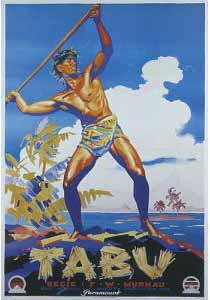


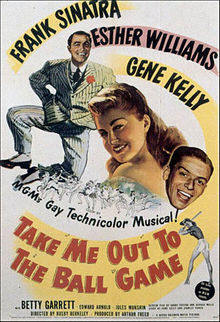

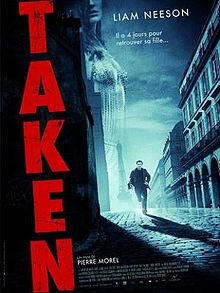
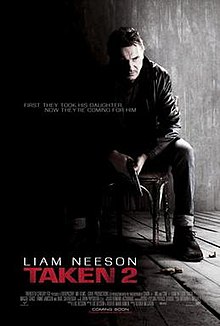
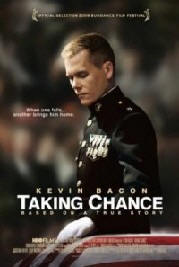
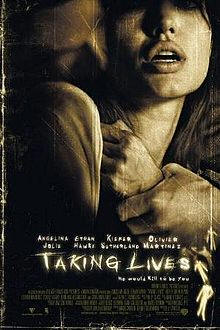
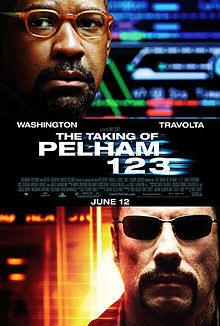
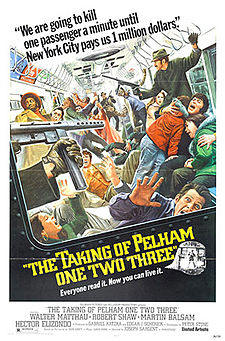


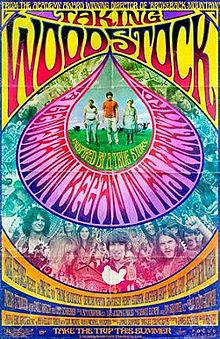
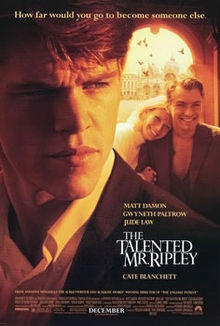
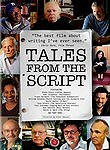
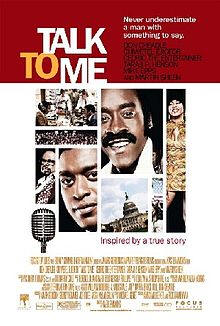

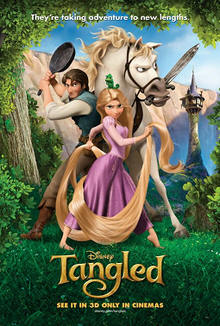


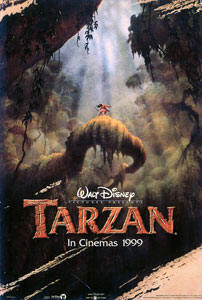
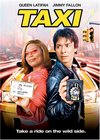



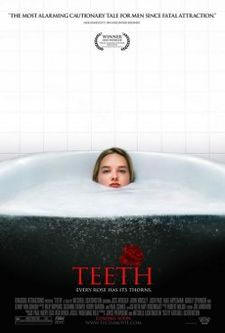
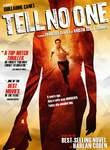
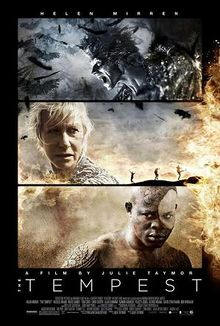
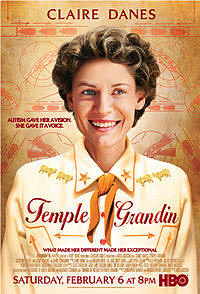
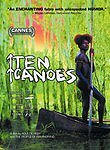

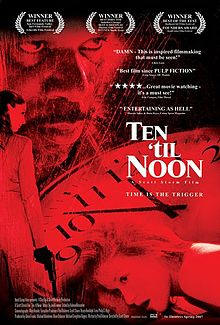

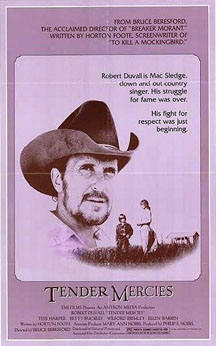
.jpg/220px-TensionPoster(VintageFilmNoir).jpg)

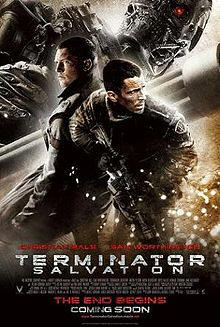
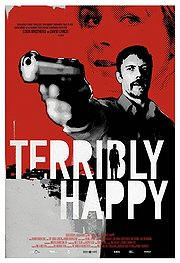

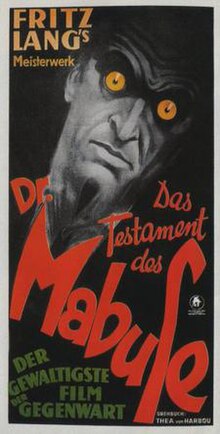
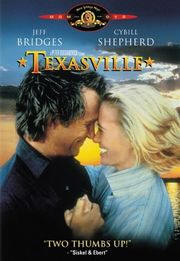
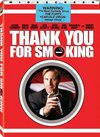
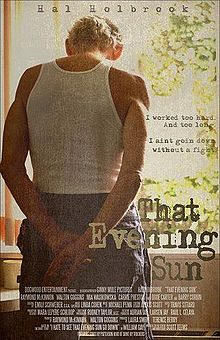

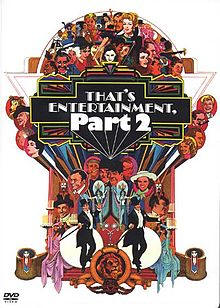
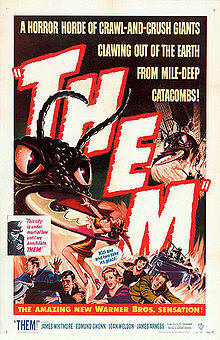

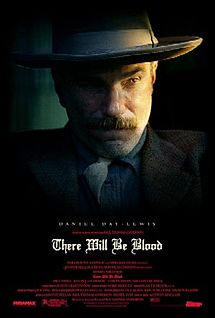


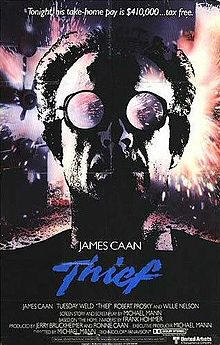
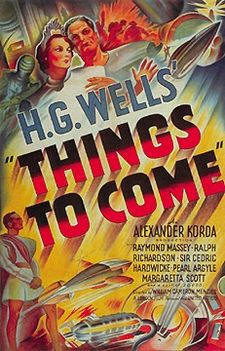
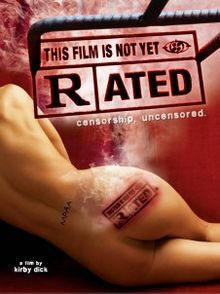

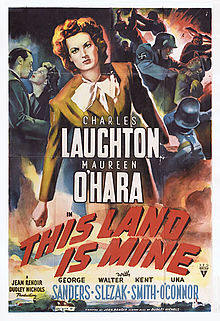
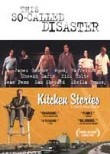
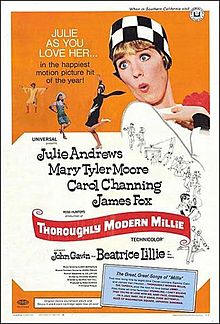

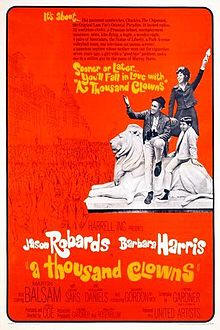
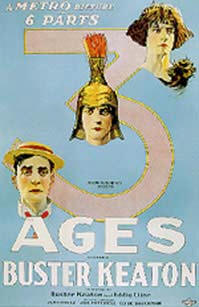

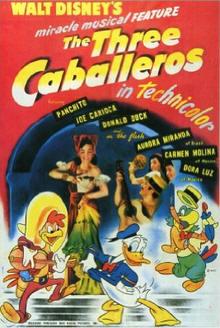
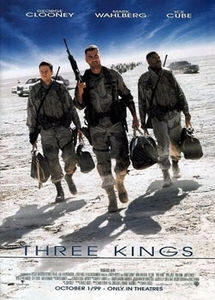

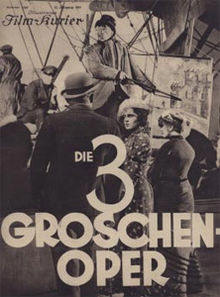
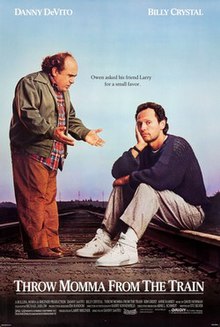
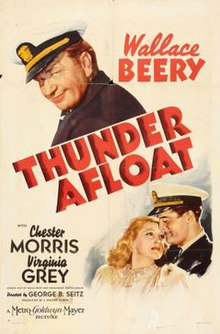

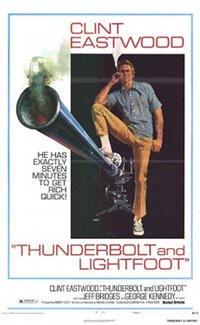
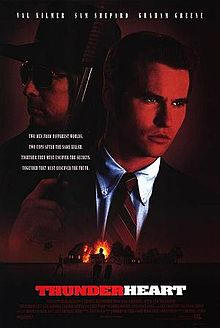
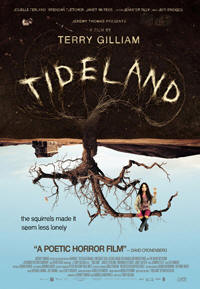
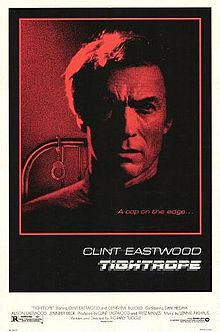
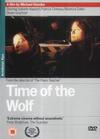


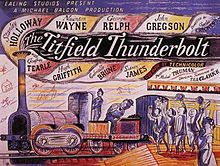
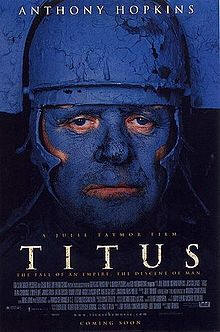



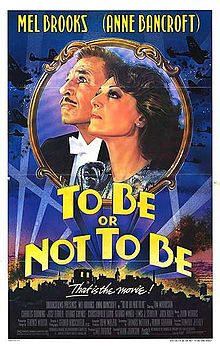
_poster.jpg/220px-To_Have_and_Have_Not_(1944_film)_poster.jpg)

